trends 2023

DESIGNWORLDONLINE.COM MOTIONCONTROLTIPS.COM MARCH 2023
SHA Rotary Actuator with Integrated Servo Drive
The SHA-IDT Series is a family of compact actuators that deliver high torque with exceptional accuracy and repeatability. These hollow shaft servo actuators feature Harmonic Drive® precision strain wave gears combined with a brushless servomotor, a brake, two magnetic absolute encoders and an integrated servo drive with CANopen® communication. This revolutionary product eliminates the need for an external drive and greatly simplifies wiring yet delivers high-positional accuracy and torsional stiffness in a compact housing.
• Actuator + Integrated Servo Drive utilizing CANopen® communication

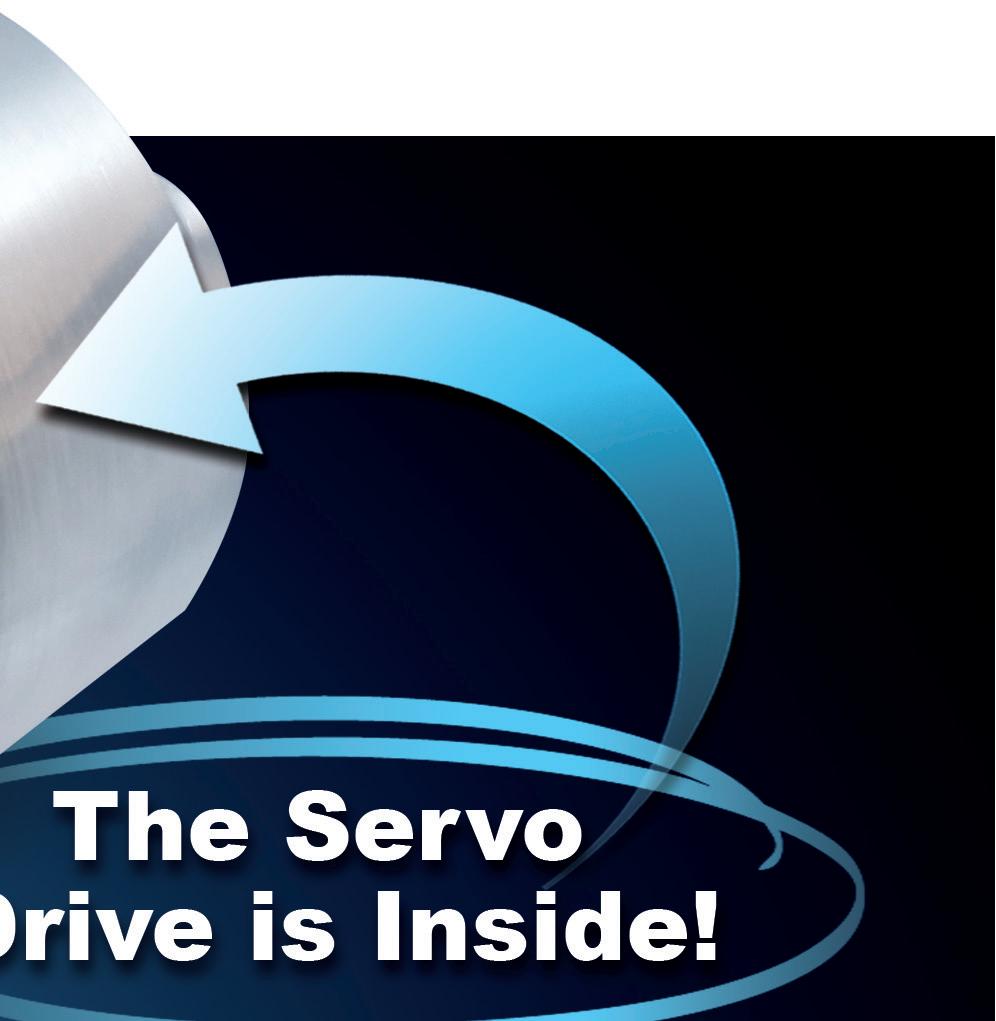
• 48 VDC nominal supply voltage
• A single cable with only 4 conductors is needed: CANH, CANL, +48VDC, 0VDC
• Zero Backlash
• Panel Mount Connectors with radial and axial options

• Dual Absolute Encoders


• Output Encoder: 16bit (65,536 cpr) resolution

• Input Encoder: 17bit (131,072 cpr) resolution
• Control Modes include: Torque, Velocity, and Position Control, CSP, CSV, CST

Simplify.
Harmonic Drive is a registered trademark of Harmonic Drive LLC. CANopen is a registered trademark of CAN in Automation. 42
| 800.921.3332 | www.HarmonicDrive.net
Dunham Ridge, Beverly, MA 01915
trends 2023

DESIGNWORLDONLINE.COM MOTIONCONTROLTIPS.COM MARCH 2023
: Agile machines with adaptive automation
Flying 2D product transport with up to 6 degrees of freedom
XPlanar enables new dimensions of freedom in product and material handling: Levitating planar movers fly over flexibly arranged planar tiles accommodating nearly any track layout and path planning.

Individual 2D transport at up to 2 m/s
Processing with up to 6 degrees of freedom
Transport and processing in one system
Wear-free, hygienic and easy to clean
Free arrangement of planar tiles enabling totally customized machine and process layouts
Multi-mover control enables parallel and individual product handling
Fully integrated into the powerful and standardized PC-based Beckhoff control system
(TwinCAT, PLC IEC 61131, Motion, Measurement, Machine Learning, Vision, Communication, HMI)
For use across all industries: assembly, packaging, food/bev, pharma, laboratory, entertainment, …






AT11-19US
Lifting by up to 5 mm Levitating planar movers Velocities up to 2 m/s Tilting by up to 5° 5° 360° rotation 360° Scalable payload kg Scan to experience XPlanar in action
Linear Motion Actuators








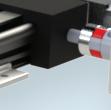


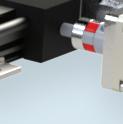


































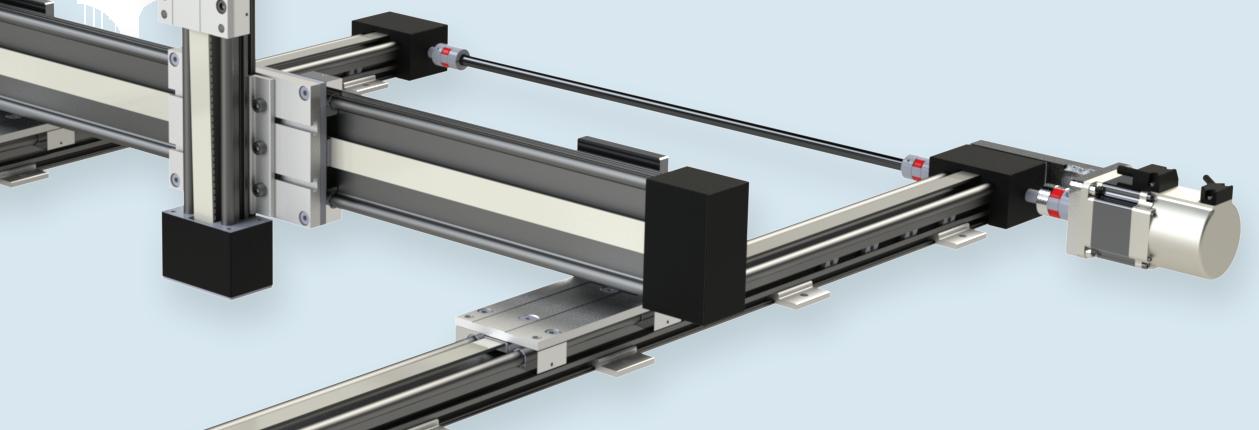


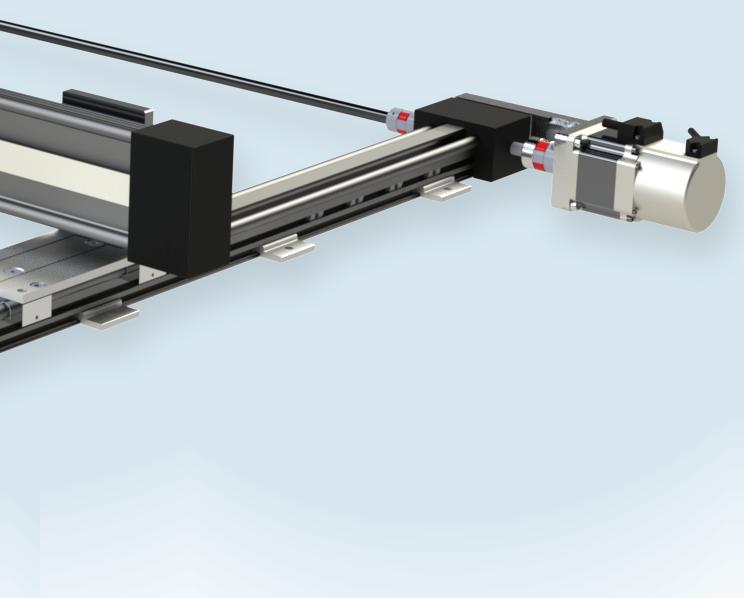










Starting at $355.00 (SAW1040-05-B)

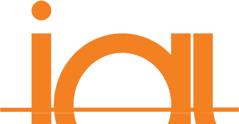























































































































































































































































































igus XYZ gantries offer an economical solution for creating a motion system with up to 3 axes of motion. These systems are available with belt driven or lead screw driven slides. They are easy to assemble, are stackable, and can be used as a single axis, double axis, dual drive axis, or as a complete 3-axis XYZ system.
Features:














































• Maintenance and lubrication free





























































































































































































































• 14 belt driven actuators from 200mm travel length to 1000mm travel length








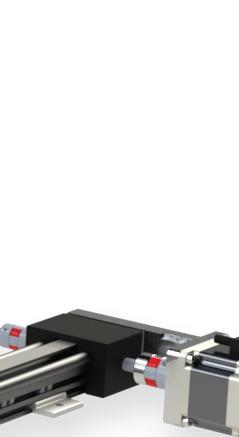
• 13 lead screw driven actuators from 100mm travel length to 750mm travel length
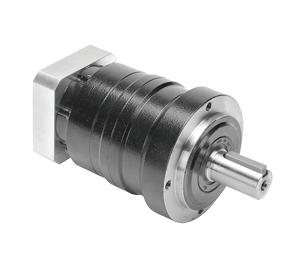

• Rails made from durable 6061-T6 aluminum with hard anodized finish
































• Motor mounts for SureServo and SureStep motors


• T-slots in rails allow switches and sensors to be easily installed


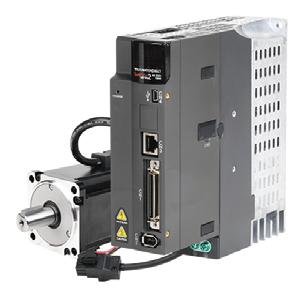




















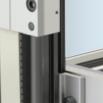




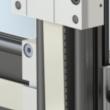


























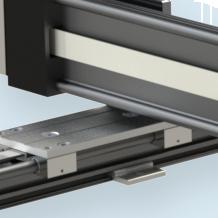

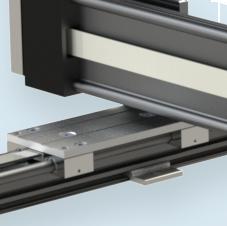












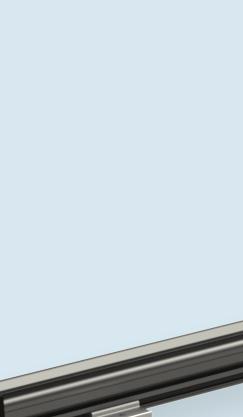


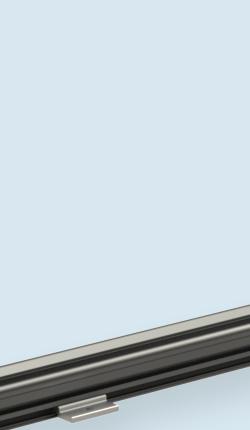


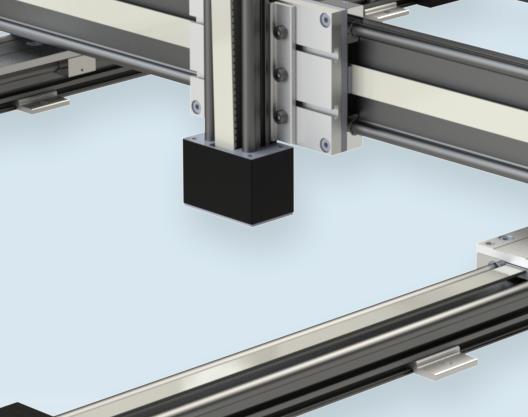








the #1 value in automation Order Today, Ships Fast! * See our Web site for details and restrictions. © Copyright 2022 AutomationDirect, Cumming, GA USA. All rights reserved. 1-800-633-0405 Gantry Components for Less Rugged industrial actuators & slides for demanding 24/7 applications Research, price, buy at: www.automationdirect.com/linear-motion Also Available Precision Gearboxes (for Stepper & Servo) Stepper Systems SureServo2 Servo Systems



Single-Flex, Double-Flex, Floating-Shaft Solutions • Standard Models / Fully Customizable • Engineering Assistance / Fast Delivery www.zero-max.com 800.533.1731 PRECISE.ROBUST.AVAILABLE.








volume 9 number 1
6 STAFF

8 SUPPLY-CHAIN & LABOR ISSUES
In its wake, the COVID pandemic left lingering supply-chain issues that are still affecting manufacturing and other automated industries. Now some slowdowns at least have cleared.
16 THE DIGITAL TRANSFORMATION · AI · CONNECTIVITY
24 EV s · e BIKES & AGV s


30 MOTORS & GEARMOTORS · DRIVES








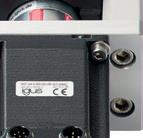


36 LINEAR MOTION—ACTUATORS · GUIDES · STAGES

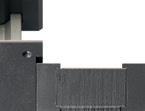
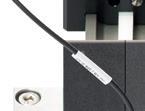





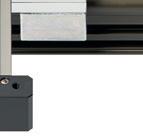






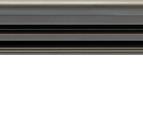

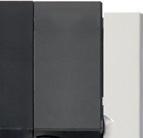







We recently asked several industry experts about trends they’re seeing in the design and use of linear actuators, linear guides, and stages. Here’s what those experts had to say.

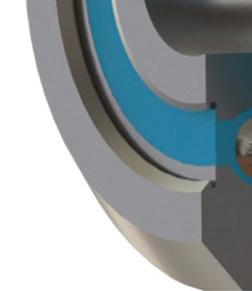

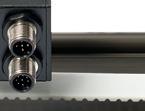

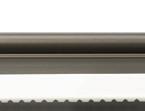
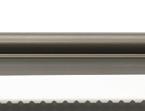



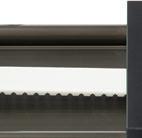






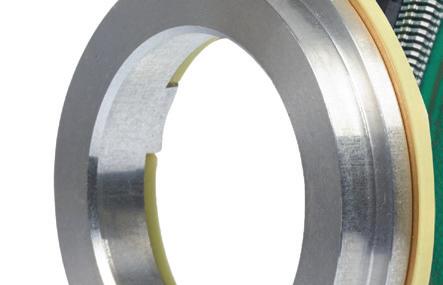
42 MOTION COMPONENTS IN THE FAST-FOOD INDUSTRY


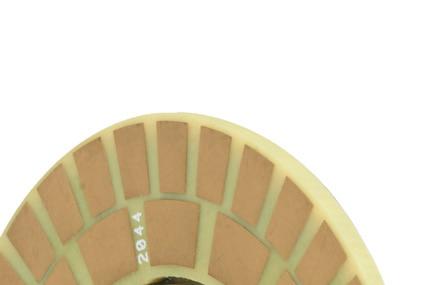
46 ENCODERS · SENSORS & FEEDBACK






50 SEMICONDUCTOR PRODUCTION










Semiconductor products were more affected than any other by COVID-induced supply-chain issues felt around the world. International political tensions have only prolonged and exacerbated the problem.


58 AGRICULTURE & OFF-HIGHWAY AUTOMATION
63 DESIGN SUPPORT · TRAINING & E-LEARNING





We recently asked several industry experts about trends they’re seeing in engineering training, software tools, and support. Here’s what those experts had to say.
68 AD INDEX
36
16
4 DESIGN WORLD — MOTION 3 • 2023 motioncontroltips.com | designworldonline.com
CONTENTS
8 46 42
Tired



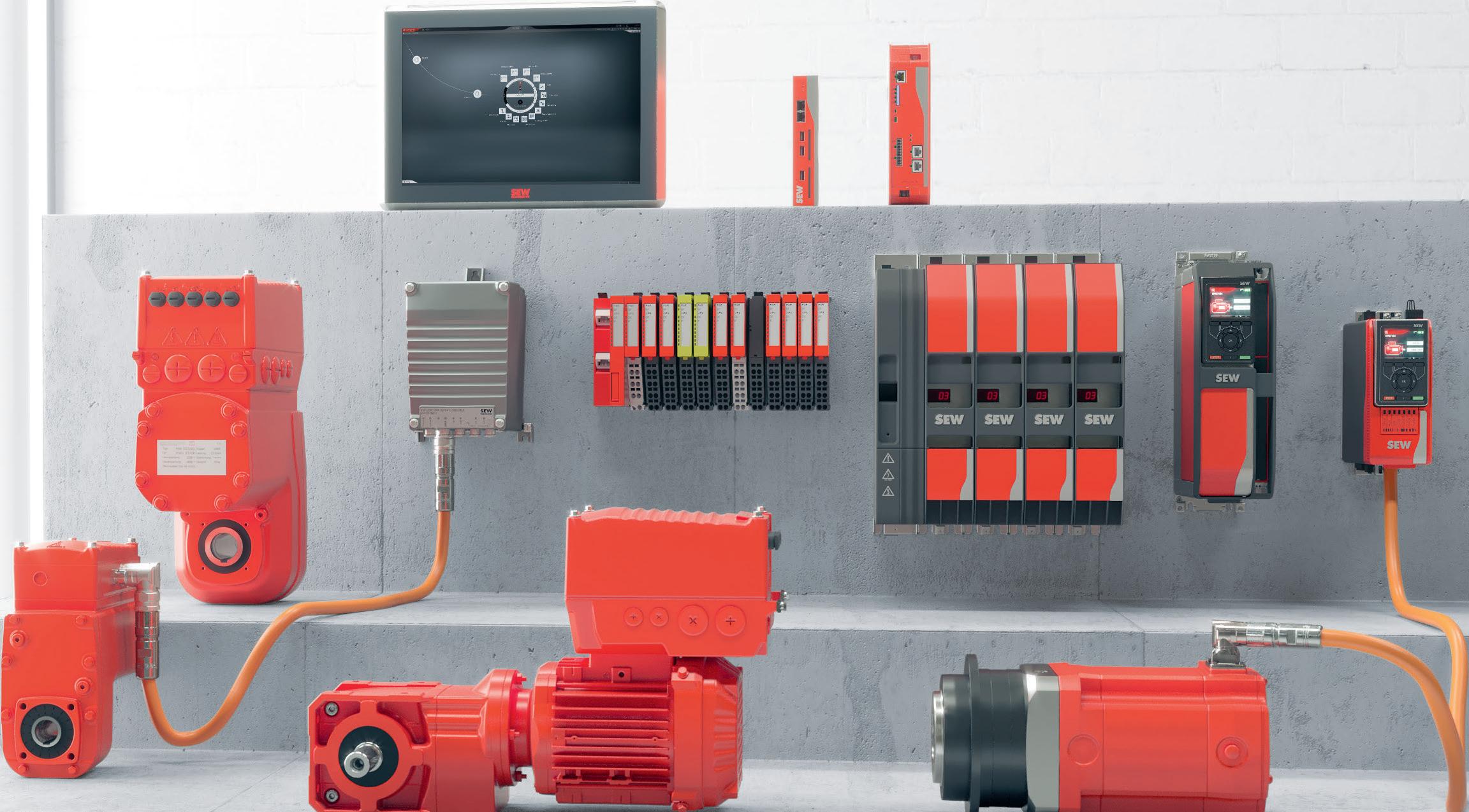






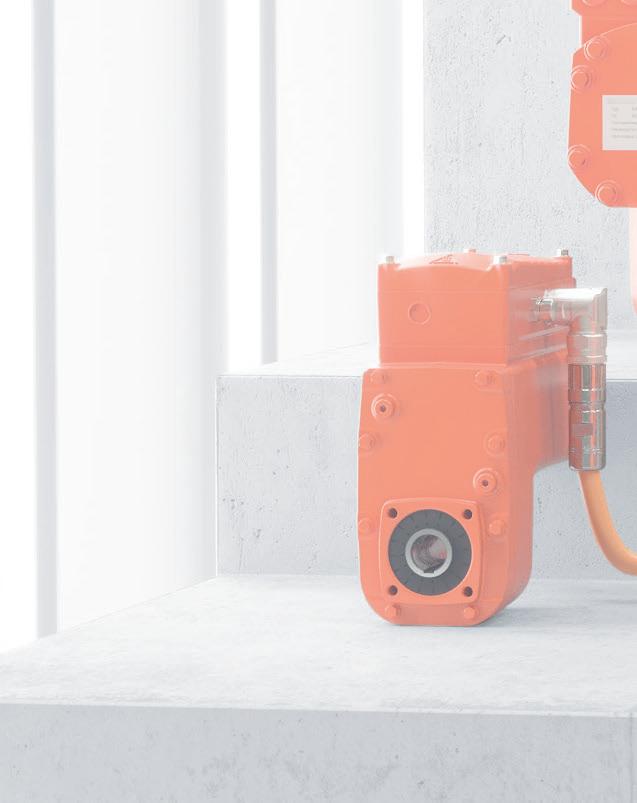





Automation made easy.
Check out our MOVI-C automation platform that features fully integrated drive components, control electronics and automation software – all from a single source –and all designed to work together perfectly! www.seweurodrive.com/movi-c
of compatibility headaches?
Design World’s Motion
An


DESIGN WORLD
follow the whole team on twitter @designworld
EDITORIAL
VP, Editorial Director Paul J. Heney pheney@wtwhmedia.com @wtwh_paulheney
Executive Editor Lisa Eitel leitel@wtwhmedia.com
@dw_LisaEitel
Managing Editor Mike Santora msantora@wtwhmedia.com @dw_MikeSantora
Senior Editor Miles Budimir mbudimir@wtwhmedia.com @dw_Motion
Senior Editor Mary Gannon mgannon@wtwhmedia.com @dw_MaryGannon
Senior Editor Rachael Pasini rpasini@wtwhmedia.com @WTWH_Rachael
Senior Contributing Editor Leslie Langnau llangnau@wtwhmedia.com @dw_3Dprinting
IN-PERSON EVENTS

Events Manager Jen Osborne jkolasky@wtwhmedia.com @wtwh_Jen
Event Marketing Specialist Olivia Zemanek ozemanek@wtwhmedia.com
VIDEOGRAPHY SERVICES
•
• Ball
•
• Couplings



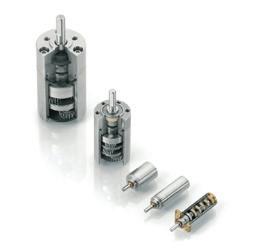
•
•
•
•
Classroom installments cover topics including essential power-transmission and motion-control technologies for an array of OEM machines, powered end-user products, servo drives, and automated installations.




Videographer Garrett McCafferty gmccafferty@wtwhmedia.com
Videographer Kara Singleton ksingleton@wtwhmedia.com
CREATIVE SERVICES & PRINT PRODUCTION

VP, Creative Services Mark Rook mrook@wtwhmedia.com @wtwh_graphics
Art Director Matthew Claney mclaney@wtwhmedia.com @wtwh_designer
Senior Graphic Designer Allison Washko awashko@wtwhmedia.com @wtwh_allison
Graphic Designer Mariel Evans mevans@wtwhmedia.com @wtwh_mariel
Director, Audience Development Bruce Sprague bsprague@wtwhmedia.com
ONLINE DEVELOPMENT & PRODUCTION
Web Development Manager B. David Miyares dmiyares@wtwhmedia.com @wtwh_WebDave
Senior Digital Media Manager Patrick Curran pcurran@wtwhmedia.com @wtwhseopatrick
Front End Developer Melissa Annand mannand@wtwhmedia.com
Software Engineer David Bozentka dbozentka@wtwhmedia.com
Digital Production Manager Reggie Hall rhall@wtwhmedia.com
Digital Production Specialist Elise Ondak eondak@wtwhmedia.com
Digital Production Specialist Nicole Johnson njohnson@wtwhmedia.com VP, Strategic Initiatives Jay Hopper jhopper@wtwhmedia.com
WTWH Media, LLC 1111 Superior Ave., Suite 2600 Cleveland, OH 44114 Ph: 888.543.2447 FAX: 888.543.2447

VP, Digital Marketing Virginia Goulding vgoulding@wtwhmedia.com @wtwh_virginia
Digital Marketing Manager Taylor Meade tmeade@wtwhmedia.com @Taylor Meade Digital Design Manager Samantha King sking@wtwhmedia.com
Marketing Graphic Designer Hannah Bragg hbragg@wtwhmedia.com
Webinar Coordinator Halle Kirsh hkirsh@wtwhmedia.com
Webinar Coordinator Kim Dorsey kdorsey@wtwhmedia.com
FINANCE
Controller Brian Korsberg bkorsberg@wtwhmedia.com
Accounts Receivable Specialist Jamila Milton jmilton@wtwhmedia.com
PRODUCTION SERVICES

Customer Service Manager Stephanie Hulett shulett@wtwhmedia.com
Customer Service Representative Tracy Powers tpowers@wtwhmedia.com
Customer Service Representative JoAnn Martin jmartin@wtwhmedia.com
Customer Service Representative Renee Massey-Linston renee@wtwhmedia.com
Customer Service Representative Trinidy Longgood tlonggood@wtwhmedia.com
DESIGN WORLD does not pass judgment on subjects of controversy nor enter into dispute with or between any individuals or organizations. DESIGN WORLD is also an independent forum for the expression of opinions relevant to industry issues. Letters to the editor and by-lined articles express the views of the author and not necessarily of the publisher or the publication. Every effort is made to provide accurate information; however, publisher assumes no responsibility for accuracy of submitted advertising and editorial information. Non-commissioned articles and news releases cannot be acknowledged. Unsolicited materials cannot be returned nor will this organization assume responsibility for their care.
DESIGN WORLD does not endorse any products, programs or services of advertisers or editorial contributors. Copyright© 2023 by WTWH Media, LLC. No part of this publication may be reproduced in any form or by any means, electronic or mechanical, or by recording, or by any information storage or retrieval system, without written permission from the publisher.
Subscription Rates: Free and controlled circulation to qualified subscribers. Non-qualified persons may subscribe at the following rates: U.S. and possessions: 1 year: $125; 2 years: $200; 3 years: $275; Canadian and foreign, 1 year: $195; only US funds are accepted. Single copies $15 each. Subscriptions are prepaid, and check or money orders only.
Subscriber Services: To order a subscription or change your address, please email: designworld@omeda.com, or visit our web site at www.designworldonline.com
POSTMASTER: Send address changes to: Design World, 1111 Superior Ave., Suite 2600, Cleveland, OH 44114















MARKETING 2011- 2020 2013 - 2017, 2021 2014- 2016 2014 Winner
Classroom
Control
online reference series for design engineers. Each motion installment features current trends, videos, typical and emerging applications and FAQs. learn more at: www.designworldonline.com/mc2
Screws
Carriers
Cable
Conveyors
Motors
DC
Gearing
Motors
Integrated
Linear Guides
+ More MC² installments include stay up-to-date MC²
6 DESIGN WORLD — MOTION 3 • 2023
•
...All In Less Space
BG Actuator–Greater Loads, Precision & Rigidity








Why our single axis ball screw slide guide bests the competition:
Four ball circuits (not just two) for moreload and accuracy
Single, U-shaped rigid steel rail and base can be one-end supported




Circuits positioned closer to base for more stability
Balls have 4, not just 2, points-of-contact to guide block and rail for optimum stability
1. 2.
3. 4.
AUTOMATION INDUSTRY ADDRESSES SUPPLY-CHAIN AND LABOR ISSUES
In its wake, the COVID pandemic left lingering supplychain issues that are still affecting manufacturing and other automated industries. Now some slowdowns at least have cleared.
The last few years’ supply-chain issues have featured container ships waiting weeks for cargo unloading; empty shelves at stores; year-long waits for appliances; per-customer quantity limits on basic necessities; beleaguered online vendors struggling to maintain inventory; baby-formula fiascos; and various other back-ordered (and unavailable) parts and subcomponents in all industries. Today, shipments of goods have largely recovered, though data indicates the global supply chain in some markets continues to falter.

In fact, recoveries in shipping times and inventories may be due to the cooling effects of inflation and its discouragement of spending. Some predict the economic weakness of early 2023 will allow supply chains to recover and fully stabilize by 2024. But making business ventures even more challenging are the labor-shortage issues that have accompanied those on the supply side during COVID.
To be clear, most industry experts we surveyed for the 2023 Design World Trends issue don’t expect a fully normal supply chain or labor market for another year. Read on for the details.
Since the disruptions of COVID, which supply-chain issues have you seen persist or evolve?
Gallant: Raw material leadtimes are still longest, especially coming from Asia. However, we’ve seen significant improvement
8 DESIGN WORLD — MOTION 3 • 2023 motioncontroltips.com | designworldonline.com design world trends
in logistics. Transit times have been reduced both internationally and domestically. We work with our customers very closely to plan out production timelines to ensure we factor in all manufacturing and logistical leadtimes.
Mowry: Most major supply-chain issues that peaked during COVID have improved. Notably, the availability of aluminum extrusions, which had severe leadtimes over the past couple of years, has recovered.
K. Walden: We’ve seen persistently longer leadtimes on raw materials — particularly for stainless steel and electronics items. So, we’ve implemented elevated stock holdings in strategic areas and established new suppliers and supply-chain options. We’ve also looked to re-engineer materials or production processes for leadtime reductions.
Gottlieb: We’ve seen supply-chain issues across the supply base and transportation sectors. It only takes one part to create a shortage on a final assembly, and we’ve experienced various issues from our vendors in market sectors mentioned in the news — semiconductors, materials — and those affected by transportation bottlenecks, cybercrime,
and natural disasters. Kollmorgen works aggressively to keep materials flowing through broker purchases and engineering redesigns.
Miller: Supply-chain issues have probably been the single most predominant challenge for our suppliers and customers over the past two to three years. Automation manufacturers’ leadtimes have skyrocketed industrywide — forcing customers to seek alternative solutions and, in some cases, make concessions where they normally would not.


Manufacturers also face obscene leadtimes for component parts and shortages — driving them to either work through brokerage firms (which drives up cost) or design in substitute components, often adding cost and complexity to the products they sell. Products with integrated microchips appear to be hardest hit in this area.


As a distributor and manufacturer of many motion control products, one way Motion Plus has worked to mitigate these challenges is to put extensive amounts of finishedgoods inventory on the shelf. We’ve done so on products like stages, motors, drives, and controllers, which are often highly configurable. There’s some risk in doing this, as it’s nearly impossible to cover every configuration option

- brushed or bldc motors




- 5 amps per axis

- 16 analog inputs
- 16 on/off drivers
- home and limit in

- live tech support
- made in the USA WWW.ALLMOTION.COM
supply-chain & labor issues
(Image courtesy of Sergii Sverdielov • Dreamstime)
(510) 471-4000 30097 Ahern Avenue Union City, CA 94587 Technical Support (408) 460-1345 See the EZQUAD SERVO in action!
4 AXIS SERVO from NEW! 9 DESIGN WORLD — MOTION 3 • 2023
2.25”




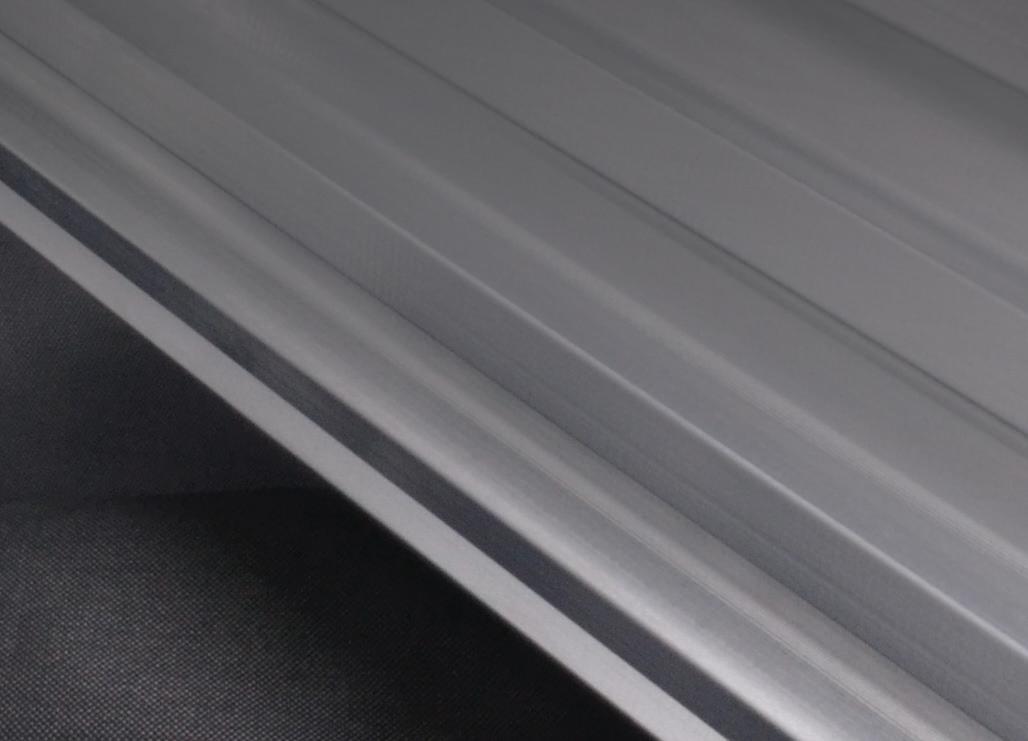

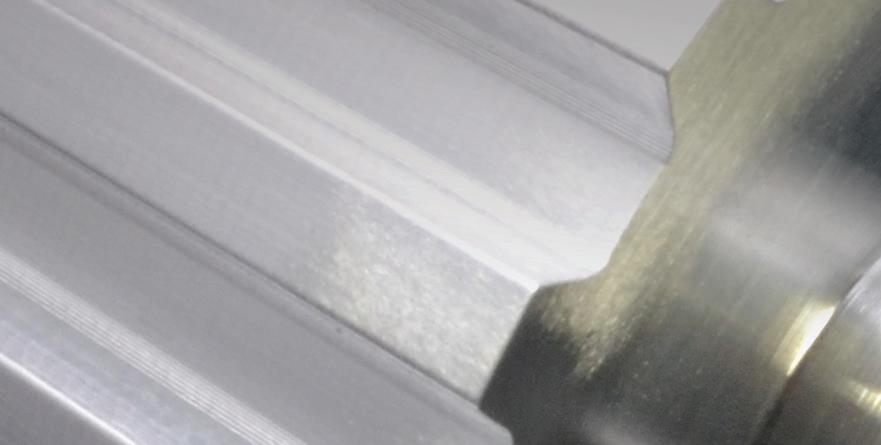










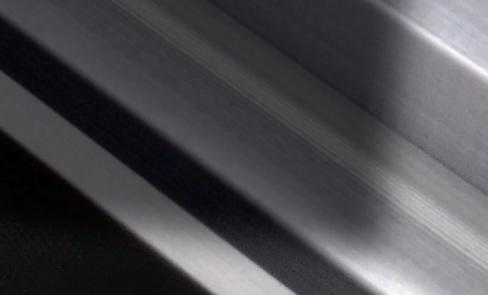















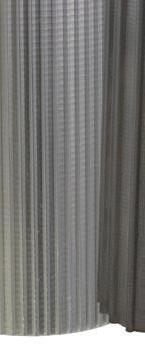










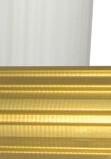







Custom Machine & Tool Co., Inc. 800-355-5949 sales@cmtco.com www.cmtco.com Precise. Reliable. Trusted. American Engineering | American Made © Custom Machine & Tool Co., Inc. Manufacturer of Power Transmission and Motion Control Components Timing Pulley Stock We guarantee your pulley stock order* ships within 72 hours or we pay the UPS ground freight charges. *Exclusions apply Email or call to get your Pulley Stock 72-Hour Shipping Program Catalog.
for every application/customer. However, we’ve found the 80/20 rule to be applicable here. If we stock the most commonly used options, they can usually work for most applications, and often customers are willing to accept a slight deviation to their exact part number if it means getting a product in days instead of weeks or even months.
T. Schroeder: In most sectors, the supply chain is starting to normalize. Suppliers have been catching up on backlogs, costs are starting to come down, and ocean freight costs have decreased. Electronics components are still lagging behind the rest of the sectors … and that’s causing complications and production delays. Companies are starting to transition back to a just-in-time inventory and reduce built-up inventory that was created during surging demands and supply chain uncertainty from COVID and recession worries.
Supplier diversification and strong supplier relationships have been critical … and will be critical through the next few years.
Varley: Many of our customers are still experiencing periodic component delivery issues. We’ve been working internally to increase production and meet the delivery dates that we provide to our customers.

Eidelberg: SAAR Inc. is active in exoskeleton product development and is experiencing no supplychain issues.
Sandys: With challenges due to supply chain shortages over the past three years, innovation stalled and temporarily took a backseat. However, with the worst behind us, we’re now seeing innovation escalate and even leapfrog where it would’ve been had the pandemic not happened. Now, the pace of innovation is on an unprecedented trajectory as new technologies are available to make designing products easier. In addition, the availability of parts is again expanding — along with the maker community’s sheer enthusiasm and excitement to innovate. These makers (and the ecosystem around them) are priming an innovation renaissance.
Gumas: Ruland has been fortunate that we’ve had no supply-chain disruptions. Our supply chain is primarily North American, which has limited the direct impact of availability — but not price.
In fact, we’ve always viewed our supply chain as critical to our ability to have industry-leading leadtimes and on-time delivery. The JIT model that many manufacturers have successfully implemented throughout the years was too risky for us in the event of an unforeseen
shortage. Our competency is the ability to quickly manufacture products, not manage a complex global supply-chain network.
How are you addressing any lingering supply-chain and labor problems?
Andaya: Procuring electronic components for products has been a struggle. Domestic labor shortages have also made maintaining experienced folks on the production line challenging. We’re addressing the supply-chain issues by sourcing some components from the open market and purchasing them well in advance. So, we’ve increased labor rates, and we’re in the process of adding a new production line with cobots.
Zaske: The last three years have been very dynamic for various reasons. 2022 was challenging with long supplier leadtimes, a tight labor market, inflationary pricing, and delayed deliveries. We’ve pulled a number of levers to address these issues, but one of the most important was our initiative to attract and retain employees. We organized a special group that helped us make several significant changes in a short period to stabilize and grow our workforce.
Andaya: Electric linear actuators and electric linear columns have been key to our growth in several markets. Because these actuators are intelligent, they can work on equipment compatible with collaborative robots (cobots) and logistics and warehousing equipment to reduce the labor needed for a given task. In fact, our products excel at assuming the mundane labor of operations involving repetitive motions.
Is
your company supplying robotics to address the manufacturing industry’s skilled labor shortage?
Mowry: We’re working hard to promote our line of linear actuators and Low-Cost Automation (LCA)
11 DESIGN WORLD — MOTION 3 • 2023 motioncontroltips.com | designworldonline.com supply-chain & labor issues
Copia can display code in a web browser to help managers and new hires more efficiently communicate about a given codebase.
robots that help customers realize a rapid return on their investment … typically within six months. igus LCA robots include gantries, delta robots, articulated arms, and low-cost master control systems. Because we’re also a linear component manufacturer, we supply many parts that give engineers the flexibility to build their own lowcost robotic solutions.
Eidelberg: Our company focuses on reinforcement learning motion control technology of exoskeletons. We believe that reinforcement learning is the future of autonomous system control. It optimizes the real-time machine’s decision-making process in unpredictable environments to maximize intended performance.
Exoskeletons and humanoids are examples of such autonomous machines. Both are expected to increase the mobility and functionality of industrial employees as well as address a potential labor shortage. Tesla and Hyundai, for example, have spent billions of dollars developing reinforcement learning motion control technology for humanoid and other robots expected to support their manufacturing needs.
Varley: We’re seeing a strong increase in the amount of interest in our robotic and automation products. By automating processes, our customers are able to maintain steady production regardless of the impacts of the labor shortage.
Gumas: Ruland products are commonly used on robots, conveyors, and machine tools that help the modern manufacturer automate to solve skilled-labor shortages. For example, autonomous mobile robots or AMRs use couplings for the drive system; shaft collars to keep internal components in place; and vibrationisolation mounts to damp vibration during operation. These robots move throughout factories to transit parts, materials, and consumables — increasing the efficiency of current employees who no longer
have to manually move these items throughout the day. Ruland products are critical in such systems to address acute labor shortages and limit the long-term need for new employees.
What other automation technologies are helping address skilled labor shortages?
Kan: COVID hastened the pace at which companies aim to automate their processes. Projects that were perhaps considered five years out are (all of a sudden) a top priority. Our technologies help solve the
toughest automation challenges in contaminated and extreme environments. We’re also proud to automate dangerous workplace settings and reduce worker exposure to environments that may not be healthiest for direct human interaction.
Rice: Our Regional Service Center in Mason, Ohio, has a customersolutions department. This unit is experiencing exponential growth for its custom assembly and test-before-ship services. Festo’s internal systems and economies

12 DESIGN WORLD — MOTION 3 • 2023 motioncontroltips.com | designworldonline.com
design world trends
Festo industrial-automationbased XY tables and Cartesian gantries offer economies of scale and robustness unmatched by lab-device OEM systems. (Image courtesy of Festo)
of scale make these custom solutions practical, allowing OEMs to embed unique assemblies in their machines. These designs include custom air-preparation units, valve manifolds, and Cartesian systems. There’s no industry or system complexity for which we don't work with its customers. Our efforts revolve around motion automation.
Gluck: Copia Automation helps operations leverage in-house expertise to quickly onboard new hires. With Copia’s ability to show PLC code directly in a web browser, checking a colleague’s work is convenient and easy. New hires better understand the codebase, track changes, and contribute to the project without disrupting the work of other developers. Further, senior engineers can continuously review the new hire’s changes and directly comment on any concerns about rungs, blocks, and tags. Skills increase as senior engineers share their knowledge.

Andaya: In addition to helping our customers reduce the need for manufacturing labor, we’re able to make the work environment more attractive for existing laborers. We do this by using electric linear columns to make workstations ergonomic, which increases employee satisfaction and reduces workplace injuries.
K. Walden: Our company offers a broad range of motion solutions that are integral to automation. These include linear and curvilinear components, actuators, and even seventh-axis designs and more complex systems. Working in-house to automate our own production processes — and with our customers to solve their automation challenges — we’ve developed some great solutions.
Sharkey: The pandemic hastened demand for automated sample handling and fluid-dispensing systems in laboratory devices. Festo industrial-automation-based XY tables and Cartesian gantries offer economies of scale and robustness that lab device OEM systems simply cannot rival. Outsourcing lab device mechatronics enables the OEMs to concentrate on science — their value add — while relying on suppliers such as Festo to assemble,
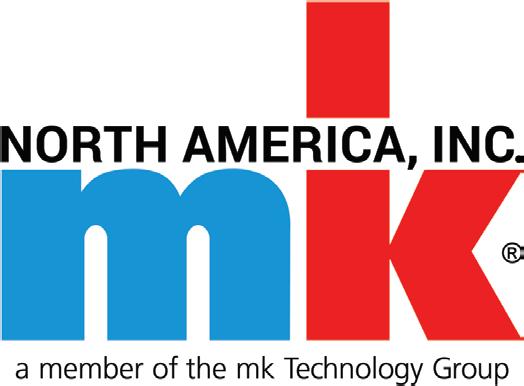
13 DESIGN WORLD — MOTION supply-chain & labor issues better products. better solutions. (860) 769-5500 | info@mknorthamerica.com Find your next conveyor solution at Automate. May 22-25, 2023 | Detroit Booth 2207 Register for free using the link or QR and you’ll be invited to all of our special events at Automate. https://bit.ly/mkAutomate
test, and deliver drop-in solutions.
In 2018, Festo opened its LifeTech Technology Engineering Center in greater Boston. This center provides customers with consultative engineering services for their new product development and Festo with new product development in laboratory automation and microfluidics. During the pandemic, the team at the Festo Technology Engineering Center worked tirelessly with customers to meet expanding demand, and the center has grown its staff and capabilities accordingly.
Hansen: Adopting software solutions such as Epicor Kinetic (our manufacturing-specific solution) can bolster businesses’ competitive edge when hiring. As skill gaps and labor shortages continue, positioning a business as a forward-thinking organization — with tools in place to make potential new hires’ jobs easier — can be a deciding factor. Today’s high-value candidates are looking for places to work that are rich with new and intuitive technology. Enterprise software implementation combined with automation are the technology
MEET THE EXPERTS
building blocks manufacturers can employ to improve bottom lines while operating with a slimmer workforce.
Gottlieb: Kollmorgen’s motion control expertise is central to helping with the labor shortage. Our products are truly the brains, heart, and muscle of making global manufacturing safer and more efficient. Products such as the SafeMotion and Safety2G with Kollmorgen’s AKD2G servo drives (which follow IEC 61508) let production operators safely interact live with the machine under controlled and statistically reasonable conditions. In conjunction with a risk assessment and development from the machine builder, speed can be monitored with functions like SafeSpeed and SafePosition, while movement — or lack thereof under a SafeStop function set — is monitored via Safe Brake Control, Safe Brake Test, Safe Stop 1, and Safe Dynamic Brake. Resident safety in the servo drive allows for speed in monitoring and actuation at servo update-rate loop times.
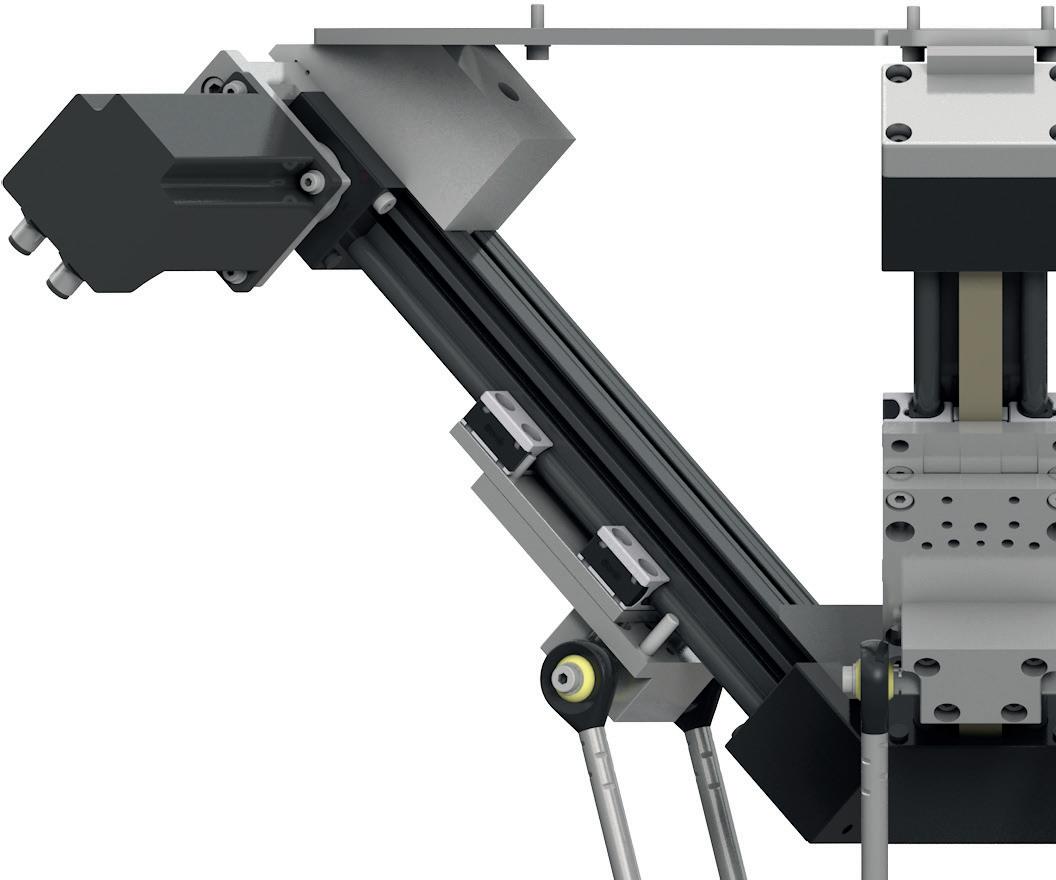
Setup in the Kollmorgen Workbench aids the OEM with
James Gallant | Director of operations • ISL Products International Ltd.
Boaz Eidelberg | CTO • SAAR Inc.
Matt Mowry | Product manager — drylin linear bearings • igus Inc.
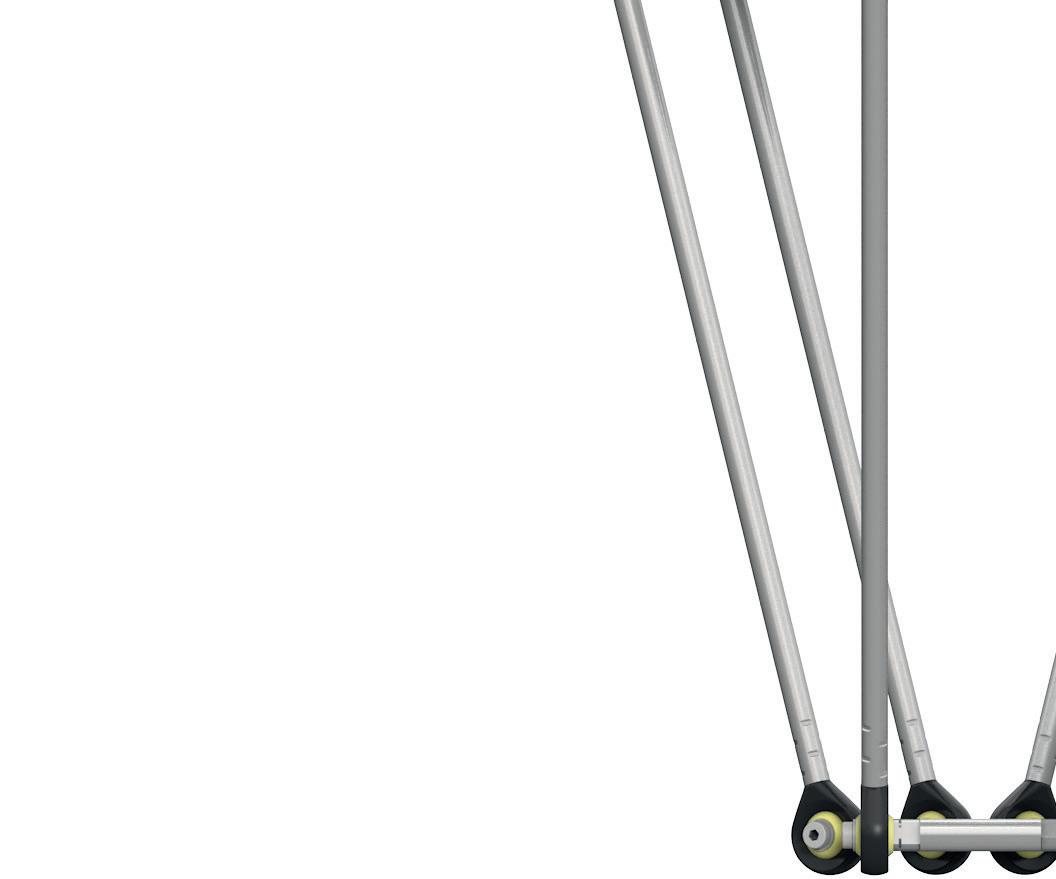
Adam Gluck | Founder & CEO • Copia Automation
Kelly Walden | V.P. of manufacturing • Bishop-Wisecarver Corp.
Tim Sharkey | Director of market management for electric automation • Festo
Chris Gumas | Director of marketing • Ruland Manufacturing
Pamela Kan | President and owner • Bishop-Wisecarver Corp.
Jeremy Miller | President • Motion Plus
Patrick Varley | Product marketing manager — mechatronics • Mitsubishi Electric Automation
Chris Gottlieb | Director — Drives and controls • Kollmorgen
Christine Hansen | Director of product marketing manufacturing • Epicor
Eric Rice | Product market manager — Electric Automation • Festo
Tom Schroeder | Executive V.P. • PBC Linear
Dave Walden | Applications engineer • PBC Linear

Nathan Andaya| Director — Techline strategic business unit • LINAK U.S.
David Sandys | Director of technical marketing • Digi-Key Electronics
Andy Zaske | V.P. of sales and marketing • Tolomatic
a programming methodology engineers know and with which they’re familiar. Fail Safe over EtherCAT (FSoE) combined with the installation of the Safe Encoder in the system’s servomotor save additional time for the OEM during initial machine wiring.

Hansen: While there are several ways technology is helping address the manufacturing labor shortage, most notable to Epicor customers is the way enterprise resource planning or ERP offers automation benefits that allow for continued operational efficiency from the shop floor to the top floor. For example, on the shop floor, software automation can help when connecting machines and automating the informationgathering process. This can improve efficiency — allowing more parts to be made with fewer resources, less machine time, and ultimately less labor.
On the other hand, automation can significantly assist top-floor operations such as onboarding or other tedious necessities that take
away from revenue-generating tasks. Refocusing those employees on projects that drive revenue for the company lets that company grow without hiring additional labor.
Miller: Automation will continue to play a key role in solving the growing demand and subsequent shortage of frontline workers in industry — especially as the trend of reshoring manufacturing back to U.S. locations continues to build. At Motion Plus, we manufacture and distribute automation products and solutions that are integrated into machinery used to reduce the burden on manual labor. Whether to maximize productivity for any particular repetitive operation (while also mitigating repetitive strain injuries) or just to optimize a particular process through the precise operation that only a motion control system can provide, it’s truly exciting to be part of the wave of automation driving manufacturing innovation now and into the future.
14 DESIGN WORLD — MOTION 3 • 2023 motioncontroltips.com | designworldonline.com
design world trends
Low-Cost Automation (LCA) robots have a rapid return on investment for endusers who aim to automate simple processes. (Image courtesy of igus)
Better Performance. Smarter Motion.

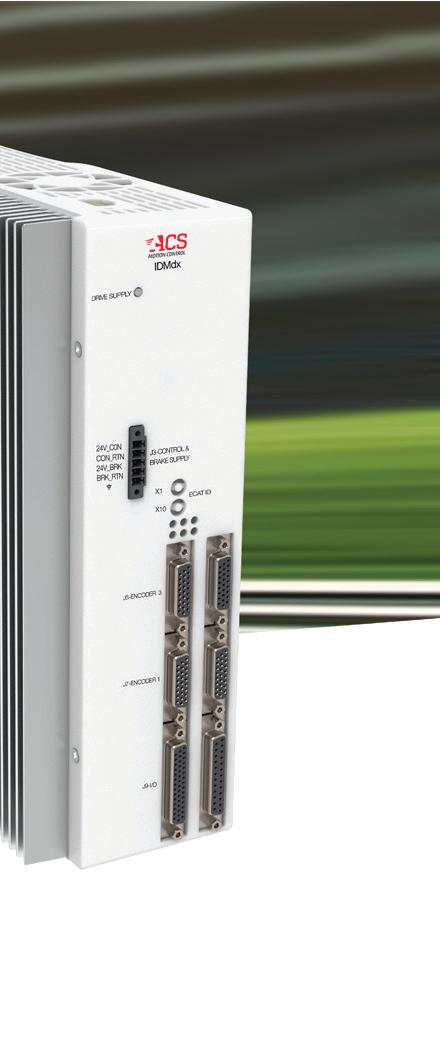


Designing advanced semiconductor, electronics, or display manufacturing equipment? Challenge us with your high-performance OEM motion control application! www.acsmotioncontrol.com Meet the Intelligent Drive Module (IDM) Seriesdrives designed to maximize high-precision motion stage performance in high-tech manufacturing equipment. • Advanced servo control algorithms and performance optimization tools • High-frequency position-based I/O for device triggering and data capture
Single- and multi-axis models for single- and multi-axis stages
•
PART 1 OF 2: INDUSTRIAL CONNECTIVITY AND DIGITAL-TRANSFORMATION TRENDS

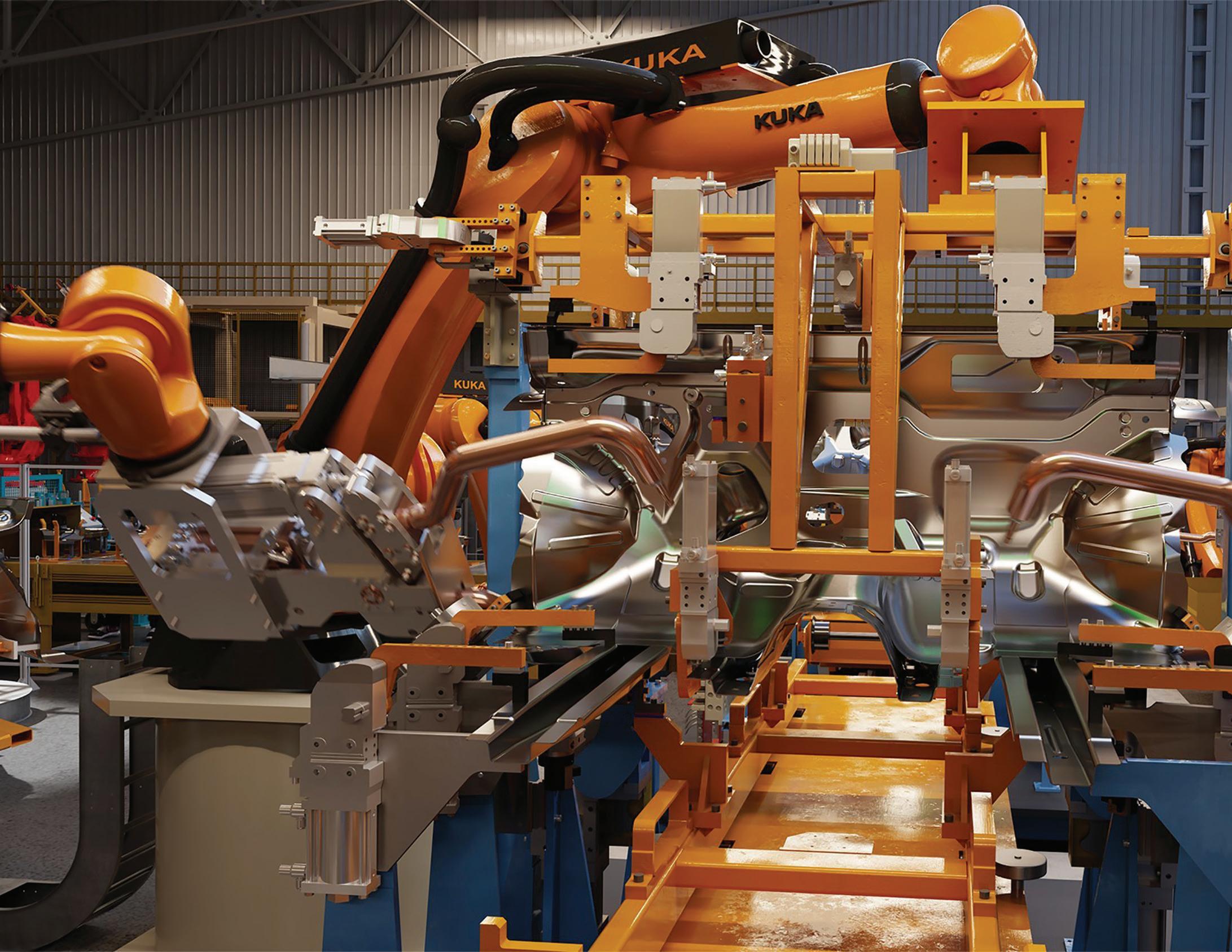
16 DESIGN WORLD — MOTION 3 • 2023 motioncontroltips.com | designworldonline.com design world trends
Read Part 2 of this series here.
Together, NVIDIA artificial intelligence (AI) and Siemens industrial-automation tools now enable an industrial metaverse for the generation of digital-twins. More specifically, the companies have connected the open digital Siemens Xcelerator business platform and NVIDIA Omniverse 3D design platform for physics-based digital models and realtime AI to help companies make faster and more informed decisions to boost productivity. Adding Omniverse to the Xcelerator partner ecosystem is accelerating the use of digital twins.
Discrete automation’s edge devices include actuators, sensors, and connectivity components such as gateways and motor-mounted controllers. Many of these components feature computational capabilities to minimize data bandwidth and latency issues associated with legacy versions of centralized control. Their installation at the furthest reaches of automated equipment means their processing power is situated to filter and analyze data before it’s sent onward to central controls or connected cloud systems. But as our 2023 Trends panelists point out, the usefulness of such components ultimately relies on their interoperability with various machine systems.
Detail your involvement in efforts to promote standards for increased compatibilities and interoperability. Quintero: The pandemic, chip shortages, and supply-chain issues have forced endusers to be more receptive to working with various control vendors and not standardize on one. Openness to specifying controllers from an array of suppliers is rippling through the OEM community. One day an OEM may work on a Rockwell system, the next day Siemens, and the next day Beckhoff and Omron. Festo’s response has been to develop next generation multiprotocol solutions. For example, our new servodrive supports EtherNet/IP, PROFINET, EtherCAT, and Modbus TCP. OEMs benefit from having one multi-purpose drive and not having to commission a drive for every protocol. A single series reduces an OEM’s learning curve to a single system, lowers its inventory requirements, and simplifies support.
Patel: Improvements in PCB design and highdensity connectors has allowed maxon to develop low-profile micro-position controllers. The EPOS4 micro from maxon can provide 5 A continuously and 15 A peak and is available with CAN or EtherCAT communication.
Gottlieb: Kollmorgen belongs to the ODVA and EtherCAT global groups as well as ZVEI in Germany. We do plug fests to test regimens in and out of the groups, and I’ll say interoperability is really important — because design engineers have choices. Product and specification collaboration helps users maximize development and production efficiencies. So, a machine builder can use one servodrive with different protocol options — with one programming experience no matter the protocol to improve OEM time to market.
Product Finder helps you specify the performance characteristics, mechanical features and interface options you need.

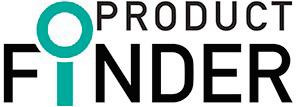
POSITAL’s advanced production systems will custom-build devices that meet your requirements and ship them to you quickly. Minimum order quantity - one! For online purchases, try POSITAL’s new WebShop.
www.posital.com

YOUR ONE-STOP SHOP FOR POSITION AND MOTION SENSORS!
Encoders, Inclinometers, and Linear Sensors: Built to your specs!
the digital transformation • ai • connectivity 17 DESIGN WORLD — MOTION 3 • 2023
Sharkey: Endusers tell us that the benefits of multi-protocol components ripple through their organizations by making inventory, training, machine schematics, wiring, and part numbers more efficient. A single servodrive series and next-generation decentralized I/O help them more effectively serve a wide range of customer requirements. For example, the latest Festo servodrives come with a function-block software library. With PLCopen and other standards, the OEM commissions the drive in the same way for different PLCs. This is a timesaver and lowers the risk of programming errors.
Festo’s new drives can also be accessed via a standard web browser. On multiple-drive machines, OEMs program the drive once, and then the same file is used to set up the remaining files by uploading a parameter file via a web browser. Operators can view drive operation via the web browser; programming issues can be remotely handled, and remote operators can also guide maintenance personnel working on the drives.
Kan: We’re longtime members of the Power Transmission Distributors Association (PTDA) and the Association for High Technology Distribution (AHTD). These groups have created industry standards that make it easier to do business. More recently we’ve joined the Association for Advancing Automation (A3) to better serve in all areas of automation.
Gumas: Ruland has been a PTDA member for many years. The association recently announced it will license the Bearing Specialists Association (BSA) product information exchange (PIE) standard for bearings and add categories for shaft collars and couplings. Data normalization is critical for manufacturers to communicate with distributors, OEMs, and endusers in today’s economy.
For example, in our coupling line, the bore size can be called the bore, internal diameter, or shaft size. In everyday language, these terms are interchangeable. In internet speak, these are three different terms. When Ruland works with a distributor, they may use the term shaft size, and Ruland may use bore. Mapping analogous terms (even for straightforward attributes) can require significant human intervention. We have more than 500 attributes at Ruland — any of which can have this challenge.
The PIE seeks to normalize our industry’s language, so everyone works from the same template. Soon, manufacturers will be able to create one map to export their product information management (PIM) data to the PIE standard; then distributors, OEMs, and endusers will be able to create one map to import data to their PIM.
Normalization will significantly improve efficiency for engineers, maintenance personnel, and distributor personnel who use this data in their day-to-day work.
Quintero: The proliferation of control architectures is also
spurring more adoption of international standards. For example, Festo is a member of the PLCopen community and has adopted the IEC 61131-3 standard for programming languages such as structured text, ladder, and continuous function chart as well as motion control. We believe in a multi-vendor multi-protocol world, standards such as 61131-3 benefit everyone with less engineering time and greater ease of use.
Sophisticated connectivity for flatter architectures
When picturing a discrete automation installation, many engineers conjure the traditional automation-communications pyramid. Such architectures include data exchanges between field-level sensors and higher implementation layers with communications between controls — all ultimately linking into the pinnacle of the enterprise level. But several technologies have facilitated distributed and intelligent systems with flatter machinery communication structures:
• Today’s software (along with industrial apps not unlike those for consumer-grade mobile devices)
• Newer options such as cloud services — as one networking example
• Hardware such as programmable automation controllers (PACs) and smart field devices — as two component examples
As our panelists explain, these
technologies have changed the structure of the intelligent factory floor over the last decade.


What other connectivity and smart-factory trends have you seen over the last year?
Johannes: There’s a major drive to provide both Ethernet and USB protocols via ruggedized custom interconnects (not standard connectors) for medical, industrial, aerospace, and automotive designs. These are challenged by the need to support much longer transmission lengths than those satisfied by copper-based systems. So, non-return-to-zero (NRZ) and pulse-amplitude modulation (PAM) techniques are being applied to minimize attenuation and copper’s impact on signal integrity.
LEMO has rugged miniature circular connectors and systems to support USB 3.1 and Ethernet protocols for severe environments.
Quintero: The new Festo decentralized I/O is communications-protocol independent and offers a unified architecture for electric and pneumatic motion, digital and analog signals, and IIoT capabilities. It has a large capacity for components. Decentralized I/O also allows significant distance between components, which brings pneumatic valves closer to the point of actuation and improves response time of pneumatic actuators. Plus decentralized I/O can be located inside or outside a control cabinet.
Sharkey: Controllers are becoming smaller and more
18 DESIGN WORLD — MOTION 3 • 2023 motioncontroltips.com | designworldonline.com
design world trends

powerful. This means that they have limited I/O capabilities. Such controllers benefit from decentralized I/O with one-wire communication back to the PLC for the system’s I/O. Plus decentralized I/O can help shrink the size of control panels by enabling greater numbers of components to be mounted on the machine.
Gottlieb: Motion controllers remain as necessary as always. Our PCMM controller powered by the Kollmorgen Automation Suite features a multi-axis EtherCAT master; supports five programming languages to satisfy any controls engineer; allows six digital inputs and two digital outputs; and allows the addition of extendable I/O. The PCMM’s pricepoint makes it suitable for single-axis machines and more complex machines to 20 axes.
Lassen: When copper’s maximum data rate has been reached, transitioning to fiber optics is necessary for both short and long-distance transmission — especially for digital 4K resolution video transmission. One of LEMO’s unique selling points is its ability to combine copper (power) and fiber-optic components within the same compact rugged connector housing. This makes it much easier for endusers to plug and unplug just a single connector rather than having to locate multiple connector elements.

A weak link when integrating fiber into a system is the exposed cabling used between the robust connectors. To address this, cables containing the delicate fibers and electrical conductors can be further protected with flexible armored jacket. For medical applications needing easy cleaning and handling, armored jacket (in products provided by LEMO’s Northwire division) can be extruded to provide a smooth surface.
Detail uses of Amazon Web Services (AWS), IBM Cloud, Microsoft Azure, or SAP Cloud services. Do you support MQTT-based systems?




























Paczkowski: Emerson edge controllers and industrial PCs (IPCs) running PACEdge support MQTT communications, and a wide variety of other operational technology (OT) industrial protocols and IT-centric protocols. MQTT has become a leading way to transmit edge-sourced data to higher-level platforms, due to its low-bandwidth requirements and resilient communication methodologies.
Nandy: As the world is getting more connected, industrial automation and motion-control applications as well as controllers are becoming increasingly complicated. Each system connects via IIoT or edge communications to exchange data, report faults, log maintenance, and run live updates for enhancing as well as optimizing system performance. There’s no one-size-fits-all solution in this space. A complete solution includes the right software, communication protocol, security, and networking solutions to run on a wide range of hardware and systems.
Paczkowski: New equipment and projects can be developed with the latest PLCs/PACs, edge controllers, and IPCs to ensure they seamlessly communicate with each other and higher-level systems. However, there’s a massive installed base of automated equipment needing gradual upgrades. Emerson edge controllers and IPCs are well-suited to serve as the platform for such upgrades, or they can be layered on top of existing automation elements to add modern data handling, remote connectivity, and IIoT capabilities to legacy equipment. Gateways are another class of edge device suitable for complementing existing digital assets. They impart the ability to transfer data to higher-level onsite or cloud-based resources. In fact, engineers today have many options for adding gateway functionalities (and advanced computing) to new and legacy equipment.
Thompson: Spatial-data company Matterport is an ISV partner with Amazon Web Services and is listed on the Amazon Partner Network as well as the AWS Marketplace. Our partnership with AWS IoT TwinMaker has enabled:







Emerson offers a thoroughly integrated portfolio of hardware and software technologies to let engineers realize digital transformations of new and legacy equipment at every level — from edge-located field devices to control panels and control rooms … and even to the enterprise and cloud.


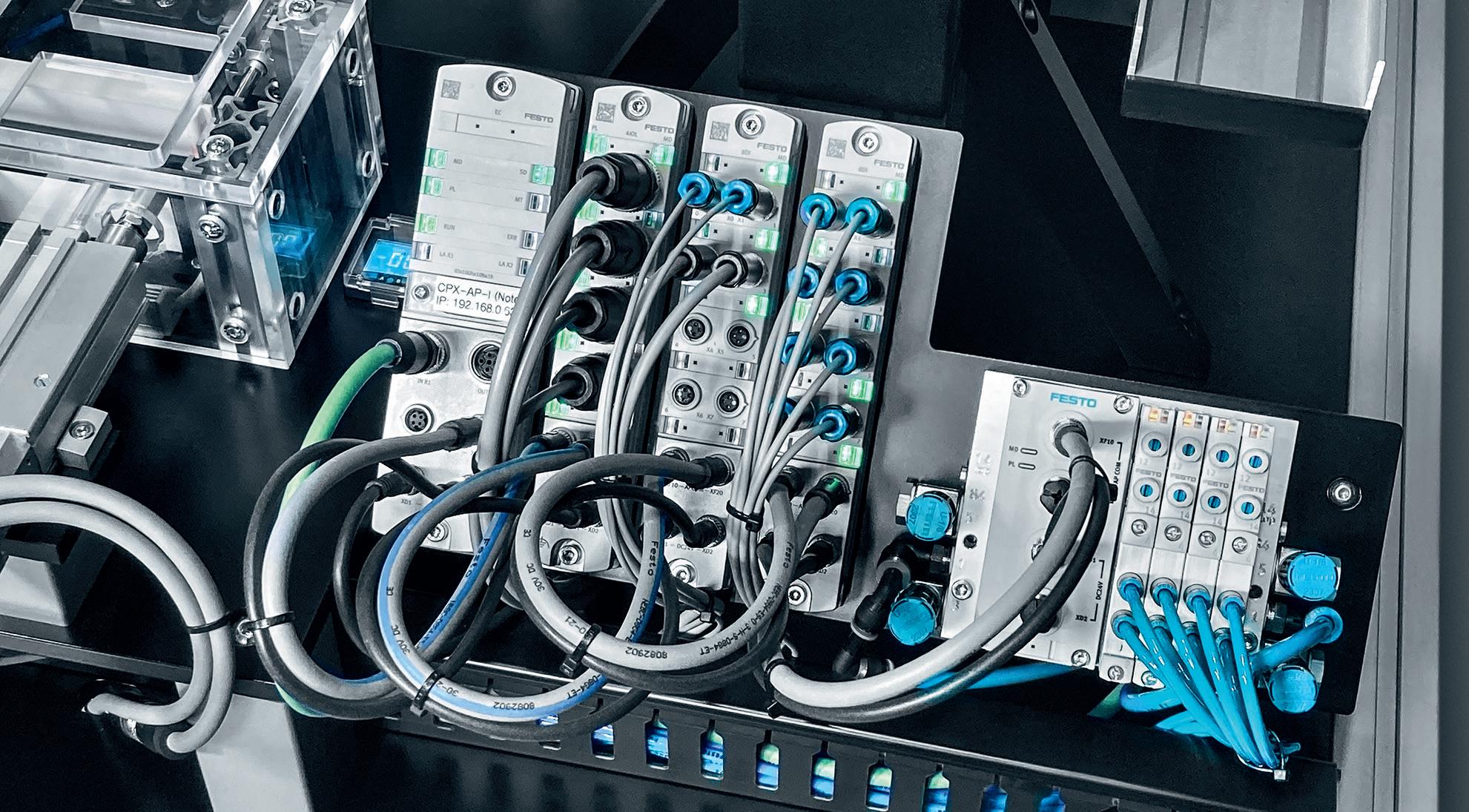
Rugged-environment LEMO connectors support USB 3.1.
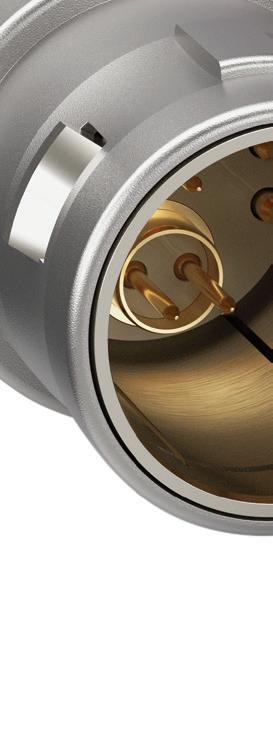


Amazon Partner Network as well as the AWS Marketplace. data sources to optimize site visits and immediately
• The ability to create 3D scenes with spatial anchors linked to real-world data. Users can overlay equipment within a digital twin and then tag the space with anchors to connect models with a knowledge graph created and managed by AWS IoT TwinMaker. This knowledge graph allows integration of data such as heat mapping and controls into the digital twin.
• Better facility management by establishing realtime remote monitoring, process optimization, and historical root cause analysis. Endusers can connect to disparate data sources to optimize site visits and immediately assess issues.
20 DESIGN WORLD — MOTION 3 • 2023 motioncontroltips .com design world trends
(Image courtesy of Festo)
.com | designworldonline
It’s now possible to build web apps on digital twins — including apps for training employees and apps to trigger notifications upon the detection of abnormal device data. With AWS IoT TwinMaker and Matterport, users can contextualize digital-twin data, gather insights and analytics, and access realtime and time-series replicas of their spaces anytime and anywhere.
Wireless industrial applications on the horizon




Increasingly, intelligent factory technologies (complementing Factory of the Future architectures) employ wireless connectivity such as 5G and edge computing to:


• Boost the flexibility of manufacturing
• Allow adaptive production planning
• Predict failures before critical work stoppages.
These capabilities minimize warranty, waste, and downtime costs while boosting worker safety, preferably while satisfying the objectives of machine builders and endusers.

What industrial applications for 5G do you predict over the next five years?
Wireless connectivity such as Wi-Fi, 5G, and WirelessHART has developed rapidly — both in terms of communication speed and available protocols. Physical installation of copper or fiber cabling is a significant expense with automation projects; once installed, wired infrastructure somewhat limits expandability and future flexibility. So, endusers are finding that modern wireless technologies provide a good way to address many localized networking needs while making it easy to expand or change installations in the future.
Emerson PACSystems and PACEdge products support wireless technologies and wired methods, so users have options for all implementation needs.




















• Enhance operator and machine control through the entire range of motion without excess strength


J.


Inc. Magazine has called 5G the catalyst for the world’s fourth industrial revolution. Once 5G networks are operating at full capacity, I believe there will be two key benefits seen by industry and consumers.
First, the increased range offered by 5G networks will allow high-speed data to reach an increased percentage of the globe for more internet-connected devices and the ability to pass data back and forth to servers. Farmers, loggers, miners, wildfire firefighters, and others who operate in remote areas will be able to work in a connected world.

in autonomous of bandwidth.













This will enable a wide range of devices — including autonomous robots.
The second key advantage of 5G (and Wi-Fi 6 inside buildings) is high speed and bandwidth. The increased capabilities of Wi-Fi 6 and 5G will let devices become smaller and
• Perfect support of muscle power with forces from 2 to 2,923 lbs.
• Stainless steel options for wash down and sterile environments


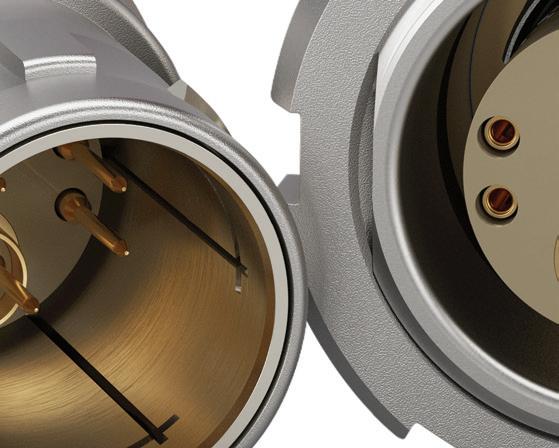
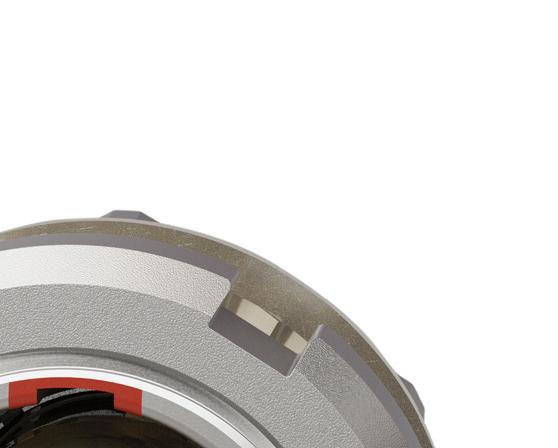





• A variety of accessories allows for universal application

the digital transformation • ai • connectivity ACE Controls · Farmington Hills, Michigan www.acecontrols.com
21 DESIGN WORLD — MOTION
INDUSTRIAL GAS SPRINGS ARE THE SMART WAY TO LIFT AND LOWER
3 • 2023
Smart-factory. (Image courtesy of Dreamstime • Suwin Puengsamrong)
Schroeder:
requirements for harder material, SNCM220 and/or
normally used.
hardness is determined by production condition. expected hardness value is informed in a quotation of gears.
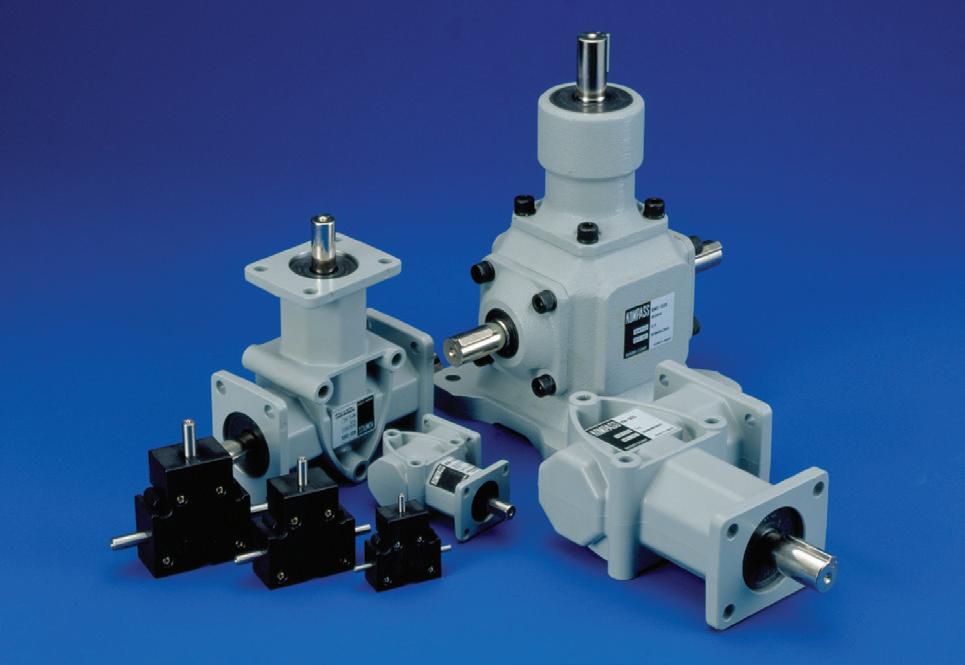

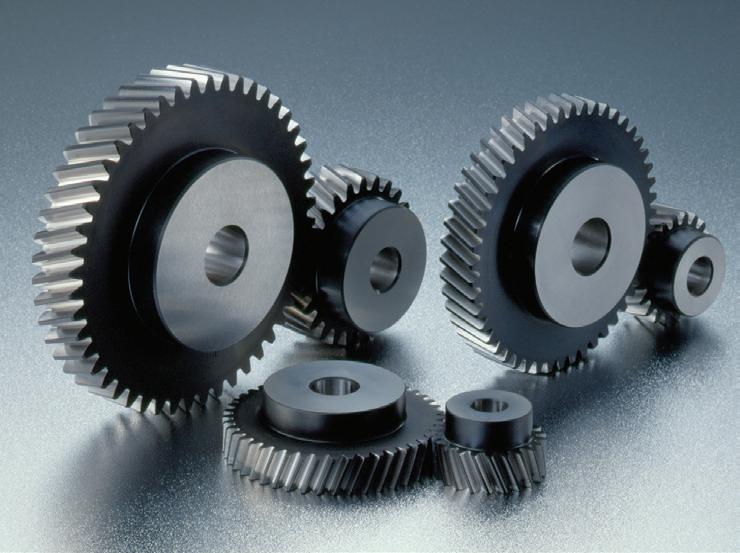



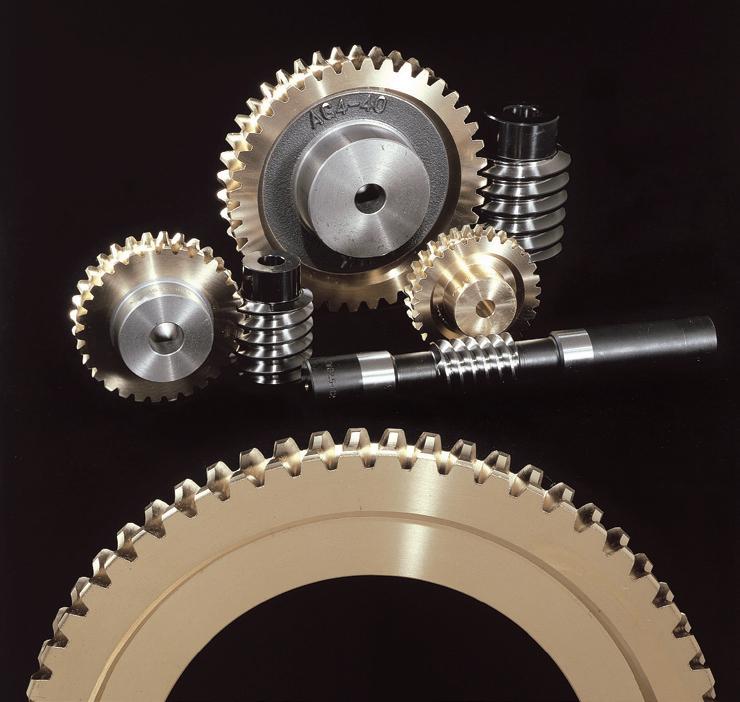
Gear precision grade table : mentioned equivalent grades are for reference only. grades completely match each other.
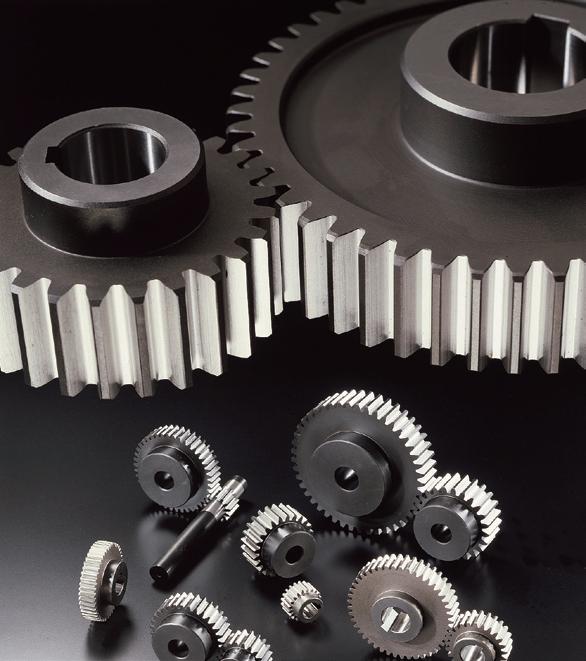
carburizing (case hardening), SCM415 is normally used.
SNCM420
15/05/21 14:20:18 259 Elm Place, Mineola, NY 11501 Phone: 516.248.3850 | Fax: 516.248.4385 Email: info@khkgears.us Largest selection of in North America Stock Metric GEARS
In Design World, we use many examples involving discrete automation to illustrate the possibilities of DX. Here, smart motion controls work by accepting sensor, switch, and encoder feedback and serving as (or triggering the signal-amplifying (amplifier) action of motor controls — all traditional functions. They also serve an additional role of connecting machines to enterprise-level systems.
last longer because the bulk of the processing power required will reside on a server, and data will be streamed to the device.
Consider how virtual reality (VR) and augmented reality (AR) technologies are electrically and computationally intensive — much more so than streaming. Offloading the processing to a server and converting devices to streaming devices will allow the spread of VR and AR, as field devices will become less costly (due to more modest processor and battery specs) and more ergonomic (due to their lighter weight).
What are your observations regarding IoT connectivity for mechanical components?












Morris: While bearings aren’t new technology, they’ve come a long way. Bearings can be metallic or plastic, and polymers all have different characteristics for use in
specific applications — including food-safe and medical applications where metallic bearings are not ideal. Ceramic bearings excel in hot, fast, and abrasive applications. Magnetic bearings, which use magnetic levitation to rotate around a shaft with no actual physical contact, eliminate wear and complement applications needing high speeds and low vibration.
Renewable energy has become a large industry. Wind turbines feature large bearings — typically slewing bearings. The medical industry employs bearings in stateof-the-art technology MRI machines
MEET THE EXPERTS
and CT scanners. Robotics have automated many processes; here, bearings complete rotating robotic arms and equipment to move robots vertically and horizontally. EVs also use various bearings, including ceramic bearings for their lightness and high speeds. Because large bearings can be quite costly (and have months-long leadtimes) predictive maintenance for them has become very useful — particularly with today’s supply-chain and leadtime issues. Performance data can be stored and sent to the cloud for in-depth analysis and then used for engineering improvements and improved maintenance schedules. Plus, all this data can be remotely monitored to reduce 24/7 maintenance-personnel needs by letting staff monitor and respond to issues at several sites at once.
Several products on the market today enable simple and affordable condition monitoring for bearings using sensor-collected data. The latter is analyzed, and the system alerts users to condition anomalies. Users can even monitor the data through mobile apps. Read Part 2 of this series by visiting designworldonline.com and searching on Gottlieb. Also look for a follow-up article in Design World on this topic.
Richard Johannes | Director of engineering and innovation • LEMO USA
Steven Lassen | Product & applications manager • LEMO USA
Sandro Quintero | Business development for electric automation • Festo
Will Morris | Category manager • RS Americas Inc.
Chris Gumas | Director of marketing • Ruland Manufacturing
Paul Thompson | V.P. solutions engineering • Matterport
Pamela Kan | President and owner • Bishop-Wisecarver Corp.
Chris Gottlieb | Director — Drives and controls • Kollmorgen
Jonathan Schroeder | Executive V.P. • PBC Linear
Bill Paczkowski | Senior product manager for PACEdge • Emerson
Pramit Nandy | Product marketing manager — 16-bit microcontroller division • Microchip Technology
Tim Sharkey | Director of market management for electric automation • Festo
Biren Patel | Business development manager — mobility solutions • maxon
23 DESIGN WORLD — MOTION 3 • 2023 motioncontroltips.com | designworldonline.com the digital transformation • ai • connectivity
RFID OR BARCODES INTRALOGISTICS LOCAL FACILITY SHIPPING AND DELIVERY LOGISTICS AND DISTRIBUTION INTRALOGISTICS AUTOMATION NETWORK REMOTE SERVICES ERP MES INTERNET ROUTER SECURE WLAN SWITCH
END USERS MACHINES’ MOTORS AND DRIVES HOST CONTROLLER (PRESENT IN ADVANCED SYSTEMS) MOTION CONTROLLER BOARD OR CABLE CONNECTIONS
FIELDBUS
TRENDS IN EV s, AGV s, AND e BIKES
We recently asked several industry experts about the trends they’re seeing in the design and use of electric vehicles (EVs), scooters, eBikes, and autonomous ground vehicles (AGVs). Here’s what those experts had to say.
Gallant: We spec in our dc motors and gear motors into these types of EV, eBike, and AGV applications and
devices. For motion control, customers typically request one of our incremental magnetic encoders be added to our dc motor/gear motor in these applications. For any of our BLDC motor solutions, an additional motor controller is required. We provide standard BLDC motor controllers. For customers who desire a fully customized motor controller, we provide technical support to their electronic engineers during the PCB design.

24 DESIGN WORLD — MOTION 3 • 2023 motioncontroltips.com | designworldonline.com design world trends


evs • ebikes & agvs 25 DESIGN WORLD — MOTION 3 • 2023 motioncontroltips.com | designworldonline.com
Here is the interior of a machine that produces GBBatterie electric batteries. Festo components are used in this machine.
Festo components are used in the production of electric-vehicle batteries.
What are some new technologies being applied in mobile designs?
Rose: With input voltages supported from less than 10 Vdc to greater than 1000 Vdc, the dc-dc converters are used in small and low-voltage battery pack drones and bicycles through large and high voltage battery pack commercial buses and trucks. The ac-dc power supplies and the dc-dc converters are used in battery charging systems ranging from wall plug powered drones and bicycle chargers, to high-powered, fixed-installation chargers for cars, trucks, and buses.
More interesting than the numerous sensors in EVs is the power and communications technologies employed to enable the sensors and transfer enormous amounts of data from them. Power distribution in automobiles, trucks, buses, and aircraft is transforming to a similar situation as is used in data centers. It is becoming more common to have a 48 Vdc power delivery backbone employed with many branches and associated point of load dc-dc converters. The POL converters reduce the distributed voltage to the level required by each sensor or actuator. The weight and volume of copper required for power distribution is greatly reduced by implementing this topology.
Mowry: The more the EVs become autonomous, the more automation is being done inside the cab to make the experience better for the driver and passengers. We have seen new applications for our leadscrews in the automated opening of charging ports, power sliding windows in the back of pickup trucks, and linear systems that can change the position of the dashboard, steering wheel, or other parts of the interior to create more user space for the passengers.
Luchars: ECM’s PCB Stator electric motors are the central component for converting electrical energy to torque, horsepower, mechanical output, and forward motion in e-mobility applications. In fact, our coupling of printed circuit board, axial flux motor topology to a SaaS platform represents a new technology tool for electric mobility. ECM’s PCB Stator electric motors are lighter, faster, quieter, and achieve much higher efficiencies than conventional machines. We connect that to our motor CAD software, PrintStator, which offers unprecedented design flexibility. ECM’s SaaS platform takes discreet inputs: how much torque, power, and desired rotation speed‚ and converts those into a design for a custom PCB Stator used in axial-flux machines.
ECM’s motor designs in axial-flux air-core machines have maximum torque and superior power in a much smaller footprint. This presents numerous design and performance benefits for electrically powered applications, such as drones, e-bicycles, and certain marine vehicles. The most obvious upsides include reduced weight coupled to improved performance and greater battery efficiencies.
Schellenberger: Microchip Technology provides a range of semiconductor-based solutions for the e-mobility market. Our silicon carbide (SiC) solutions enable the high-voltage power conversion, regulation, and control necessary for propulsion in EVs, electric bikes, and scooters. Our AUTOSAR-ready digital signal controllers (DSCs) with a high-performance DSP engine and specialized peripherals result in stunning performance gains in digital power applications. Along with these core components, we also offer power management, connectivity, timing, and security solutions, among others, to help clients build a total system solution for E-Mobility applications.
In terms of sensing, LiDAR, radar, ultrasonic and camera-based systems lead the way for autonomous vehicles. Additionally, our inductive sensing solutions are key for motor control applications and position sensing for electric vehicles. On the drive side, the high-voltage systems needed for the propulsion of electric vehicles have created the demand for SiC MOSFETs and diodes that are capable of sustaining hundreds of volts.

How about the manufacture of components that go into EVs?
Lin: Consider how motion control is used in EV battery production. There are two operation environments in battery manufacturing — in a dry room (dew point < -20° C) before the prismatic, cylindrical, and pouch-style batteries are sealed — and in the ambient factory environment, where the sealed assembly cells are placed in modules. After the cells are placed in modules, they are secured in the module with adhesive, pressed closed, and placed in an EV battery pack for installation into the vehicles.
26 DESIGN WORLD — MOTION 3 • 2023 motioncontroltips.com | designworldonline.com design world trends
Jabil’s short-wavelength infrared 3D camera demonstrator operates at an 1130 nm wavelength making it a good fit for outdoor applications.
Festo Cartesian gantry robots are used for picking, placing, sealing, and pressing operations in the factory. Gantries, which are compact to begin with, use close to 100% of the work envelope, leading to a smaller footprint on the factory floor. Gantries require less guarding, which saves cost and space. The gantry motion is fast and accurate for the three-axis motion of picking and placing, sealing, and pressing.
To be competitive, EV battery OEMs must be better, faster, and offer superior systems in terms of performance. Festo developed the Handling Guide Online engineering productivity tool that reduces gantry design time from an industry average of two weeks to 20 minutes. With this free online tool, engineers enter basic application parameters such as mass, torque, and speed, and Handling Guide Online designs the optimum gantry. At the end of a design session, the engineer receives a 3D CAD drawing, a bill of materials, an estimated delivery date, and a quote for the cost of the system. With a 3D CAD drawing, the OEM can proceed with machine design while waiting for the gantry delivery and keep the project moving.
Festo delivers fully tested gantries, which are shipped as either quick-to-assemble kits or as fully assembled, ready-to-install systems. Each OEM receives a unique part number for the gantry for easy reorder and component identification. When the Festo gantry and control cabinet arrives, the OEM connects power along with the control cables and uses pre-installed function blocks to program the unit. The Festo Motion Control Package lets the OEM compress the standard commissioning time from one week down to one to two days.
Garbe: In EV battery production, there is enormous pressure for the rapid designing, building, and commissioning of automated machines for production. These machines must exhibit superior uptime, accuracy, data acquisition, and reliability. Along with growing consumer demand for electric vehicles, and the drive to be a market leader for automotive companies, the Inflation Reduction Act has spurred the industry to move even more quickly than before because of the tax incentives in the bill. There are immense production goals through 2030. The only way that auto manufacturers are going to reach these goals is through highly automated, reliable production methods. In electric-vehicle battery production, OEMs use linear-motion-based gantries for their accuracy versus six-axis robots. As a six-axis arm reaches farther from its base, the robots lose accuracy. A gantry maintains high accuracy within the entire work envelope. We find that OEMs in the battery industry do not want to buy components from multiple suppliers. Using numerous vendors complicates ordering in terms of time, inventory, and support for multi-component/multi-vendor systems and risks the components having interoperability issues.
Learning curves for programming and wiring also require higher internal resources. OEMs want their machines to be delivered and commissioned faster, reliably high performing, and easier to support. All of this leads to vendor consolidation. The Handling Guide Online reduces the delivery time of a gantry robot from an industry average of eight weeks down to three.

27 DESIGN WORLD — MOTION 3 • 2023 motioncontroltips.com | designworldonline.com
evs • ebikes & agvs
What are some recent developments specific to eBikes and AGVs?
Patel: maxon has developed a lightweight mid-mounted drive unit that provides support when needed and can be integrated into the frame. The Bikedrive AIR drive unit weighs only 1.9 kg and has a Q factor starting at 155 mm and freewheel technology which provides no noticeable resistance. This means that when pedaling backward and riding unassisted, there is no frictional force to overcome due to the motor.
The low-profile drive unit allows racing, gravel, urban, kids, and mountain bike manufacturers to still use traditional frame designs.
For AGVs, maxon continues to develop integrated drives and has added to this offering with the release of the IDX 70. The IDX70 compact drives can easily be configured online and offer up to 87.5 Nm peak torque when combined with the 70-mm gearbox GPX70.
Umeno: Kollmorgen has provided many automation solutions to the production of batteries for EVs. Our success and expertise in supporting the large existing Asian market are being leveraged to support productions in Europe and North America. The coating process is critical in lithium-ion battery production. The manufacturers of coating machines rely on Kollmorgen’s direct drive technology to meet manufacturers’ requirements for a high yield.
Blasch: Jabil has developed a nextgeneration 3D camera with the ability to seamlessly operate in both indoor and outdoor environments up to a range of 20 meters. Jabil, ams OSRAM, and Artilux combined their proprietary technologies

in 3D sensing architecture design, semiconductor lasers, and germaniumsilicon (GeSi) sensor arrays based on a scalable complementary metal-oxidesemiconductor (CMOS) technology platform, respectively, to demonstrate a 3D camera that operates in the shortwavelength infrared (SWIR), at 1130 nanometers. The camera operates in the shortwave infrared, 1130 nm, greatly improving the signal-to-noise ratio used to calculate depth.
First, by targeting 1130 nm, the camera takes advantage of a gap in the sun’s solar spectrum, lowering the background noise impacting the ToF signal. Second, the magnitude of the signal can also be increased, as laser eye safety thresholds are higher at 1130nm than at either 850nm or 940nm. The result is a 3D camera capable of operation in bright sunlight, extended operating range, and better depth accuracy.
The key implication is that robotic platforms are no longer restricted to indoor operation. Given the high cost of autonomous mobile robots (AMRs) and other autonomous platforms, increasing their utility, safety, and reliability benefits everyone in the industry. Route planning
MEET THE EXPERTS
to avoid obstacles like windows or open bay doors, is no longer an issue.
Our goal, in collaboration with many component suppliers in the market, is to create low-cost 3D sensors enabling forklifts, AMRs, agricultural equipment, platforms in support of aircraft operations, and more whose performance is indifferent to environmental conditions. The use of 3D cameras at 1130nm can also be installed on AGVs, especially for collision avoidance. The use of 1130nm should be considered for AGVs that may want to move along loading bays, between buildings, or completely operate in outdoor environments.
Gottlieb: Kollmorgen is a key vendor in AGVs; we improve efficiency in manufacturing and warehousing without making significant investments. Market trends are for more direct-to-consumer shipments, and warehouse management strategies enabled by the most efficient tools will lift the winners to market share. We sell into the drones and EV market as well. Our products fit the bill for directdrive technology, drive accuracy and speed, and quicker time to market with consultative engineers.
Ian Blasch | Senior director — business development • Jabil
James Gallant | Director of operations • ISL Products International Ltd.
Jarod Garbe | Automotive industry segment manager • Festo
Chris Gottlieb | Director — Drives and controls • Kollmorgen
Lawrence Lin | EV batteries business development manager • Festo
Robert Luchars | V.P. of business development • ECM PCB Stator Technology
Matt Mowry | Product manager — drylin linear bearings • igus Inc.
Biren Patel | Business development manager — mobility solutions • maxon
Bruce Rose | Principal application engineer • CUI Inc.
Dave Schellenberger | Manager — automotive products business unit (Americas) • Microchip Technology
Yoshitaka Umeno | Global Market Manager — Medical and robotics • Kollmorgen Corp.
28 DESIGN WORLD — MOTION 3 • 2023 motioncontroltips.com | designworldonline.com
design world trends
The figure of the plant highlights the ability of Jabil’s SWIR 3D camera demonstrator to capture depth information of an object partially illuminated by the sun and partially shaded from the sun.
SHA Rotary Actuator with Integrated Servo Drive
The SHA-IDT Series is a family of compact actuators that deliver high torque with exceptional accuracy and repeatability. These hollow shaft servo actuators feature Harmonic Drive® precision strain wave gears combined with a brushless servomotor, a brake, two magnetic absolute encoders and an integrated servo drive with CANopen® communication. This revolutionary product eliminates the need for an external drive and greatly simplifies wiring yet delivers high-positional accuracy and torsional stiffness in a compact housing.
• Actuator + Integrated Servo Drive utilizing CANopen® communication


• 48 VDC nominal supply voltage
• A single cable with only 4 conductors is needed: CANH, CANL, +48VDC, 0VDC
• Zero Backlash
• Panel Mount Connectors with radial and axial options

• Dual Absolute Encoders


• Output Encoder: 16bit (65,536 cpr) resolution

• Input Encoder: 17bit (131,072 cpr) resolution
• Control Modes include: Torque, Velocity, and Position Control, CSP, CSV, CST

Simplify.
Harmonic Drive is a registered trademark of Harmonic Drive LLC. CANopen is a registered trademark of CAN in Automation. 42
| 800.921.3332 | www.HarmonicDrive.net
Dunham Ridge, Beverly, MA 01915
MOTORS, GEARMOTORS, AND DRIVES
As automation continues to expand in existing as well as newer applications, the enabling automation technology is evolving to keep pace with these changes. Motors and drives are no exception. In particular, motors have gotten smaller to accommodate space and size restrictions in new, unique applications. There have also been changes to how motors are designed and built, with an increase in custom designs as well as motor and drive networking and connectivity.
We recently asked several leading industry experts about trends they’re seeing in motor, gearmotor, and drive technologies. Here’s what those experts had to say.
How is it that motor manufacturers can build motors of sizes impossible just a decade ago?
Beckstoffer: The miniaturization of motors over recent years has been accomplished by several key factors — design, materials,
and automation capability. From a design perspective, advances in simulation software provide engineers with the capability to evaluate smaller-diameter concepts to confirm feasibility. Engineers also continue to push the boundaries of size reduction through unique and patented motor features. This is further enabled by advances in materials, including higher power magnets, more conductive metals, and higher strength components.
All of this requires automation to precisely wind coils and complete the assembly of the miniature components of the motors. With the continual advances in these areas, motor manufacturers have been able to design and produce motors with continually smaller diameters and lengths.
Luchars: Customers typically come to ECM intending to remove gears from their design, as the geartrains in motor systems typically add size, cost, complexity, and noise to the system. Our partners are instead interested in a direct-drive solution. ECM is capable of running the direct drive analysis (in addition to various gear ratio designs) to explore the cost, size, and weight tradeoff of each. Because we can

30 DESIGN WORLD — MOTION 3 • 2023 motioncontroltips.com | designworldonline.com design world trends
Festo CMMT-ST servo drives are mounted on the robot itself rather than on the gripper system, freeing up space on the gripper and making the design less complicated.
Advanced Products for Robotics and Automation





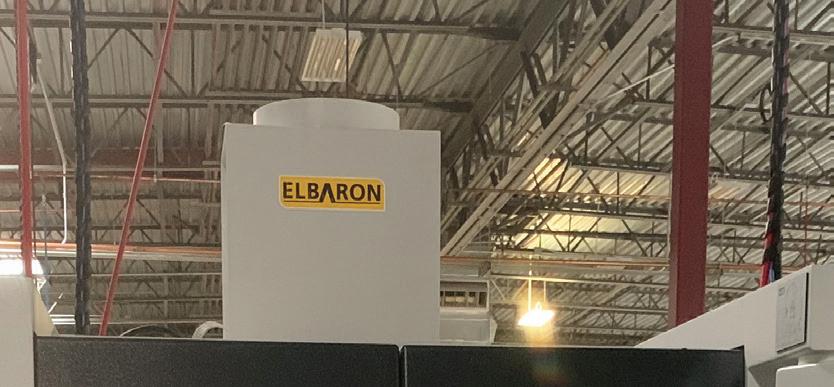



CGI Motion standard products are designed with customization in mind. Our team of experts will work with you on selecting the optimal base product and craft a unique solution to help di erentiate your product or application. So when you think customization, think standard CGI assemblies.



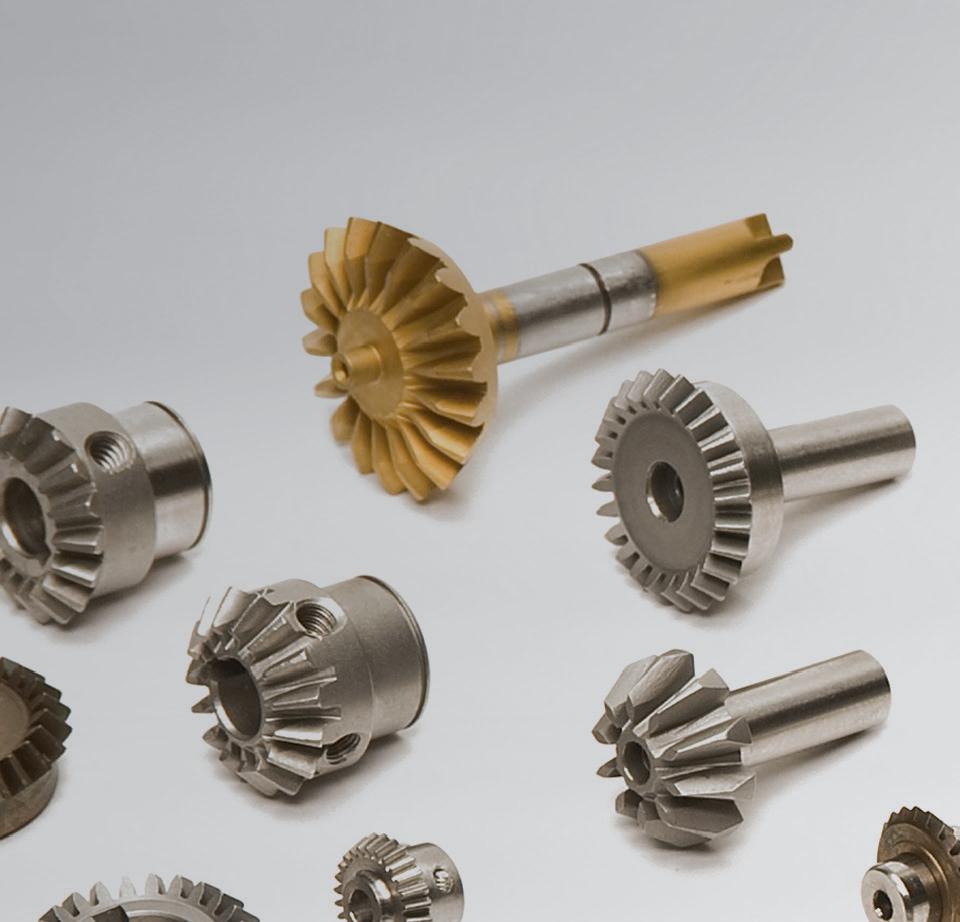

Connect with us today to explore what CGI Motion can do for you.




copyright©2021 cgi inc. all rights reserved.
CUSTOM SOLUTIONS
YOUR
ARE CGI STANDARD PRODUCTS
800.568.GEAR (4327) • www.cgimotion.com
execute rapid analysis of various gear systems, the optimal speedtorque combination can be quickly determined with high certainty. This lets us design suitable motorgeartrain-system combinations.
What are some new and unique motor applications you’ve recently supported?
Beckstoffer: Brushless dc (BLDC) motors provide operational advantages with their highspeed capability and electronic commutation. In addition, a slotless BLDC design enables rapid acceleration and deceleration due to the self-supporting cylindrical coil design. Short-term circulatory support devices assist the patient’s heart during a cardiac event or surgery, supplementing the pumping of blood throughout the body. The device needs to operate at high speed and be supremely responsive to the sinus rhythm of the heart, making BLDC slotless motors a good solution. The highpower density of these motors also ensures sufficient torque is available to respond to any changes in the patient’s condition.
Gallant: Brushless motors have become much more widely accepted and used over the past few years. Along with that, the development cost has dropped significantly, making them more affordable. We can offer brushless motors with planetary gearboxes as small as 22 mm in diameter. Brushless motors, by design are a little more susceptible to the elements with a better IP rating. We get about 50% of our new-customer requests for brushless motors vs. brushed motors.

found in almost any commercial or industrial application ranging from white goods to robotics to hunting equipment. We offer either planetary, spur, or worm gearboxes on our dc motors. Our motors are either brushed or brushless and coreless options are also available. Our planetary gearmotors can be as small as 12 mm in diameter, and worm gearmotors can get up to over 70 mm in diameter.
Patel: maxon has released a new family of frameless motors designed specifically with dynamic movements in mind. The DT series (Dynamic Torque) can be easily integrated into a range of applications, specifically when it comes to applications where speed can change instantly. The rotor and stator are delivered separately, without bearings or motor shaft, and are connected only during assembly. The features of the EC frameless DT motor series include minimal rotor inertia, excellent heat dissipation, compactness, and extremely simple integration. The flat design, high torques, and space for cable glands allow a high level of integration into a given application.
Gottlieb: Regarding design-based improvements, concentration on flux optimization produces motors such as the Kollmorgen AKM2G, which packs a punch of torque density and higher power in the same package as older generations of servomotors. Or consider the coming release of our AKMA washdown servomotor. It really is solving the problem of the food-grade paint motor being unacceptable in a food environment as the paint may peel but it is much
more economical than the sanitary requirement level of the AKMH hygienic motor. It will hit a real sweet spot.
Luchars: Regarding washdown or corrosive settings, ECM can fully enclose its motors, while keeping them cool, due to the patented qualities of our stators. PCB Stators use both the inactive and active copper in the PCB stator to conduct heat out through the aluminum housing, rather than requiring air to be drawn or blown through the stator windings‚ as occurs in a traditional wire-wound machine.
torque, and accuracy required in gantries. Festo also provides mechanical axes for a one-stop shop of interoperable products.
Luchars: Most brushed motor applications we have seen have been for cost-sensitive consumer goods. These, of course, have increased wear and decreased efficiency, but they are simple and cost-competitive. ECM can quickly use our software design platform, PrintStator, to understand whether a PCB Stator offering would be cost competitive. This saves a lot of time and resources that might
This is beneficial as it radically improves the sealing and protection of the internal motor components to limit the ingress of other foreign objects, debris, or harmful fluids.
Lin: EV battery manufacturers respond to the fact that Festo built its EMMT stepper motors and compact CMMT servo drives for interoperability in complex motion systems. The CMMT drives are compatible with all major Ethernet-based communications protocols for wide applicability. The EMMT/CMMT combination is suitabele for producing the speed,
MEET THE EXPERTS
end up being dedicated to a given project, only to later determine that the technology isn’t a good fit. If a PCB Stator machine is cost competitive, all the drawbacks of a typical brushed machine would be eliminated with a PCB Stator machine. ECM can design various motors, from constant-speed HVAC fans and blowers, to torque motors with resolution and torque requirements. This is another easy task from a modeling perspective to see how the torque production of an ECM machine compares to that of a traditional servo or stepper.
For the last few years, ECM
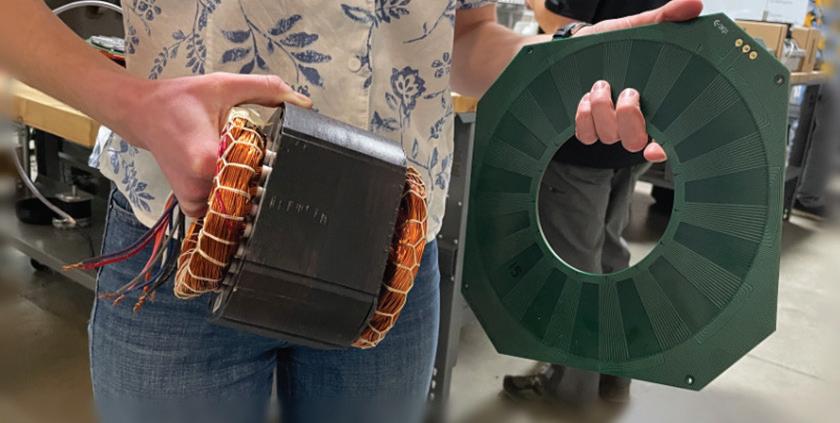
32 DESIGN WORLD — MOTION 3 • 2023 motioncontroltips.com | designworldonline.com
design world trends
This exploded view shows an ECM motor with a PCB stator used in a handwheel controller for camera control.
Biren Patel | Business development manager, mobility solutions • maxon Chris Gottlieb | Director, drives and control • Kollmorgen Dave Beckstoffer | Business development manager • Porttescap James Gallant | Director of operations • ISL Products International Ltd. Lawrence Lin | EV batteries business development manager • Festo Robert Luchars
| Vice president for business development • ECM PCB Stator Technology
An ECM employee holds a conventional copper wound stator (on the left) and an ECM PCB Stator (on the right) for comparison.










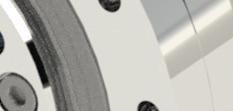








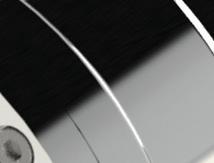

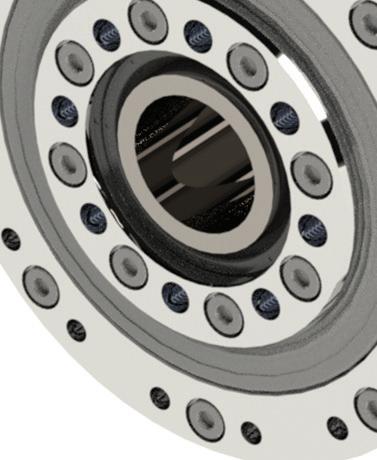








has taken customer specs for various electric motor applications so our in-house engineers and beta partners could use PrintStator to model, protoype, and produce design solutions. We’ve also formed partnerships with production houses for clients without manufacturing capabilities. We see this model as a means to extend next-generation motor capabilities to existing motor suppliers and any vertical that requires electric machines. PrintStatordesigned stators can be printed anywhere in the world‚ so, in essence, we’re allowing our SaaS partners to become their own motor OEMs.


We’re also actively engaged in electric motor design collaborations with companies such as Celestica, a multi-national electronics manufacturer, and will announce several new partnerships with large global manufacturers in 2023. Offering PrintStator via a full SaaS product will extend the benefits of PCB Stator electric motor design to multiple innovators to create custom innovations in numerous verticals. These include applications for blue-chip corporations, governments, small businesses, gaming companies, innovators, disruptors, and startups‚ to name a handful.
In what ways have you assumed customization and systems as a service (SaaS) design work for machine builders?

















Gallant: We help machine builders at the component level in dc motors/gearmotors. Working with a motor specialist like ISL Products helps OEMs streamline that aspect by relying on experts rather than searching the internet for a possible solution. ISL designs and manufactures dc motors/gearmotors to customer specs by tailoring our standard designs. We consider this process as a valueadded service to all of our customers while offering competitive pricing.
Luchars: ECM’s mission is extending software to innovators and engineers to meet future requirements for highly specialized electric motors. By one estimate, demand for electric motors will surge to over a billion units a year across nearly every imaginable vertical in a sector valued at well over $200 billion annually. Initially, this may sound like a hardware challenge. Ultimately, we have concluded that SaaS design is vital to meeting next-generation motor needs. That lies fundamentally in an assessment that what’s worked in the past with electric motor design won’t deliver moving forward. There are three factors shaping the
need for a more specialized approach.

An obvious catalyst is the conversion of many of these categories‚ such as mobility and heating‚ from fossil fuels to electric energy. An additional driver is the surge of robotics and automation across multiple sectors. And a third factor spurring global electric motor need is the push to convert more of our energy to electricity.
We’ve done internal research to determine what kind of machines will best serve this electrified future. A predominant conclusion: the world won’t simply need more electric motors. Global markets will require next-generation electric motors that are more efficient, better performing, bespoke, and produced more sustainably. To create those machines, OEMs and plant engineers will require better designs. In ECM’s experience, the best way to achieve those designs is to offer them the performance and sustainability benefits of PCB Stator electric motors through software as a service. Our PrintStator SaaS platform allows engineers to create their own PCB Stator electric motors, designed to precise performance and form factor specifications. ECM is currently beta-testing PrintStator with plans for a full SaaS release in 2023.
What recent trends are you seeing in motor and drive connectivity?
Gottlieb: Safety over EtherCAT allows for simplicity in installation, and the drive-to-motor monitoring is fast — you don’t have to wait for controller monitoring. One of the most basic applications where I’ve seen safety work is where packaging blanks are added into a hopper while the machine is running. The blanks are held in an interlocked section of the machine, but you can open the blank box’s interlock handles at slow machine output speeds, allowing the machine to keep running while feeding it. This avoids the shutdown and the subsequent startup cycle — of which there are no guarantees that the restart would go smoothly.
Also, safety drives are a ‘must have’ in the marketplace. Advanced safety functions allow improved human productivity and improved statistical safety for human interaction while the machine is running or if the machine is stopped. Safe Torque Off on a drive is now ‘table stakes,' and where machine builders can differentiate is in the advanced safety options allowing safe
speed, safe stop, safe direction, and more. We offer sixteen different safety functions in our SafeMotion Monitor so that the OEM can choose the methodology that works for them.
Luchars: ECM can incorporate any cable connection; we have done this on several occasions, depending on what the customer requires for the application.

Gallant: Over the years, we have helped many customers by providing them with value-added motor solutions. This comes down to adding slight customization to the motors to help streamline the customer’s assembly process. One of the more common requests is to add lead wires to the motor terminals. Some customers request that a specific connector be added as well — from common brands such as Molex, TE, JST, and others.
This is a simple request for our manufacturing team, allowing our customers a quicker install on their assembly line. It’s a service we are happy to offer.
Gottlieb: I think you’re seeing the requirement for flexibility in cable connections from a supply chain perspective. We need to make sure that there is interoperability between connectors from different vendors during these times of precarious supply chains.
34 DESIGN WORLD — MOTION 3 • 2023 motioncontroltips.com | designworldonline.com
world trends
design
ECM’s patented process replaces the stator copper wiring in a conventional motor with a printed circuit board, allowing for extremely thin motor designs, as shown here.




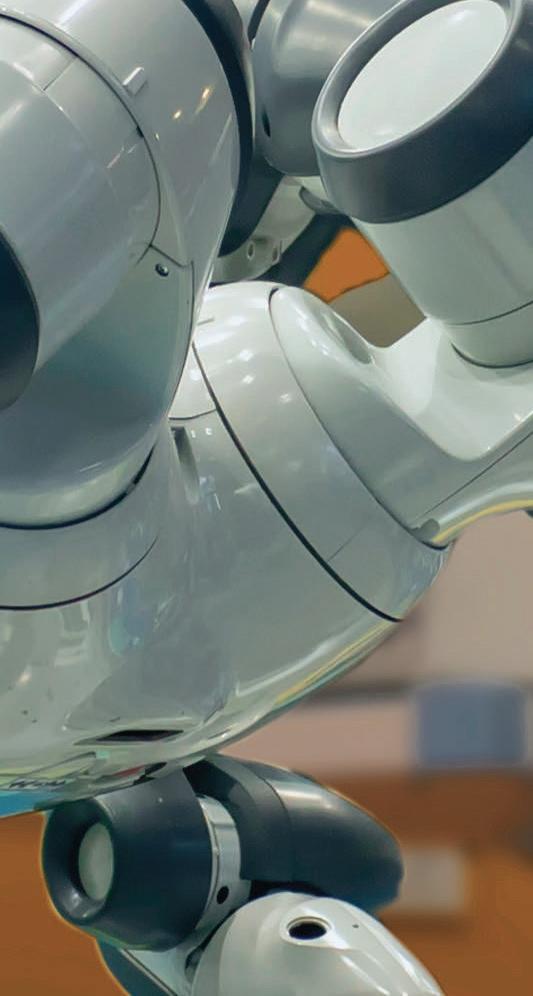













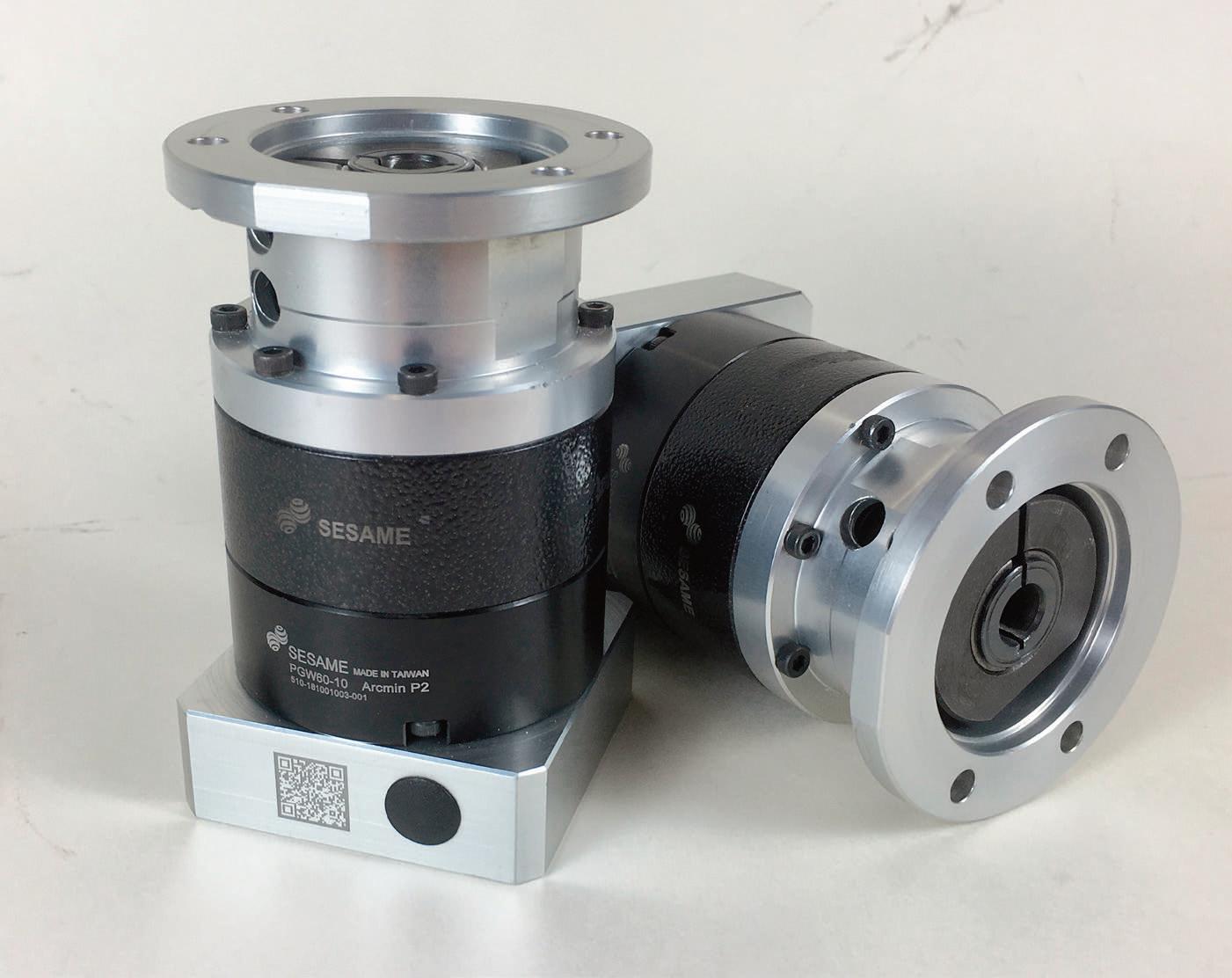
Motion Components to Automate any Industry 800-349-0245 diequa.com/dw Servo Gearheads for Linear Actuators
TRENDS IN LINEAR MOTION
We recently asked several industry experts about trends they’re seeing in the design and use of linear actuators, linear guides, and stages. Here’s what those experts had to say.




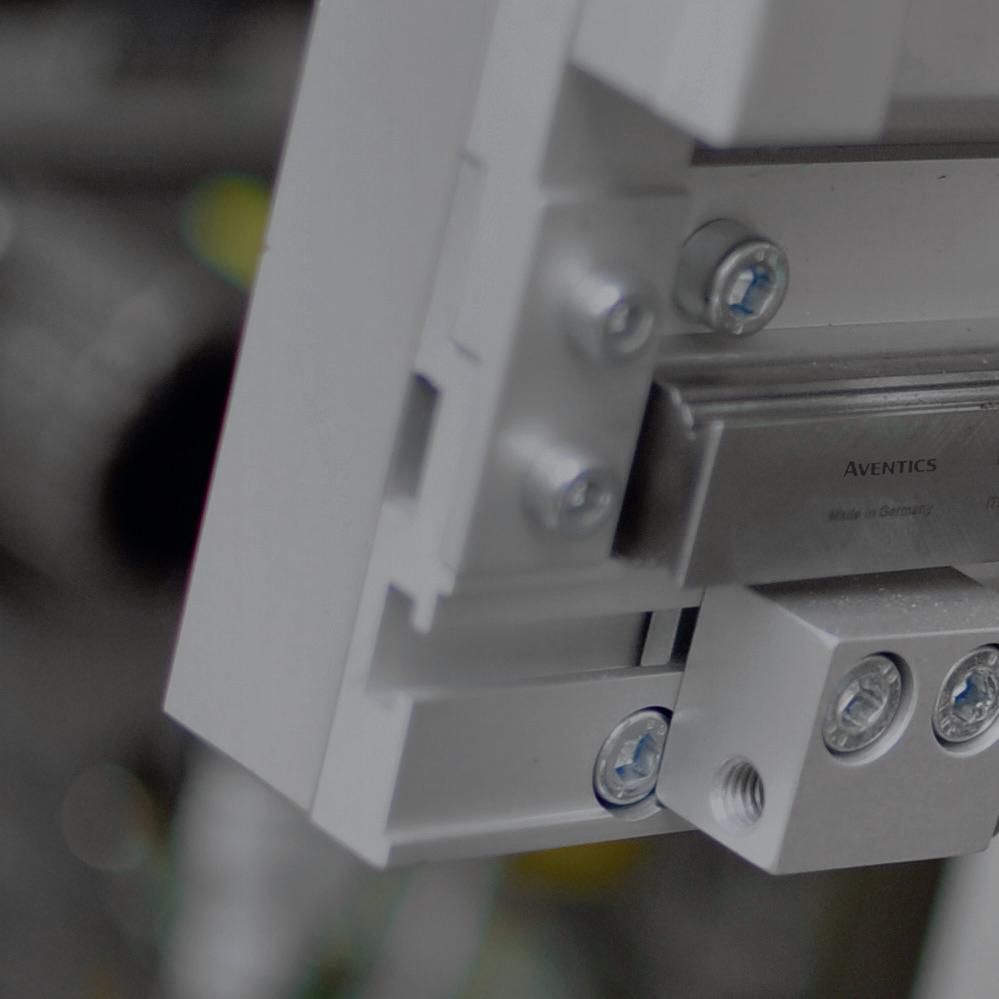




36 DESIGN WORLD — MOTION 3 • 2023 motioncontroltips.com | designworldonline.com
design world trends
What linear designs are on the rise?
Khetan: We’ve recently seen more robotics and green energy applications. We believe this may be due to shifting perceptions of alternative technologies. Many of our products, including a recently launched miniature leadscrew line, are also used in laboratory automation applications.



Lackey: The medical industry has the largest growth potential outside of the semiconductor industry with serial lab-testing devices, laboratory automation, and surgery-performing robot platforms. We’ve begun supplying highly customized electro-mechanical cylinders and other fine-adjustment control subassemblies for medical robotics. Rexroth even offers a custom-designed subassembly to replace traditional respirators that went through the FDA approval process when the COVID-19 outbreak started in early 2020. The aerospace industry (much like the semiconductor and medical industries) has also shown strong demand for custom solutions beyond standard catalog product … especially for X and XY table subassemblies.
K. Walden: Linear bearings are a critical component in any automation system. Consumers are constantly looking for new bearing materials and designs needing little or no maintenance; allowing predictive performance; and featuring process-safe materials. Bishop-Wisecarver offers various linearmotion guide wheels and specialty linear bearings to satisfy these needs. Engineers are also designing a greater number of high-speed automated systems with both linear and curvilinear motion. Where system performance requirements and budgets allow, OEMs are moving increasingly toward linear motors and flexible control. This imparts increased agility in manufacturing processes. We provide unique system offerings catered to these needs with in-house product assembly and testing.
Maina: PBC Linear developed the H-Bot to satisfy applications having high dynamics. This high-speed multi-axis gantry reduced dynamic payloads and significantly simplified wire management to drive motors. We now offer this H-Bot design for other applications as well.
Orozco: Due to electric actuators’ high precision and repeatability, packaging facilities using smart conveyors increasingly rely on electric linear motion products. Smart conveyors use sensors in coordination with linear and rotary motor-based units to accurately perform high-rate sorting tasks — allowing packages to reach their factory destination faster and more efficiently. Motors have also boosted torque and speed output, so now large motors assembled to electric actuators with appropriate screws for heavy-duty applications can perform some tasks such as metal forming and tube bending traditionally associated with hydraulic actuators. Electric actuators in such applications accept programming to apply more or less force and stroke.
Andaya: LINAK has been providing electric linear motion since 1984 and has seen rising demand across many industries for this technology. Originally, we serviced the hospital and care markets, and then offered linear components for height-adjustable desks. Now, we’ve grown tremendously in the mobile agriculture and industrial automation markets, and our local and regional applications engineers and sales team have helped design actuators into many other applications. We’ve also supported vigorous testing to transition companies from hydraulic and pneumatic technologies to electric motors.
linear motion — actuators • guides • stages
37 DESIGN WORLD — MOTION 3 • 2023 motioncontroltips.com | designworldonline.com
Many companies are moving away from pneumatics and toward electric for certain applications. However, electric cannot fully substitute pneumatic applications where higher velocity is required. (Image courtesy of Emerson)
CONSIDERING CUTTING-EDGE ROTARY BEARING MATERIALS
 By Brian Dahmer | Director of application engineering • SKF
By Brian Dahmer | Director of application engineering • SKF
Many materials in the rolling elements of bearings — both linear and rotary — have been used for over a century. But slowly, new materials are finding their way into industrial applications. Increasingly, new materials are being developed for rotary bearings used in very challenging applications, such as those found in aerospace and machine tools. Given the high reliability required in these applications (plus the challenging conditions these bearings encounter) more exotic and higher-performing materials are often needed. Eventually, these materials trickle down into more standard industrial applications.
For example, aerospace bearing steels are now used in a range of challenging industrial applications, such as extreme temperature, high rotational speed, demanding loads, and exceptionally challenging environmental conditions. As these materials prove themselves in the industrial world, they percolate to new and different applications. Examples of the transition from aerospace or the machine tool industry to the industrial include various types of M50 tool steel and special high-nitrogen stainless steel. Powder metallurgy steels are also being used and show excellent performance in tough conditions.
Often, existing materials can offer improved performance by changing the heat treatment used for those materials. In computer-controlled heat treatment processes, the resultant heat-treated steel can be optimized to offer improvements, such as high wear resistance. Additional surface treatments such as nitriding can also be added to a hardened bearing to further improve performance in tough, contaminated environments. Adding a surface conversion layer, such as black oxide, improves initial wear-in conditions, leading to longer and more consistent bearing fatigue life.
Another technology that has grown in adoption and acceptance in industrial applications is hybrid bearings using ceramic rolling elements and steel rings. Originally used in machine-tool spindles, hybrid bearings have spread into numerous industrial applications where this configuration can improve bearing performance … though finding bearing quality ceramic balls and rollers has become more challenging of late. Not all silicon nitride materials are suitable for very demanding applications. The materials used in proven solutions are in high demand but scarce. Bearing manufacturers are challenged to find available silicon-nitride materials that function well in challenging rolling bearing applications. New ceramic formulations are being tested and show promise. If they prove to be successful, the supply of available materials will increase, allowing hybrid technology to be used in even more applications.
Jung: We mainly provide electric actuators with servo or stepper motors and can also create customized solutions. Demand for the robot transfer unit (seventh axis) is increasing for different robot sizes. Ballscrews and leadscrews are used for applications requiring higher accuracy and durability, and demand for rack and pinion sets is increasing as design load capacities increase.
Lackey: Over the last few years, there’s been a growing need for completely engineered linear solutions. As the goal is to keep profitability up and costs down, we see many companies reducing or minimizing design and electrical engineer headcounts … and here, our open-market tools can help minimize overhead.

Zaske: Engineering resources are at a premium, but business opportunities for automation are accelerating. This creates tension and opportunity for manufacturers and distributors to increase their value add to customers. Tolomatic has seen increased interest in our Integrated Motor Actuator (IMA) product line, which incorporates a servomotor into the actuator body. This in turn results in few components, a smaller overall package, and increased performance attributes. We’ve also had more requests to put complete assemblies together — for example, gantry systems with transition plates, cable management, and end adapters.
Detail any recent miniaturization or integration of feedback devices in linear components.
Khetan: There’s an increasing need for eversmaller linear-motion components. This is due to the desire for smaller end-use OEM devices that can perform the same functionality with less floor space. Our recently launched miniature leadscrew line addresses this need.
Guide wheels with solid lubricant provide natural resistance to debris ingress, moisture/humidity, chemicals, and the spread of wear particles. (Image courtesy of Bishop-Wisecarver)
38 DESIGN WORLD — MOTION motioncontroltips.com | designworldonline.com
design world trends
Festo industrialautomation-based XY tables and Cartesian gantries offer economies of scale and robustness that lab device OEM systems simply cannot rival.




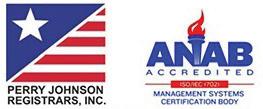

Precision Linear Motion when you need it NOW! Order Today! 800.245.5013 • deltron.com ISO 9001:2015/AS9100D CERTIFIED MADE IN USA Linear Motion Specialists deltron.com 800-245-5013 Solid Models Available for all Del-Tron Model Numbers Standard And Custom Engineered Linear Motion Components Designed to Serve A Wide Variety of Markets
We’ve received an influx of customer inquiries for miniature ballscrews, which has prompted us to develop a miniature metric ballscrew line (releasing early 2023) to complement our popular leadscrews. The ballscrew usage profile has expanded across a wide range of industries including medical, semiconductor, aviation, and other precision automation applications.

Quintero: To shrink or eliminate the control cabinet, the industry will see greater drive-motor-actuator integration for onmachine electric motion, which removes the servodrive from the cabinet. The Festo Simplified Motion Series exemplifies this trend and removes components from the control cabinet for machine mounting. We offer seven different linear actuator types for simple applications requiring two positions and more complex tasks for which infinite positions can be assigned through IO-Link. Personnel can program the unit through a keypad or IO-Link, and simplified motion provides ease of use. The offering’s cost is comparable to that of pneumatics.
Falasco: Our Small Handling & SMS linear modules using leadscrew, ballscrew, and belt drive components are highly suited for laboratory automation applications. We’ve

seen early success for these, especially in the medical testing, optics, and metrology lab applications. Though these modules are less configurable, they’re more economical and readily available, so more industries will likely consider them for low-cost/quick-ship types of applications.
Rice: For a Z-axis on a Cartesian system, Festo has developed a mini linear slide with a built-in rod actuator. This construction creates a compact and lightweight Z-axis that has precise positioning and accurate repeatability. We also offer a cantilevered Z-axis in which we mount the Z-axis actuator on the Y-axis, and the actuator body moves up and down. Belt actuation delivers rapid acceleration, and the cantilevered Z-axis keeps the mass of the motor centered on the Y-axis for stability. This design reduces the number of components and weight of the Z-axis, and it improves accuracy and efficiency.
Orozco: Miniaturization has great benefits because it can reduce weight and space. For example, miniaturizing precise screw technologies can reduce power consumption on electric actuators and open new opportunities for semiconductor applications and medical automation equipment. Additionally, feedback devices such as encoders have improved.
40 DESIGN WORLD — MOTION 3 • 2023 motioncontroltips.com | designworldonline.com
design world trends
Robotic transfer units (RTUs) and seventh-axis systems can perform critical operations in harsh or unforgiving environments. (Image courtesy of Bishop-Wisecarver)
(Image courtesy of PBC Linear)
D. Walden:
Servomotors have thrived because of encoders that provide position feedback. Enhanced stepper motors are also closing the gap with closed-loop systems that allow encoders for positional feedback. Linear motion end users benefit from enhanced feedback technologies that motors and encoders provide to actuators. They can verify motor speed and position and help identify or detect motor stall.

What about application-specific electric and pneumatic actuators?
Orozco: In 2022, Emerson launched its SPRA series, which is a rod-style electric actuator. SPRA is a highly competitive electric actuator that can meet a maximum dynamic load capacity of 106 kN (23,830 lb-ft) and has three screw technologies (leadscrew, ballscrew, and roller screw) that cover a wide range of applications. We’re offering SPRA because of the industry trend to change from pneumatic to electric, where the latter is energy-efficient, has better repeatability and precision, and can be flexible and programmed to perform many strokes at different speeds with different forces.
The option to multitask influences customers’ preference for electric actuators. However, it’s important to understand that electric cannot fully substitute pneumatic applications where higher velocity is required. Though, with advances in motor and screw technology, electric actuators are shortening the gap with pneumatic applications in terms of speed.
Rice: Sometimes, compressed air is simply not available, or the end user wants to decrease energy consumption by cutting back on compressed air. In these situations, OEMs look for solutions that move away from compressed air without the complexity of a servo-driven axis. The Festo Simplified Motion Series of electric actuators with an onboard motor and integrated drive provides electric motion with the same ease of use as pneumatics and at roughly the same cost. Personnel can program directly at the unit for two-position motion through an onboard keypad or use IO-Link to program three or more positions.
Brimage: Shock loads are a challenge for designers looking to convert fluid power to electrical power, because electrical solutions on the market can’t handle axial shock loads. However, the industry advances with innovations to continue our transition to cleaner machines. For example, we recently launched an electric actuator featuring optional mechanical shock-load damping; the latter lets the actuator handle some shock load and replace hydraulics in more applications. Compared to hydraulics, the electric actuator has better controllability and efficiency — important features when transitioning to batteryelectric operation. Applications include material handling, construction, agricultural equipment, and others that require clean, precise, and quiet actuation.
Read the rest of our 14 experts’ insights by visiting linearmotiontips.com and searching on Andaya. Also, be sure to check out the follow-up article in Design World on this topic.
MEET THE EXPERTS
Saurabh Khetan | Product line manager — Leadscrews • Thomson Industries Inc.
Justin Lackey | Product manager — Systems • Bosch Rexroth
Kelly Walden | V.P. of manufacturing • Bishop-Wisecarver Corp.
Jeff Maina | Senior applications engineer • PBC Linear
Samuel Orozco | Product marketing manager — Electric actuators • Emerson
Nathan Andaya | Director — Techline strategic business unit • LINAK U.S.
Andrew Jung | Director of engineering • Bishop-Wisecarver
Andy Zaske | V.P. of sales and marketing • Tolomatic
Dave Walden | Applications engineer • PBC Linear
Sandro Quintero | Business development for electric automation • Festo

Eric Falasco | Product manager — Screws, bushing, shafting, small handling modules • Bosch Rexroth
Eric Rice | Product market manager — electric automation • Festo
Lindsey Brimage | Portfolio program manager • Thomson Industries Inc.
linear motion — actuators • guides • stages
41 DESIGN WORLD — MOTION 3 • 2023
AUTOMATION PUTS THE FAST IN FAST FOOD
The fast-food industry is all about tasty food at low prices with cheerful customer service — all delivered fast. But with labor shortages and supply chain issues still plaguing the economy, how can businesses compete and survive?

Fast-food restaurants across the globe are pondering ways to automate certain tasks or entire assembly lines to provide continuous service at low costs. They’re investigating new motion components, HMIs, and robotics for automated solutions to keep operations up and protect against future labor fluctuations.

Design World editors asked industry experts to weigh in on how robots, conveyors, linear actuators, and other motion components play a role in automated fast-food production. In general, companies are looking for flexibility, low-maintenance, and high-accuracy solutions that meet or exceed food-grade and food-service health requirements. Components need to promote efficiency without posing risks to employee and consumer health.
Plus, kiosk-type food service vendors are inspiring more fast-food restaurants to optimize end-to-end workflows for automation.
As robotics and motion components advance, here’s what the experts have to say about the state of automation in fast food and where it’s headed.
Gottlieb: Automation is key for fast-food industries moving forward. Frontline workers are becoming scarcer, as any demographic report shows. Stepper and servomotors keep motion control in food service due to their repeatability and programmable flexibility — such as varied program times for waffle fries versus shoestring French fries, to give one example. There will be a new industry or channel to service these machines, and I could see OPC-UA being key to successfully unifying machine interoperability at these price points and service requirements.
Gallant: We’ve been involved in projects where delivery robotics are becoming a new facet of food delivery.
42 DESIGN WORLD — MOTION 3 • 2023 motioncontroltips.com | designworldonline.com design world trends
Now, one McDonald’s in Texas features an Order Ahead lane where customers receive their meals via an automated conveyor. (Image courtesy of McDonald's)
Mooij: We’re seeing increased interest in specialty timing belts that perform without compromises. One growing application market is for food-grade and washdown high-performance timing belts. We answered this need with our encapsulated blue BRECOprotect line. Another growth area is in the ultra-high-performance belt-driven linear drive systems. Our answer for these high-accuracy and robust drives is the innovative BRECOmove series. Innovation in tune with industry advances is key to helping customers meet their goals.








Mowry: We’ve worked with many fast-food customers to integrate our linear robots, drylin E linear actuators, and articulated arms to automate different aspects of commercial restaurants. Because our parts use tribo-optimized bearings, they operate clean and don’t require external lubrication or maintenance. They’ve been used in applications to dip fry baskets into oil and move soda cups around a dispensing system. We’re also accustomed to pick-and-place applications — anything from coffee cups in automated barista machines to gantries used in entirely automated kitchens.
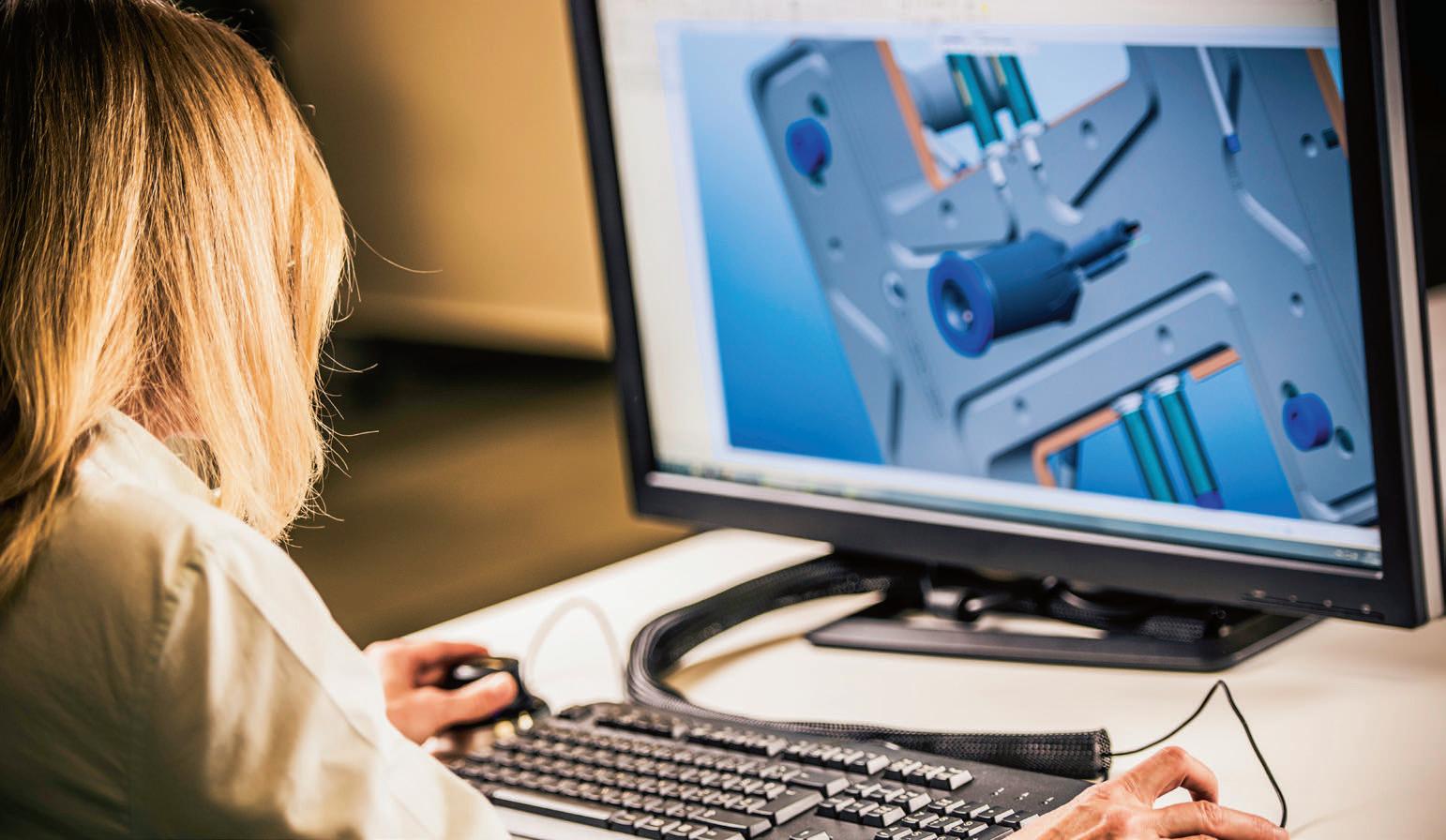

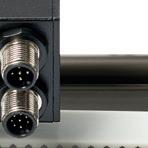




Jung: Our greaseless components are known for servicing harsh environments such as the debris-filled environments of the fast-food industry. In fact, we see increasing applications for robots in fast food — including hamburger handling — and we offer robot transfer units (RTUs) that let one robot move around the kitchen and perform multiple tasks.
Gottlieb: Conveyors are continually emphasized for food automation and motion control; I think in the future we’ll see more hygiene standards to ensure food safety and support food-recall prevention efforts. For food-related applications, Kollmorgen offers the hygienic AKMH servomotor, and we’re

working on a new AKMA motor — a foodgrade-painted servomotor to meet EHEDGlevel requirements at a reasonable price.




















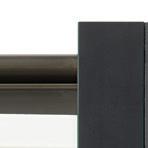




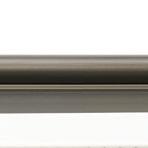


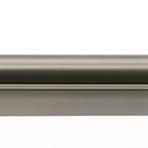


Ouellette: Fast food to fast-casual restaurants are actively exploring automation to improve efficiency from order entry through fulfillment. Expanded use of online ordering and kiosks were the first steps, leading to continued automation through food preparation and delivery. Now, labor shortages and increased labor costs more than justify investments to develop and

motion components in the fast-food industry SHOCK & VIBRATION SOLUTIONS MADE IN THE U.S.A. 800.838.3906 sorbothane.com Online Design Guide Calculators for working with Sorbothane Sorbothane_DesignWorldAd_A.indd 1 12/29/22 11:51 AM 43 DESIGN WORLD — MOTION
(Image courtesy of igus)
deploy custom automation designed for restaurant workflow. We’ve seen companies even rethink their legacy workflows to optimize for automation.
Schroeder: Wage inflation, increasing minimum wages, increasing health care costs, and worker shortages have made simple task automation more affordable when considering ROI. We’ve been discussing and prototyping with companies building linear motion systems to automate manual tasks such as deepfrying French fries, putting coffee grounds into espresso tampers, and even soft-drink filling at the drivethrough.
Walden: We’re supplying integrated rail and cam roller (IVT) solutions for linear guidance in fast-food automated cooking systems currently being developed.

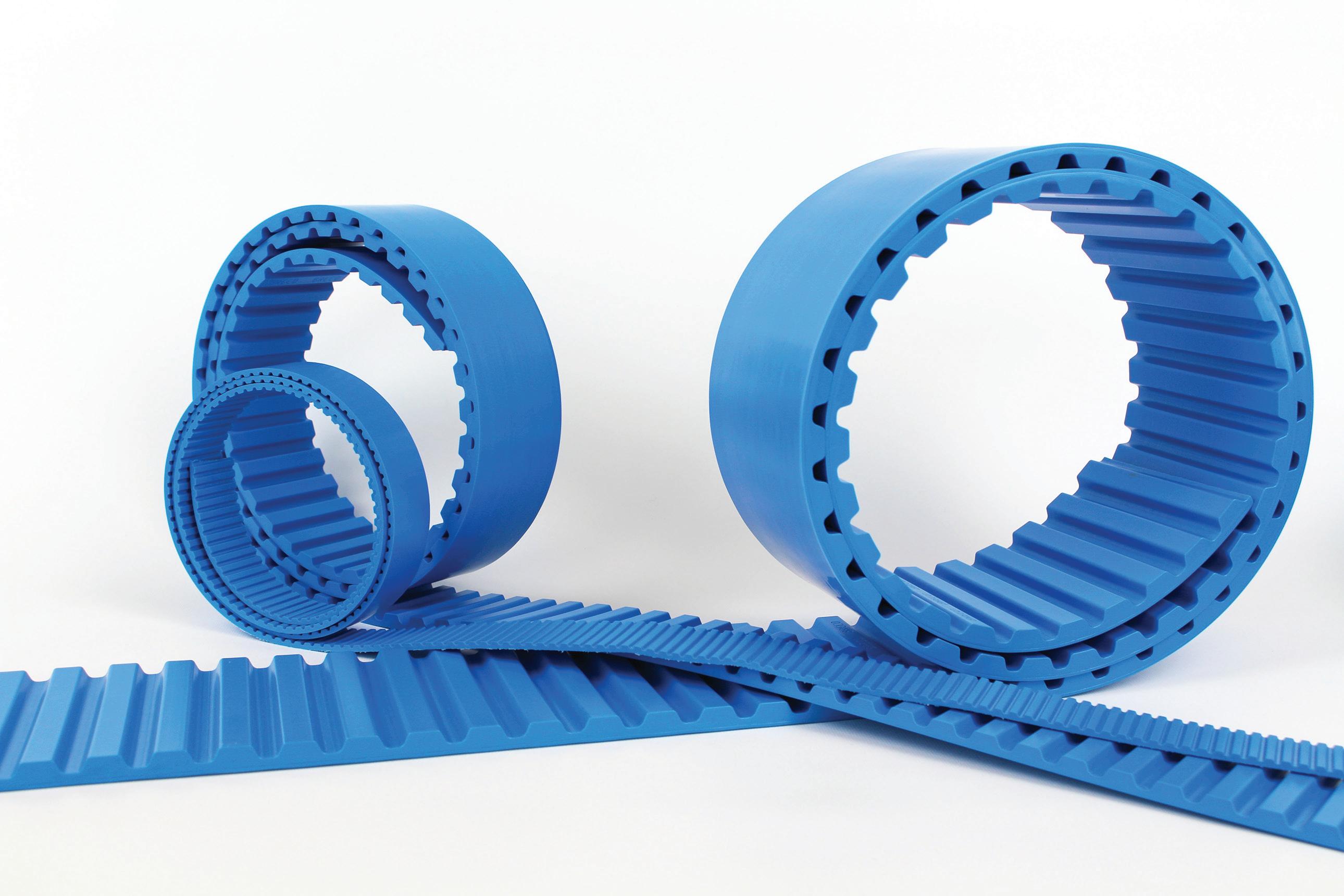
Maina: We’re currently offering SIMO Series linear actuators for cake decorating machinery and retail kiosks for the bakery section … especially for retail chain department stores that offer customerdriven personalized cake decorating. Fast-food restaurants are currently

researching automated handling of deepfrying chicken strips and French fries. We provide corrosion-resistant V-Guide and SIMO linear actuators for these types of automated handling tasks.
Zaske: The tight labor market is forcing everyone to look at automation opportunities. We’re getting involved in automation inside restaurants and for stand-alone kiosks that prep food ingredients, move food through the cooking steps, and package or present food. There are lots of opportunities for our linear actuators in washdown areas, where stainless steel is required, and other non-washdown areas. Collaborative robots are also being used in some of these applications, and linear actuators move the robots around and extend their reach. This, and the presentation of ingredients, are growing applications for robots.
MEET THE EXPERTS
James Gallant | Director of operations • ISL Products International Ltd.
Chris Gottlieb | Director — Drives and controls • Kollmorgen
Todd Mooij | Applications engineering manager • BRECOflex CO. L.L.C.
Matt Mowry | Product manager — drylin linear bearings • igus Inc.
Andrew Jung | Director of engineering • Bishop-Wisecarver
Tom Ouellette | Regional manager • PBC Linear
Tom Schroeder | Executive V.P. • PBC Linear
Dave Walden | Applications engineer • PBC Linear

Jeff Maina | Senior applications engineer • PBC Linear
Andy Zaske | V.P. of sales and marketing • Tolomatic
design world trends
44 DESIGN WORLD — MOTION 3 • 2023 motioncontroltips.com | designworldonline.com
Food-grade and washdown high-performance timing belts are seeing increased use, as are ultra-high-performance belt-driven linear drives. (Image courtesy of BRECOflex)












MORE QUALITY TIME MEANS
the broadest mix of industrial products and technical only downtime you’ll need to worry about is yours. motion.com TIME™
With
ENCODER, SENSOR, AND FEEDBACK TRENDS
Recently, a number of encoder, sensor, and feedback industry experts answered several questions about trends they are seeing with these components and the industry more generally. Here’s what they had to say.
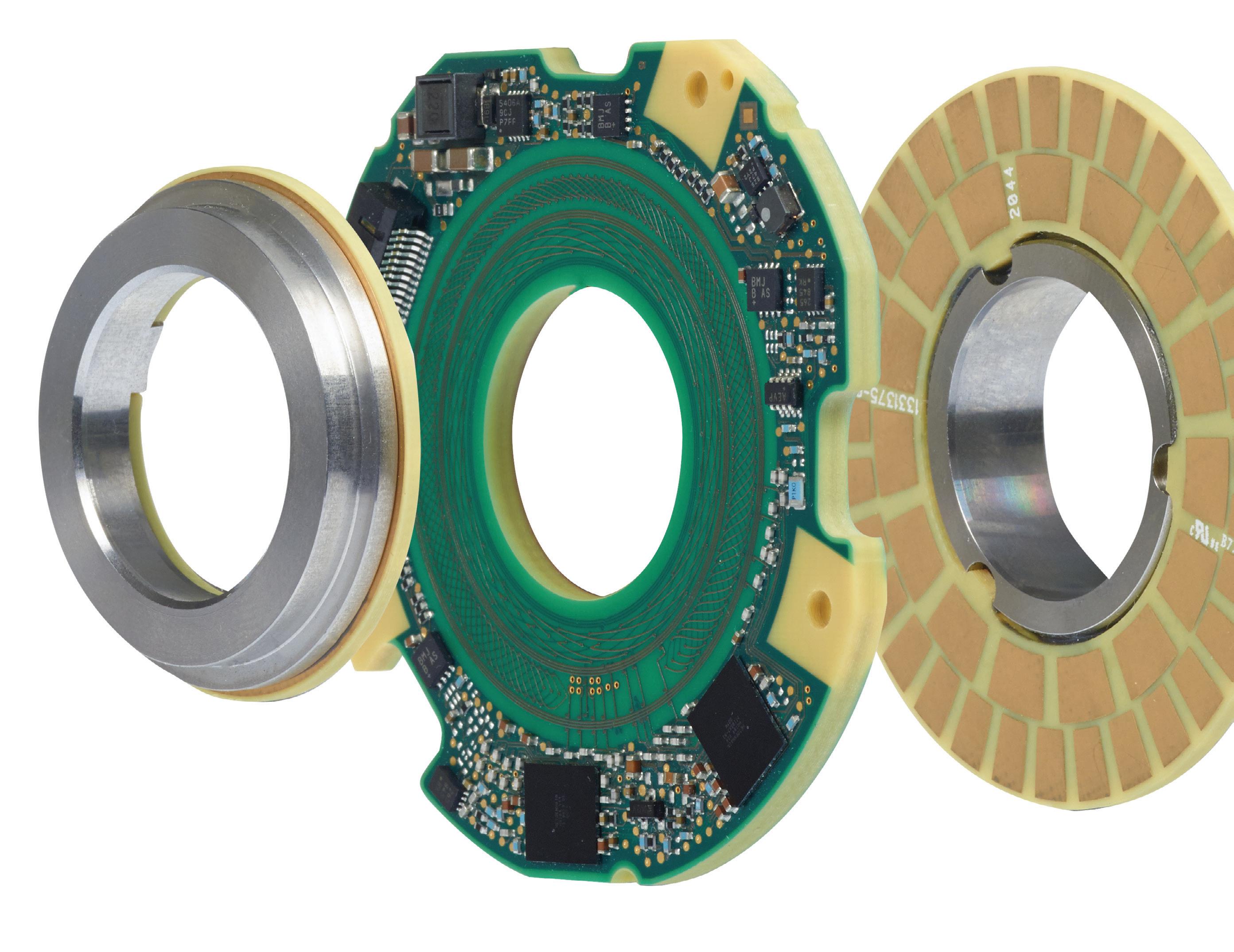

Could you describe what sensor, encoder, and feedback trends you see and which you consider most significant?
Cachro: Due to an aging workforce, limited availability of skilled labor, and increasing production demands to run at near maximum capacity, end users demand more reliable encoder solutions that maximize uptime and provide diagnostic data for reduced troubleshooting duration. At the same time, machine builders are increasing after-market support with field technicians or multi-tier remote support to help when customers experience issues with OEM equipment. As a result, we see a need for components that offer self-diagnostic capabilities that solve these pain points and provide immediate data at the problem area to help users know what
46 DESIGN WORLD — MOTION 3 • 2023 motioncontroltips.com | designworldonline.com
The KCI 120 Dplus rotary encoders from HEIDENHAIN feature inductive scanning, making them resistant to contamination and magnetic fields. Their rigid design permits high vibration loads of up to 400 m/sec2 on the stator and 600 m/sec2 on the rotor.

to correct rather than guessing. With this in mind, our encoder solutions, such as the HS35iQ encoder, offer visual indication of specific fault conditions and advanced fault data output, allowing end users to fix problems without guesswork and enabling more efficient remote troubleshooting for OEMs.
Could you detail any recent examples of miniaturization or integration of feedback devices in compact designs?
Graham: In the encoder space, we are seeing more and more systems wanting to reduce overall size and cost by consolidating multiple components in one solution. Cutting-edge protocols such as EnDat 3 allow for daisy chaining encoder feedback over one cable chain, rather than each encoder running its own cable back to a controller. This is especially beneficial in robotics. Daisy chaining feedback reduces weight and cabling and ultimately provides increased cost savings. Robots can have as many as 12 or more encoder devices throughout the different robotic joints, end effectors, and base. With fewer cables, designers can reduce their robot’s weight and overall footprint.
EnDat 3 also supports a bus or hub architecture, in which different sensors can be directly connected and supplied back to the controller with one cable
connecting the bus and the control. This enables time-stamped monitoring of multiple aspects of a machine at one time. The data can be modeled to determine a baseline during typical operation and help troubleshoot undesired behavior.
Designers are also able to further reduce the size and cost of robotic joints by using what’s called a 2-in-1 encoder. Typical robotic joints require an encoder on both the motor and the other side of a gearbox. The KCI 120 Dplus enables designers to reduce the number of encoders per joint from 2 to 1, resulting in a smaller footprint and lower system costs. There’s an additional capacity to replace a torque sensor through the unique characteristics of the KCI 120 Dplus and how it mounts to the motor. By combining multiple features into fewer products, system designers can reduce costs and the required footprint of their designs.
Orozco: Miniaturization is a great benefit because it can reduce weight and space. For example, miniaturizing precise rotary-to-linear screw technologies can reduce power consumption on electric actuators and open new opportunities for semiconductor applications and medical automation equipment. Feedback devices such as encoders have
Your
1-800-366-5412 · encoder.com Contact EPC TO LEARN MORE EPC encoders provide motion feedback designed for printing, laser marking, and product inspection, and are manufactured in Idaho, USA.
Responsive Experts IN MOTION CONTROL
encoders • sensors & feedback
improved over time. Servo motors have thrived on being able to have encoders that provide feedback regarding position. Enhanced stepper motors are closing the gap with closed-loop systems that allow encoders to also provide positional feedback. Linear motion end users benefit from enhanced feedback technologies that motors and encoders provide to actuators. End users can verify motor speed and motor position and help identify or detect motor stall.
How are increasing encoder capabilities spurring demand for higher-performance networking and connectivity options?



Cachro: A shift to reliable encoder solutions, which provide diagnostic data for reduced downtime and effective troubleshooting, will ultimately require additional higher-performance networking and connectivity options. Our latest encoder solutions allow customers to gather

Your partner for innovative manufacturing


As part of Posital’s NeXtGen initiative, an upgrade to its IXARC family of incremental rotary encoders includes using TMR (tunnel magneto-resistance) sensing technology in place of the Hall-effect sensors used on previous models. The TMR sensors offer reduced power consumption as well as higher magnetic sensitivity, creating possibilities for improved resolution.



Superior encoders for position and motion control


With a comprehensive line up of encoder solutions, Renishaw brings the expertise needed to address your manufacturing challenges. Whether your application calls for optical, magnetic or laser technology, our encoders achieve the highest levels of accuracy, durability and reliability. Powerfully positioned for innovative motion control.


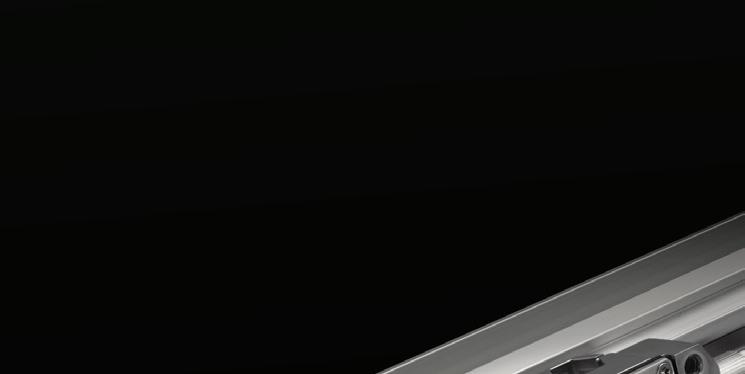



www.renishaw.com/encoders

usa@renishaw.com Renishaw Inc., West Dundee, IL 60118 © 2023 Renishaw Inc. All rights reserved.
design world trends
valuable insights from simple interfaces, such as visual indicators and digital outputs, without requiring them to upgrade existing legacy systems that are often unable to support additional data streams. However, the proliferation of data from “smart” sensors will ultimately drive the adoption of newer systems capable of handling this increased data throughput.
Do you supply any edge devices to allow for use of feedback or distributed control?
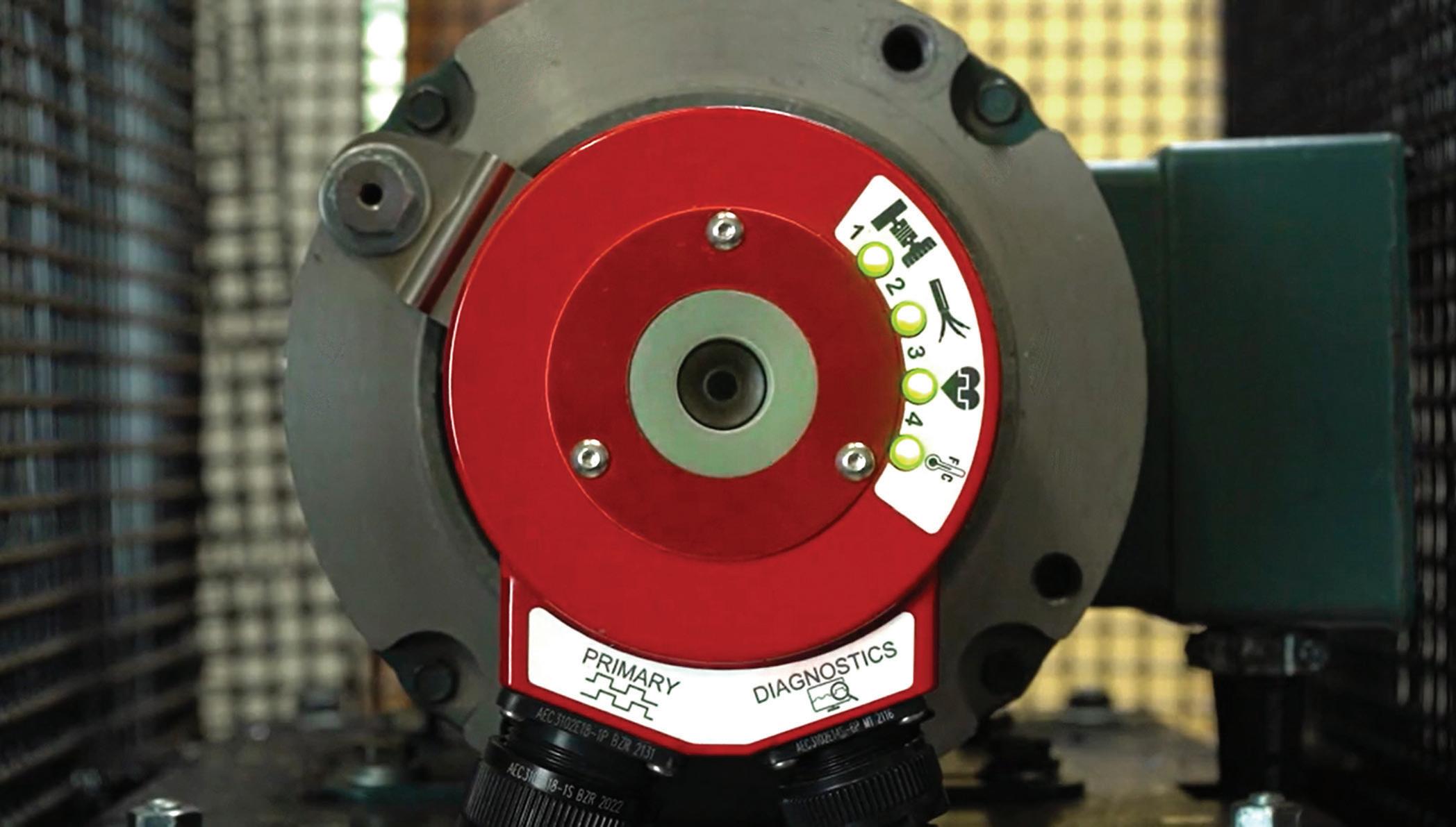
Paczkowski: Hardware at the edge can include basic sensors, intelligent instruments, field devices (such as smart solenoids and VFDs), gateways, PLC/PAC controllers, edge controllers, industrial PCs, HMIs, and more. Because each of these devices is different, they relate to each other and sometimes even overlap in functionality. There is no single device that addresses all digital transformation needs.
Emerson has developed a broad portfolio of technology encompassing all these types of devices, all coordinated with software and tested for compatibility. Using PACSystems computing devices with the PACEdge IoT enablement platform, users have a complete range of options to connect with, transport, store, analyze, and visualize data locally and in the cloud. Users can focus on their application needs, confident they are working with a platform enabling them to rapidly create buildable and supportable systems, which can scale from
small pilot projects to full data integration solutions, while meeting IT and cybersecurity requirements.
What can you say about modular and user-formatted
offerings?


Cachro: With increased machine complexity, the need to reduce inventory costs, and supply chain pressures, customers seek to consolidate inventory without exposing production to unnecessary risks due to component stockouts. As a result, we see a trend toward more programmable and customizable encoder options to consolidate multiple part numbers into a streamlined set of flexible encoders. Beyond encoder resolution, the ability to set encoder signal characteristics, such as index pulse location or phase, provides end users additional possibilities to achieve their inventory goals.

MEET THE EXPERTS
49 DESIGN WORLD — MOTION 3 • 2023 motioncontroltips.com | designworldonline.com
encoders • sensors & feedback
Encoders such as the Dynapar HS35iQ offer visual indication of specific fault conditions to reduce troubleshooting time.
Bill Paczkowski | Senior product manager for PACEdge • Emerson
Robert Cachro | Program manager – growth and innovation • Dynapar
Samuel Orozco | Product marketing manager — electric actuators • Emerson Stuart Graham | Business development specialist • HEIDENHAIN
THE MOST VULNERABLE MARKET: SEMICONDUCTOR WOES AND SOLUTIONS
Semiconductor products were more affected than any other by COVID-induced supply-chain issues felt around the world. International political tensions have only prolonged and exacerbated the problem.
Every modern gadget, vehicle, smart device, and appliance is peppered over with semiconductors galore — offering that singular function of processing power that is the defining characteristic of advanced electronic products most valued today.

The issue laid bare by COVID is how the cosmopolitan yet non-diversified nature of the semiconductor industry currently renders it vulnerable to disparate issues across the globe. In many cases, a small handful of companies execute chip processing in Europe; chip-processing machine building in California and Japan; chip testing in Southeast Asia; and assembly into the final product (where applicable) in China.
Of intensified concern now is how more than half of all semiconductors and more than 90% of all advanced semiconductors are made in the tiny island nation of Taiwan. Fabrication plants (fabs or foundries) there including Taiwan Semiconductor Manufacturing Co. (TSM) supply more than half of all the world’s semiconductors and nearly all advanced semiconductor chips (featuring extremely miniaturized features). However, the looming possibility of China’s claim of Taiwan as a province could threaten this industry.
Heightening tensions include Trump-era sanctions restricting Chinese telecommunications and electronics giant Huawei from employing U.S. software or technology and Biden-era sanctions as well
as the 2022 Creating Helpful Incentives to Produce Semiconductors (CHIPS) and Science Act. The latter designates $280B for coordinated spending over the next decade on U.S. including semiconductor R&D and commercialization ($200B); manufacturing and workforce development ($52.7B); and chip production tax credits ($24B). The act is similar to the CHIPS Act officially adopted by the European Council of the European Union in December 2022.
Read on to get Design World panelists’ views on these initiatives.
What are your views on government incentives to increase U.S. competitiveness in semiconductor manufacture?
Lackey: Although the semiconductor market is starting flat for 2023, we’re projecting a significant increase in coming months and heading into 2024 — especially as government incentives have bolstered U.S. demand forecasts. That said, we still maintain a presence in the Asia Pacific region as a global supplier of semiconductor tool products.
Walden: I support most initiatives by our government that encourage investment in manufacturing while also giving the U.S. a strategic and defensive advantage in the global economy.
Orjuela: The increasing complexity of semiconductor designs, along with rapidly increasing demand for semiconductors from every market segment, is significantly challenging fab operators and tool builders to create more advanced production while still keeping costs under control. With skyrocketing costs — building a semiconductor fabrication facility alone is estimated to cost between $15B to $20B — chip manufacturers face a dilemma: Should they buy more tools and expand plants or find ways to improve throughput using more adaptable and efficient automation technologies?
Eidelberg: Most fabs operate in Taiwan, Japan, China, the U.S., and Germany and have been in business for decades. The challenge is that fabrication centers cost billions of dollars to build and run, and they require highly skilled employees to operate. What’s more, key semiconductor-manufacturing processes (including lithography) employ extreme-precision machines needing protection from disturbances due to seismic activity, airport noise, passing trains, highway traffic, and local handling equipment.
design world trends
50 DESIGN WORLD — MOTION 3 • 2023 motioncontroltips.com | designworldonline.com
Applied Materials’ new Centura Sculpta patterning technology lets chipmakers create high-performance transistors and interconnect wiring with a single manipulatable extreme ultraviolet lithography (EUV) pattern. In short, the technology aims to achieve the finefeatured results of double patterning but at a lower cost, complexity, and environmental impact. This is just one example of recent developments in semiconductor manufacture. (Image courtesy of Applied Materials)

semiconductor production
51 DESIGN WORLD — MOTION 3 • 2023 motioncontroltips.com | designworldonline.com
To compete with existing overseas fabrication facilities, I believe U.S. funding should sponsor universities and semiconductorequipment manufacturers primed for innovative product development using AI/ML technology. Ultimately, this would allow manufacturing processes to make autonomous realtime decisions in response to uncertain manufacturing environments. IoT, 5G, cloud, and possibly cryptocurrency systems could complement such autonomous operations for better time to market, reliability, quality, productivity, and cost.


Gumas: Ruland products are used by most of the world’s largest semiconductor equipment manufacturers. New equipment design for American and European companies is primarily done in those markets with final production usually taking place in China. If some of the manufacturing moves to the U.S., there’s no direct advantage for us. The equipment that may soon
be made in the U.S. is already using high-end components from manufacturers such as Ruland. That said, as a domestic manufacturer, we’re happy to see the U.S. investing in any part of the manufacturing sector. It’s likely to stimulate growth in the various trades required to support the industry that both industry and government have underfunded over the past 30 years.
T. Schroeder: The government has made a positive step investing in domestic semiconductor manufacturing and development. Billions of dollars will flood into the U.S. marketplace to build and equip these factories. One caveat is it will take years before these factories are producing at volume. What’s more, the Biden administration’s simultaneous imposition of semiconductor export limits to China has left a supply for which the U.S. semiconductor marketplace doesn’t have demand to replace.
Kan: While I’m happy to see this development, I still feel it’s a bit myopic. The CHIPS and Science Act is a good first step, but the government should’ve learned from the COVID experience that many critical areas of the supply chain are no longer viable in the U.S. A more holistic approach must be adopted to increase the growth and innovation of the U.S. industrial market.
Andaya: Onshoring semiconductor manufacturing to the U.S. will reduce the risks associated with having a manufacturing partner in China. The biggest caveats are the ramifications regarding price.
The ASML TWINSCAN NXE:3400B supports extreme ultraviolet-based lithography to impart 7 and 5-nm features on semiconductor products with high throughput and resolution to complement ASML’s argon fluoride immersion (ArFi) technology. (Image courtesy of ASML)

52 DESIGN WORLD — MOTION 3 • 2023 motioncontroltips.com | designworldonline.com
Gottlieb: Kollmorgen both uses semiconductors and sells into the semiconductor servo motion-control market. Quality, ease of programming, and optimized power as well as motion output are all key in this market. Diversification in physical locations for semiconductor manufacturing is beneficial to the entire motion-control industry to help improve the supply consistency of industrial semiconductors used in our products.
More on the CHIPS and Science Act

Signed into law in Q3 2022, CHIPS has already spurred semiconductor research and manufacturing initiatives. If all goes well, two Arizona TSM fabs are expected to begin production of 4-nm chips next year (including for Apple) with advanced 3-nm chip production to follow in two years. As mentioned, the processes are maximally complex. Chip blueprints designed in oftproprietary software might come from halfway across the globe to be executed on specialized silicon wafers using engineered gasses.


How are your components and systems used in the equipment specialized for semiconductor production?






















































































































































































































































































































































































































Kan: In the chipmaking process, our specialized linear bearings are used for shuttling products into high-temperature areas.

T. Schroeder: We provide precision ground bright bar and support rails for linear motion in silicon-wafer manufacturing equipment.




























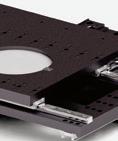









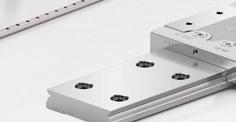





















Zaske: We fully support the onshoring of semiconductor manufacturing. Tolomatic products are used in the wafer growth process where reliability, stability, and precision can make a significant difference in yields and quality. Our Minnesota manufacturing location makes for fast leadtimes, product modifications for specific applications, and quick accessible support for North American design engineers.
Lackey: Manufacturing the components that go into larger systems and subassemblies has helped us grow our
LEMO’s hybrid configuration integrates single-mode fiber, high voltage, and low-voltage elements within the same rugged housing.
















semiconductor production
53 DESIGN WORLD — MOTION 3 • 2023 motioncontroltips.com | designworldonline.com
footprint in semiconductor tool manufacture. We’re currently supplying linear ball rail systems and ballscrew drive systems for various semiconductor manufacturing processes. These include wafer-manufacturing and lift systems, wafer tool-transfer systems, wet benches, materialdeposition equipment, and etching and chemical-process machinery. Our linear guidance and drive technologies also go into standard catalog products and linear modules.
The type of linear modules we’re supplying for semiconductor tools are mostly ballscrewdriven modules such as our PSK precision modules with integrated linear guidance and compact modules (CKK) with dual ball rail guidance. Some smaller-volume projects employ our CKR compact belt drive modules with dual rail guidance. For these designs, compactness and accuracy aren’t as critical to the application.
Beyond our standard catalog products, we partner with design engineers to provide them custom subassemblies engineered to specification. These integrate our standard ball rail systems, ballscrew
FRABA UBITO has developed a Wiegand-based energy harvester for wireless sensors in IoT networks. The harvester can capture energy sufficient to power sensor electronics that include a high-efficiency ultra-wide-band radio transmitter. New technologies such as this have spurred (and require) continual semiconductor evolution.
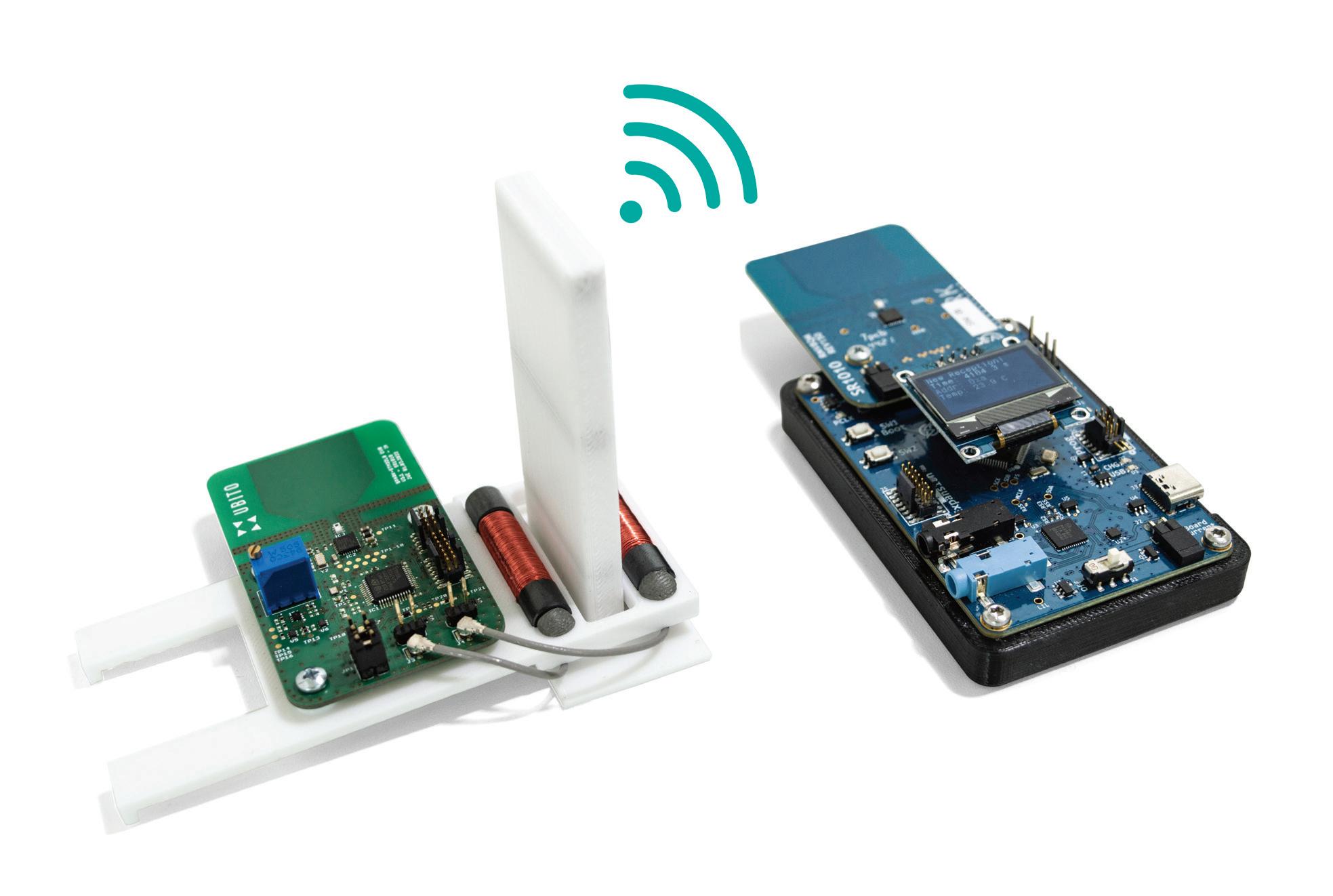
drives, and (in new tool designs) our rotary and linear motors.
Walden: Bishop-Wisecarver’s products are found in a broad range of wafer-fab and semiconductormanufacturing equipment thanks to the smooth operation and the high quality of our products.

Jung: Our components are well suited to address the increasing demands on the semiconductor industry where clean environments are required.
Continuous operation of equipment, including for wafer fabrication, is critical. That’s because failure during any semiconductor-making process can lead to expensive losses.
Complexity in semiconductor manufacture
Extreme-precision motion equipment cuts, etches, and deposits semiconductor details into silicon wafers and then transports finished chips onward.
What are some special challenges presented by semiconductor manufacture?
Orjuela: With the complexity of today’s chip processes, wafer transport must be rigorously controlled to be as stable and vibration-free as possible. Otherwise, vibration can generate particles that can contaminate the wafer or risk causing minute flaws in the wafer’s shape. At the same time, if the wafer transport is too slow, productivity suffers, and costs go up. We’ve developed deep expertise in solving the motion-control challenges for many front-end wafer handling applications. Our cross-technology portfolio combines open appbased controllers, compact servodrives specifically developed for semiconductor tool applications, and linear technology systems engineered to provide vibration-free accurate motion.
Using this portfolio, we create custom mechatronics assemblies incorporating technologies to address demanding semiconductormaking motion control, efficiency, and throughput requirements. These pre-engineered and tested assemblies help tool builders complete and deliver systems to chip manufacturers faster — and can help fab operators streamline processes
54 DESIGN WORLD — MOTION 3 • 2023 motioncontroltips.com | designworldonline.com design world trends
(Image courtesy of Dreamstime • Kittipong Jirasukhanon)




































and achieve smooth, precise motion and nanoscale positioning.
Johannes: LEMO has several interconnect products used in networking, controlling, and video systems necessary for semiconductor fabrication equipment. These products provide hermetically sealed connections for bridging different segments of the equipment while maintaining essential environmental isolation. The connection applications include vapor deposition, ion implantation, etching, and chemical-mechanical polishing (CMP).
Lassen: Many sensors and connectors on semiconductorfabrication equipment operate in a cleanroom environment. In some cases, these components’ connectors must be assembled to the cable within the cleanroom … and that makes soldering a challenge. To avoid this issue, the use of crimp contacts eliminates any solder fumes from air contamination.
In semiconductor applications, heater power and temperature measurements can also be transmitted via our rugged and compact connectors. The connectors are easy to quickly
connect and disconnect. In addition, they can accommodate type K or J thermocouple contacts — along with signal or power or even fiber optics within the same compact rugged connector housing.
Unfortunately in some highvacuum settings of semiconductor manufacture, a condition called cold welding can occur. This is when mated halves of a connector set made from the same metal material are exposed to a vacuum and (over time) the two halves become welded together where the internal components touch. Cold welding can make it difficult or impossible to uncouple. To solve this problem, LEMO offers connectors with halves of different metals.
Beasley: We offer cost-effective solutions for the most demanding motion-control applications in the semiconductor market. maxon collaborates with industry leaders and leverages motion and application knowledge to provide precise systems employing compact rotational and linear brushless dc servodrives as well as controls.
At the heart of semiconductor production is the expensive and delicate wafer itself. The wafer is rapidly moved through multiple
automated processes — including lifting, positioning, holding, etching, polishing, and inspection from raw material to circuit chip end product — for maximal throughput and accuracy within tight size constraints.

Read the rest of our experts’ insights in this series by visiting motioncontroltips.com and searching on Uzzolino. Also be sure to watch Design World for a follow-up article on automation in consumer-product design and distribution.
MEET THE EXPERTS
Justin Lackey | Product manager — systems • Bosch Rexroth
Kelly Walden | V.P. of manufacturing • Bishop-Wisecarver Corp.
Jonathan Schroeder | Executive V.P. • PBC Linear
Pamela Kan | President and owner • Bishop-Wisecarver Corp.
Richard Johannes | Director of engineering and innovation • LEMO USA
Steven Lassen | Product & applications manager • LEMO USA
Tom Schroeder | Executive V.P. • PBC Linear
Andy Zaske | V.P. of sales and marketing • Tolomatic
Boaz Eidelberg | CTO • SAAR Inc.
Nathan Andaya| Director — Techline strategic business unit • LINAK U.S.
Camilo Orjuela | Industry segment manager – semiconductor and solar • Bosch Rexroth Corp.
Chris Gumas | Director of marketing • Ruland Manufacturing
Mike Beasley | U.S. semiconductor production • maxon
Andrew Jung | Director of engineering • Bishop-Wisecarver
Chris Gottlieb | Director — Drives and controls • Kollmorgen
56 DESIGN WORLD — MOTION 3 • 2023 motioncontroltips.com | designworldonline.com
Bosch Rexroth addresses motion-control challenges for many front-end wafer handling applications.
design world trends
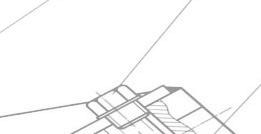













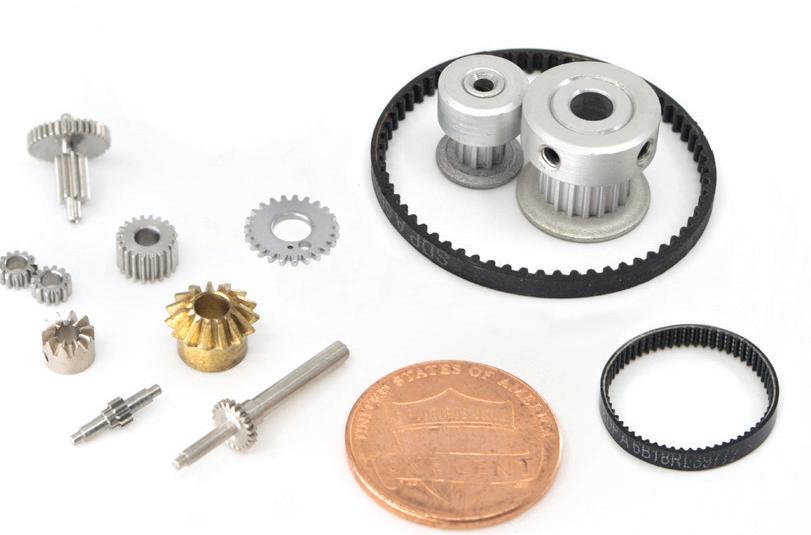













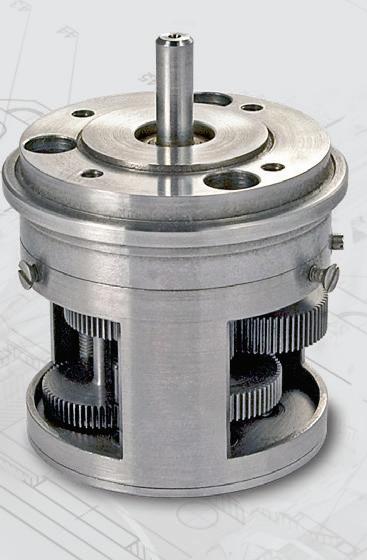













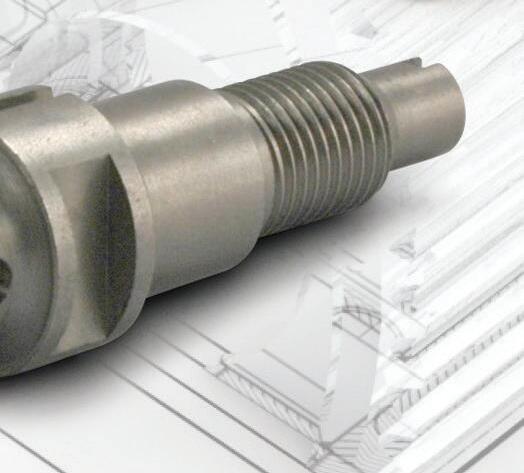





Manufacturing Precision Gears, Mechanical Components, and Custom Drive Assemblies for the Aerospace, Medical, and Automation Industries Stock and Custom – One Single Source Engineering and Manufacturing Partner to OEMs Worldwide Prototype to High-Volume Production Gears & Gearboxes Timing Belts & Pulleys Couplings Miniature Gearheads Planetary Gearheads Shafting and Shaft Accessories Subassemblies for Integration into Larger Systems Est. 1950 ISO 9001 + AS9100 ITAR Compliant-DDTC Registered NIST SP 800-171 RoHS and REACH DFARS compliant components as required We have the know-how, state-of-the art manufacturing facility, and CNC machinery you need! Call Us at 516-328-3300 or Shop SDP/SI at www.sdp-si.com
AGRICULTURE AND OFF-HIGHWAY AUTOMATION

58 DESIGN WORLD — MOTION 3 • 2023 motioncontroltips.com | designworldonline.com design world trends
With the rise of smart farming in agriculture, equipment manufacturers face the challenge of maximizing machine uptime in harsh and extreme environments. Companies are leveraging different types of motion systems to improve reliability in their designs, with technology evolving alongside farming practices.
Such systems take advantage of advancements across automation more generally, which includes robotics, artificial intelligence (AI) systems, Internet of Things (IoT), as well as advanced sensor technologies.
The editors at Design World recently asked a number of leading automation and motion control manufacturers involved in the agriculture and off-highway automation industries about trends they’re seeing in the industry. Below are their insights.

Has your company provided components or engineering support for automated farming or off-highway designs?
Gallant: Our dc motors and gearmotors are used in many different agricultural automation systems. Applications range from livestock scrubbing devices to help keep animals clean to moveable fences to robotic farming equipment like robots and plot planting devices. In fact, our dc gearmotors can be found in ATVs and UTVs alike. Some typical functions carried out by our motors are in winches and snowplow adjustment.
Brimage: Thomson continues to supply a wide range of linear motion products and systems into agricultural operations. A new product we offer for farming, all-terrain vehicles, and utility task vehicles are our polymer-bushing linear bearings. These components offer machine designers a reliable yet
59 DESIGN WORLD — MOTION 3 • 2023 motioncontroltips.com | designworldonline.com agriculture & off-highway automation
A disc cultivator for robotic soil cultivation uses two rows or harrows with vertical continuous protection. (Image courtesy of Pavlo Baliukh)
economical option for applications in which moment load is noncritical or where contamination is a concern.
Mowry: Agriculture automation is a growing industry for us. Our linear systems have been used to move lighting systems for indoor growing operations, and our delta robots have been used on weed-zapping robots to remove weeds via laser in the field. We’ve also supported applications with our linear robots; the latter carry cameras that take images and videos of particular plants or flowers so end users can remotely choose which they want to purchase.
Brimage: Polymer-bushing linear bearings are well suited for applications that require high static and shock load resistance, corrosion resistance, and chemical resistance to oil and grease. The polymer liner in these bearings makes them inherently selflubricating, which is great for wet and dirty environments. Also, the grooved design allows thermal expansion and act as dirt channels that allow the bearings to remain operational in the presence of dirt.

Walden: Bishop-Wisecarver’s
products are rugged and suited to harsh and extreme environments. As such, they’re found in a wide variety of agricultural applications — including self-guided agricultural equipment, automated planting and harvesting systems, and indoor farming systems.
Umeno: Kollmorgen has supported vertical and smart farming applications focused on high-value crops such as herbs and fruits. Our motion control solutions have high accuracy and energy efficiency to let machine builders provide automation for more efficient land use and less waste. Especially in harvesting applications, the demand for application-specific robotic arms is growing. We are addressing the need by co-developing with our customers and supplying frameless motor products that can be used in custom robotic arms.
Gottlieb: We sell into highrequirement markets such as smart farming, turf management, and other challenging markets. Our engineering team can work directly with engineers to select the best solutions for motion control in these markets.
Our distribution channel might be selling into CBD markets, but that’s not a market we knowingly play into today. One note on CBD: Currently, anything cannabis related is still technically illegal at the federal level. There are companies making solutions in the CBD space, but unless federal regulation catches up to state regulation, there is legal risk in making equipment for these machines.
Walden: Simplicity bearings are used in farming equipment for linear guidance of external farm implements and for operator cab linear movement or control mechanisms because of the impervious nature of a plain bearing in harsh environments. Our cam roller products (typically HeviRail or V-Rail) are also used as an alternative robust roller solution to both agricultural and off-highway trencher equipment.
Maina: PBC Linear has seen increased demand for linear actuators that support automated agricultural processing systems related to indoor commercial vertical farming. We supply linear guide systems and actuators to this

60 DESIGN WORLD — MOTION 3 • 2023 motioncontroltips.com | designworldonline.com design world trends
industry — typically for automating the motions of plant handling, directing light sources, moving aeroponics, spray irrigation, and fertigation nozzles. These automated efforts promote green energyconservation methodology, which looks to provide only the necessary resources and nutrients to plants without waste, and to promote the proper recipe for food supply and recreational plants for expedited indoor growth. We offer corrosion-resistant solutions using Redi-Rail and V-Guide linear guides as well as SIMO Gliding Surface Technology (GST).
We’ve also seen increased demand for linear actuators for autonomous vehicles in agricultural processing. Automating such tasks with autonomous vehicles reduces the amount of labor that farmers would typically need to invest in maintaining a healthy yield of crops. We also continue to support more traditional agricultural designs (including forestry and heavy equipment as well as construction vehicles) by providing linear guidance that bears heavy loads and impacts during soil tilling, the planting of seedlings, and road construction.


Andaya: LINAK is on the leading edge when implementing electric linear actuators in agriculture and off-highway markets. The intelligence in our actuators lets them communicate via Controller Area Network (CAN) bus to vehicle systems, and the actuators can support implementation of agriculture and off-highway companies’ electrification strategies.
Are conveyors seeing increased use in agricultural applications?
Canny: Indoor farming is all about maximizing food
production per acre, but growers who want to further increase yields should consider growing upward with the help of conveyor technologies that make use of the available vertical space within a facility. In fact, indoor vertical farming is expected to grow to $9.7B worldwide by 2026 from $3.1B in 2021, due to higher yields when compared to conventional farming, its capacity for year-round crop production, and advances in lighting and other technologies.
Conveyors are one of the simplest and quickest productivity improvements a fast-growing business can implement, and are especially suited to the vertical farming industry. Simple roller conveyors or overhead I-beam trolleys can have a payback of days or weeks, while larger custom-built systems often have payback periods of only three to six months. Ultimation is currently building the material handling system for what is believed to be the world’s largest indoor vertical farming facility.
Perhaps the most obvious way conveyor technologies can help increase indoor farming productivity is by taking advantage of unused vertical space above a work area. Overhead conveyors can lift growing trays when they’re not being actively managed and bring them back to operator level for tending and harvesting, allowing more produce to be grown within the same footprint.
Conveyors can also help reduce the manual labor of carrying items by hand, quickly and safely transporting plants from point A to point B. Systems can be engineered to seamlessly integrate with harvesting and packing equipment available through Ultimation’s expansive partner network. Ultimation uses materials made of galvanized steel, zinc-plated
61 DESIGN WORLD — MOTION 3 • 2023 motioncontroltips.com | designworldonline.com
agriculture & off-highway automation
Corrosion resistant offerings from PBC Linear include a plain bearing with a standard anodized aluminum housing that stands up well in most situations. For more extreme environments, there is the option of 316 stainless steel housing combined with 316 stainless steel shafting for corrosion resistance.
materials, and powder-coated frames which are approved for food-grade applications and are easily cleaned‚ another productivity savings for indoor farmers. Ultimation can also design systems for hanging towers and growth pods made of food-grade plastic when required.

Different types of conveyor systems are typically used for different parts of the growing process. For example, the sections of the farms where plants are sitting still can use simple, standardized material handling systems. Vertical format conveyors such as hanging towers or horizontal formats such as growing trays can be customized to match the grower’s needs. Once plants are grown, more sophisticated technologies such as automated motorized conveyors and automatic storage and retrieval systems are needed to safely move produce to the harvesting area. The most commonly used industrial automation equipment for indoor farming are gravity roller, belt, and skate wheel or flow rail conveyors. These systems use the force of gravity to move the load, allowing the product to roll along the upper surface.

More recently, the technology used in larger vertical farming systems is including motorized and overhead conveyors that take advantage of the generally unused vertical space above the working area. Using curved sections or even lifters, they bring produce down to operator level and back up to higher elevations as needed. Power and Free conveyors are the ultimate in space and volume optimization for vertical farming systems as they enable tight concentration of product in some areas while also enabling separation of the products for movement
to processing areas. The best planned and best-run indoor farming facilities consider the product’s growth cycle and will likely use a combination of conveyor system designs to maximize productivity. Our engineers understand the economics of indoor farming and can help growers design, build, and implement material handling solutions that meet their needs and budget.
MEET THE EXPERTS
Chris Gottlieb | Director — drives and controls • Kollmorgen
Dave Walden | Applications engineer • PBC Linear







James Gallant |Director of operations • ISL Products International Ltd.
Jeff Maina | Senior applications engineer • PBC Linear
Kelly Walden | V.P. of manufacturing • Bishop-Wisecarver Corp.
Lindsey Brimage | Portfolio program manager • Thomson Industries, Inc.
Matt Mowry | Product manager — drylin linear bearings • igus
Nathan Andaya | Director — Techline SBU • Linak U.S.
Richard Canny | President • Ultimation Industries Inc.
Yoshitaka Umeno | Global market manager — medical and robotics • Kollmorgen
design world trends
LINE SHAFT CONVEYOR BELTS Original Equipment and Connectable CUSTOM MADE IN INCH, METRIC & O-RING SIZES • Round, Flat and Connectable Polyurethane Belts • Very Clean Operation • Eliminates Tensioning Devices • Exceptional Abrasion Resistancexxxxxxxxxxxxxx pyramidbelts.com POWER TRANSMISSION-PART CONVEYING PYRATHANE® BELTS Lifetime Warranty Against Manufacturing Defects AN ISO 9001 CERTIFIED COMPANY 641.792.2405 sales@pyramidbelts.com 62 DESIGN WORLD — MOTION 3 • 2023
DESIGN SUPPORT, TRAINING AND e -LEARNING TRENDS FOR 2023
We recently asked several industry experts about trends they’re seeing in engineering training, software tools, and support. Here’s what those experts had to say.
Stroll through any major tradeshow floor and you’ll overhear countless conversations about training the engineers of the future. It’s been that way for a while. But the conversations about preparing young students to replace an aging engineering workforce have reached a fever pitch.
To even stay relevant, let alone competitive, companies must invest as much into their training and support as they do in their products and services. To learn more about how that’s being done at the highest level, we asked several industry experts about the initiatives they’re taking to remain on the cutting edge.
Describe your involvement in training and eLearning.
Kan: We just built a state-of-the-art training center at our factory in California that can comfortably accommodate up to 80 people at a time. See our home page, www.bwc.com, to sign up for factory training, lunch and learns, and one-on-one video training.
Oran: Festo Didactic offers hands-on training systems primarily for two-year degree program automation labs and provides mechatronic training to manufacturers, processors, and OEMs. Of course, Festo provides training on its own products, but that training is separate from Festo Didactic. Festo Didactic is dedicated to raising knowledge and skills in mechatronics. Most frequently, we increase the skill levels of manufacturing personnel on PLCs, fluid power, electric motion, and industrial maintenance.
We now offer a robust digital learning platform. Festo LX (Festo Learning Experience) offers traditional eLearning and eTheory courses.

63 DESIGN WORLD — MOTION 3 • 2023 motioncontroltips.com | designworldonline.com design support • training & e-learning
Festo training and e-learning for Industry 4.0. (Image courtesy of Festo)
How have your training approaches changed since COVID?
Gumas: During COVID, we built the Ruland Certificate Course that anyone can use. The challenge was creating a program that could satisfy everyone in a time-efficient fashion. Before COVID, all our training was in-person. The Ruland Certificate Course reflects the in-person training with a mix of videos, charts/ diagrams, and text. We still feel in-person is the best way to administer training due to the questions we get, but as a mid-size manufacturer, we do not have the resources to do every training in-person. It is still by invitation only — anyone can email us if they’re interested — but we will release it to everyone over the next few years as we develop a better understanding of how users interact with it.
Gallant: These design notes are dc motor/ gearmotor focused but catered to the engineering community to help educate engineers at all levels. Since this has always been a platform on our website, there really was no change during COVID. We were able to educate engineers without delay.

Gottlieb: Kollmorgen has returned to in-person training alongside our virtual trainings. Both options have been popular. Many distributors, sales reps, and OEM engineers appreciate being able to ask a question of the engineering

team in the moment, in person, while looking at the servo system. However, virtual satisfies the basic needs of those who don’t have the opportunity cost to travel as everyone has more work than they can handle. So, we have been happy with offering both methodologies of classes. Most of our internal Altra Business System and behavioral trainings are virtual.
Kaestner: Microchip hosted its annual in-person technical conference for over two decades in various locations around the globe. That conference gave system design engineers very high-level extensive product information, hands-on training, and the opportunity to network with industry experts from within Microchip and our Design Partner Network. COVID had a significant impact on this. We had to cancel the conference in 2020 and started to convert the material into online lessons shared on a learning platform for our clients. Starting with 25 courses in December 2020, we now cover more than 110 topics on Microchip University.
Eidelberg: We are planning a series of short online, motivational AI/ML courses for young mechatronics engineers. Training will focus on how to work as an interdisciplinary team member in an autonomous product development project. Our objective is to reach some of our students, who may find interest
in our specific exoskeleton activities, so they may join us for an exciting experience of next generation, RL product development.
Paloian: We also have an Academic Program that supports the training and use of Microchip tools and technologies in collegelevel engineering programs. With COVID, we saw a move to more low-cost student-owned tools to support remote learning. There were many benefits to this approach (flexible scheduling of lab assignments and access to the tools for other projects and general tinkering), which enabled students to delve
design world trends
Festo Metrology apprenticeships and technical learning. (Image courtesy of Festo)
64 DESIGN WORLD — MOTION 3 • 2023 motioncontroltips.com | designworldonline.com
deeper into the technology than is usually afforded by more centralized shared labs. Many schools plan to continue some aspects of this approach post-COVID.

Luchars: ECM PCB Stator technology will offer our PrintStator electric motor design platform, PrintStator, to the public as a SaaS product in 2023. In the interim, ECM is undergoing a beta test of PrintStator with a select group of partners. As part of that process, we’re training and soliciting feedback from designers and engineers of xx companies. A core component of the beta test is extending the resources of ECM’s team to train partners on PrintStator’s full electric motor design and optimization capabilities.
Oran: Festo Didactic sees greater emphasis on digital learning, which is a combination of traditional eLearning online courses along with simulations, augmented reality (AR), and virtual reality (VR). Foundational to this trend is the fact that the first digital generation is entering the workforce. They receive most of their information from their phones, tablets, and laptops. Digital learning feels natural to them.
Walden: We maintain valuable educational content through our YouTube channel, including education sessions and application stories. We host webinar events to educate audiences on the application and use of our products and new technologies/ offerings. We are developing additional content as part of Bishop-Wisecarver University (BWU) for targeted education
which can be delivered virtually or on-site in our dedicated educational facilities.
Umeno: As customers have increased their requests for face-to-face visits throughout the last year, Kollmorgen has been able to provide flexibility and options to our customers with our strong offering of online training tools. The improved online tools with a wide range of videos, webinars, and blogs available in different languages allow us to provide an excellent service to our global customer base.
Melanson: Training — when done at the correct time, to the correct audience, and with the correct content — can be very powerful. Historically, training has been done in the classroom setting. What is being discovered is that people are learning in different ways: shorter time frames, targeted content — and through video and other rich media means.
What is your advice for end users and OEMs experiencing the skills gap?
Oran: The skills gap — the difference between the knowledge and skills of workers and the knowledge and skills needed in today’s machine building, manufacturing, and processing industries — is too wide. It’s mathematically impossible for two-year institutions to graduate enough people. The public simply does not understand that careers in manufacturing can be rewarding both financially and meaningfully. This leads to fewer people entering the manufacturing and processing industries.
What are your candid thoughts about industrial apprenticeships?
Oran: Apprenticeship programs are an important way to develop your workforce, close the skills gap, and find productivity gain. Apprenticeships are remarkable for what they accomplish and the financial support that is available.
I urge company executives to think of apprenticeships as a long-term conversation with prospective employees. On nonclassroom days, apprentices are exposed to company culture and industry values and, while in the classroom, apprentices learn valuable skills.
Tell us about any selector, sizing, or sales software you use or offer to customers. In what ways have you assumed customization and systems as a service (SaaS) work for machine builders?
Horn: The advantage for customers to outsource the motion control system (partly or completely) is to reduce risk, costs, and time. If you outsource the design of such a system with maxon, you get access to 60 years of expertise and know-how in motion control technology.
Gottlieb: Motioneering is a world-class sizing software so beloved that I knew customers using other motion equipment utilizing Motioneering to determine current needs and then trying to cross-reference that value to competitors’ products. We have an intuitive tool that gives engineers what they need to know fast — shortening design time.
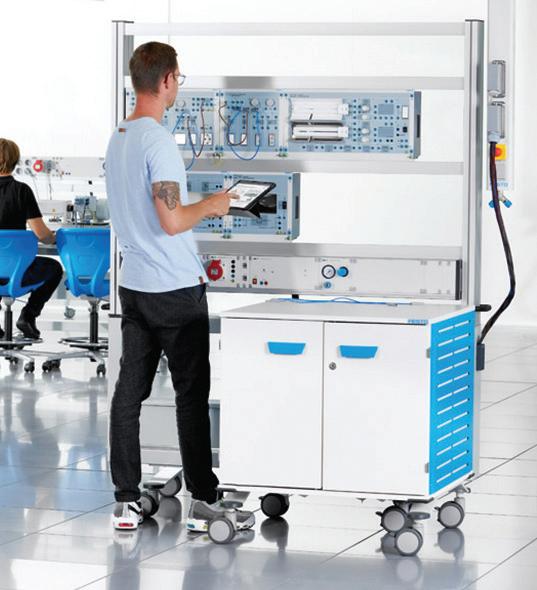
design support • training & e-learning 65 DESIGN WORLD — MOTION 3 • 2023 motioncontroltips.com | designworldonline.com
Festo training and e-learning Apprentices working on Didactic lab modules. (Image courtesy of Festo)
Horn: As robotics and AI become increasingly popular and widely used, the number of actuator systems needed also rises. The number of requirements increases with the number of applications, and as resources are tight, design and manufacturing services play a key role in the success of a customer’s end product.

Walden: We offer online product selection and configuration tools, allowing engineers to design exactly what they need and configure a specific part number for easy ordering. CAD models are generated during the configuration process and can be downloaded by the machine builder for easy integration into their equipment design.
Horn: For custom development, you must offer more services to be successful. This includes verification and validation services for the design, risk assessments, design history files, production feasibility studies, production history files, supply chain analysis, and many more.
Describe any programs you support to educate young engineers.
Zaske: Tolomatic quickly pivoted during the pandemic to offer a lot of on-line training opportunities for our distribution partners as well as industry engineering
contacts. We coined the phrase “ToloTalks” to help identify these sessions. As time has worn on we continue to adjust our approach to include videos, shorter segments (sometimes a couple minutes in length), as well as going back to more in-person training sessions.
Sandys: The thirst for knowledge is greater than ever. After two years of interruptions due to the pandemic, it was an incredible experience to attend Maker Faire in Rome last fall, where attendance was stronger than anticipated and makers were back in full force to learn, grow, innovate, and unite as a community. The caliber of students who attended and the innovations they’re working on is mind-boggling.
Andaya: We promote and give electric linear actuators to student programs. For example, we support the 1/4 scale tractor competition led by the American Society of Agricultural and Biological Engineers or ASABE for engineering students. For this competition, we sponsor and provide actuators to student groups. We also attend to assist engineering students who have questions about the actuators.
Sandys: Arduino is all grown up. Arduino has really brought their three-pronged strategy to life.
Arduino has always been strong in both the maker and education spaces, but their recent securement of $32 million in funding will ramp up sales of their enterprise-based solutions, called Arduino Pro. Almost every maker supplier including Adafruit, SparkFun, Pimoroni, Kitronik, and SEEED Studios has contributed to the ecosystem, making it robust and widely supported. With the recent addition of the Raspberry Pi Pico W boards, makers now have access to wireless capability in a small form factor. At Maker Faire Rome, demonstrating everything from infinity mirrors to lightsabers, we helped attendees understand
MEET THE EXPERTS
the flexibility of this exciting product portfolio.
Resources to help makers are plentiful. Anyone can go to GitHub or Instructables and find files for almost anything. Digi-Key’s Maker. io provides information, projects, ideas, tools, and more to help and inspire makers. There are so many great resources out there to help people take projects step-by-step and start their maker process.
Digi-Key and Make: have also released the new Boards Guide and companion Digi-Key AR augmented reality app, available in both the Apple App Store for iOS devices and the Google Play store for Android-based mobile devices.
Nathan Andaya | Director — Techline SBU • LINAK U.S.
Boaz Eidelberg | CTO • SAAR Inc.
James Gallant | Director of operations • ISL Products International Ltd.
Chris Gottlieb | Director — drives and controls • Kollmorgen
Chris Gumas | Director of marketing • Ruland Manufacturing
Carsten Horn | Applications engineering manager • maxon
Clemens Kaestner | European training manager • Microchip Technology
Pamela Kan | President and owner • Bishop-Wisecarver Corp.
Robert Luchars | V.P. of business development • ECM PCB Stator Technology
John Melanson | V.P. application engineering • SKF
Tony Oran | V.P. of sales North America • Festo Didactic
David Paloian | Academic program manager • Microchip Technology
David Sandys | Senior director — technical marketing • Digi-Key Electronics

Yoshitaka Umeno | Global market manager • medical and robotics • Kollmorgen Corp.
Kelly Walden | VP of manufacturing • Bishop-Wisecarver Corp.
Andy Zaske | V.P. of sales and marketing • Tolomatic
66 DESIGN WORLD — MOTION 3 • 2023 motioncontroltips.com | designworldonline.com
design world trends
Digi-Key Team at Maker Faire Rome.
Kitronik Robot soccer demo at Maker Faire Rome.



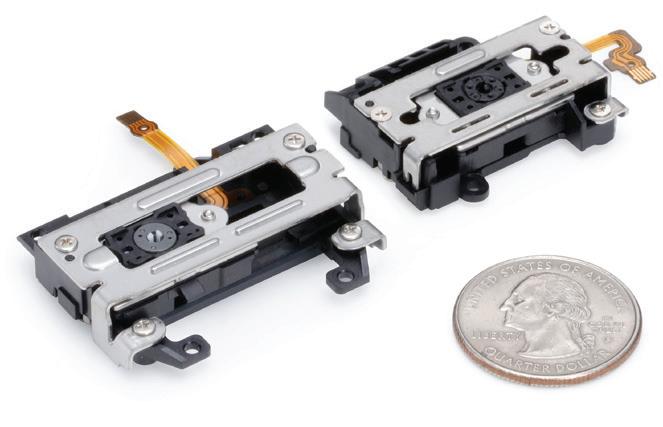
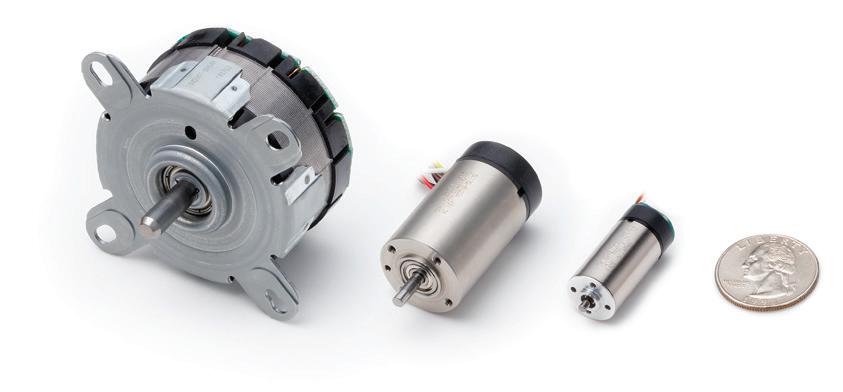



Meeting Customer Needs with Diverse Product Categories and Customized Products Linear Piezo Motor DC Brushless Servo Motor Canon Precision proprietary technology and internal production systems provide our partners with micro-motor design flexibility, quality control and rapid delivery. Canon Precision motors can also be equipped with optional gear units and encoders and can be optimized to meet your size, speed, gear ratio and reliability requirements. CANON U.S.A., INC. Motion Control Products 3300 North 1st Street • San Jose, CA 95134 TEL: 1-408-468-2320 • Email: motors@cusa.canon.com www.usa.canon.com/ Canon is registered trademark of Canon Inc. in the United States, and may also be registered trademarks or trademarks in other countries. All other referenced product names and marks are trademarks of their respective owners. Specifications and availability subject to change. Not responsible for typographical errors. ©2021 Canon U.S.A., Inc. All rights reserved.
AD INDEX
volume 9 number 1
SALES
Jami Brownlee jbrownlee@wtwhmedia.com 224.760.1055
Jim Dempsey jdempsey@wtwhmedia.com 216.387.1916
Mike Francesconi mfrancesconi@wtwhmedia.com 630.488.9029
LEADERSHIP TEAM
Publisher Mike Emich memich@wtwhmedia.com 508.446.1823 @wtwh_memich
Managing Director Scott McCafferty smccafferty@wtwhmedia.com 310.279.3844 @SMMcCafferty
Jim Powers jpowers@wtwhmedia.com 312.925.7793 @jpowers_media
Courtney Nagle cseel@wtwhmedia.com 440.523.1685
EVP Marshall Matheson mmatheson@wtwhmedia.com 805.895.3609 @mmatheson
FOLLOW US ON
FOLLOW THE WHOLE TEAM ON TWITTER @DESIGNWORLD
68 DESIGN WORLD — MOTION 3 • 2023 motioncontroltips.com | designworldonline.com Ace Controls 21 ACS Motion Control 15 AllMotion ................................................................................. 9 Automation Direct ................................................................... 1 Beckhoff Automation ...........................................................IFC Canon U.S.A. Inc 67 CGI Inc. 31 Chieftek Precision 53 CMT 10 Del-tron ................................................................................. 39 Diequa ................................................................................... 35 Digi-Key Electronics ................................................................ 3 Encoder Products Company 47 Faulhaber 55 Harmonic Drive 29 iNTECH Power-Core 41 KHK USA Inc. ......................................................................... 22 maxon ................................................................................... BC Mitsubishi Electric Automation ............................................. 19 mk North America, Inc. 13 Motion 45 MOTUS LABS 33 NB Corp 7 PBC Linear ........................................................................... IBC PI (Physik Instrumente) LP ..................................................... 27 POSITAL FRABA .................................................................... 17 Pyramid, Inc. 62 Renishaw 48 SEW-Eurodrive 5 Sorbothane 43 Stock Drive Products/Sterling Instrument ............................. 57 Zero-Max, Inc. ......................................................................... 2
Precision and Simplified Assembly at the Size You Need




Redi-Rail ®

Practical Precision in Linear Motion

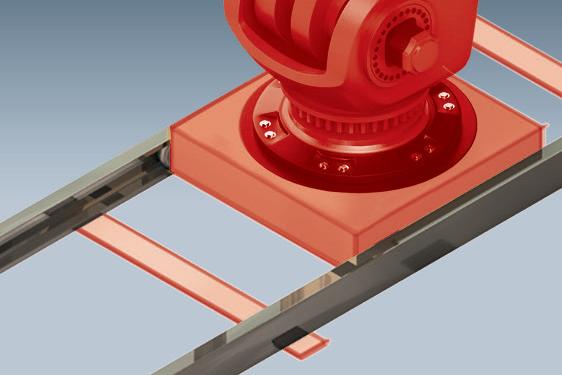
Precision aluminum rails with hardened steel races ensure a lightweight design without sacrificing strength. Gothic arch rollers with sealed double-row ball bearings provide high load capacity and reliable operation in contaminated environments. The carriages come standard with 3-rollers or can be upgraded to a 4-roller or 5-roller carriage. Patented preload adjustment allows for adjustments without the need for disassembly.
Built for extreme high-load capacities and industrial strength handling, the Hevi-Rail system is easy to mount, align and use. High radial and axial load capacities ensure a long and productive life under continuous use. Available in a range of sizes from the smallest 52.5 mm diameter HVB-053 bearing to the largest 149 mm diameter HVB-063 bearing making the Hevi-Rail a perfect solution for heavy load and lift applications.




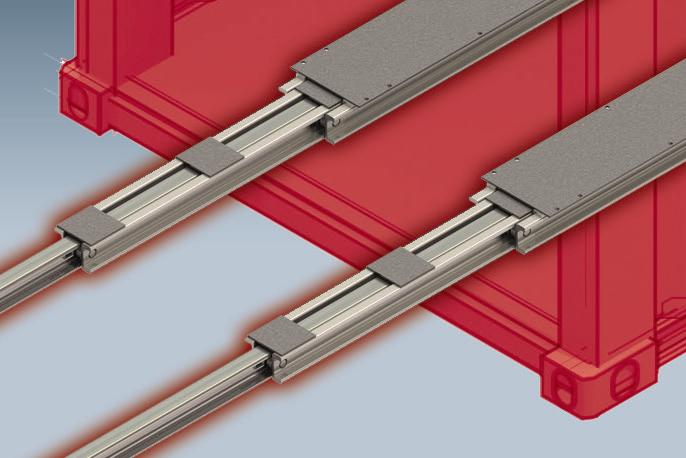
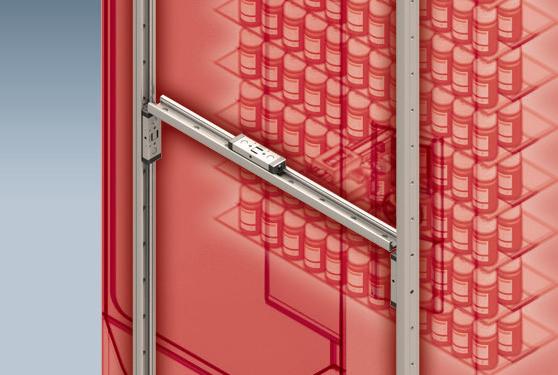


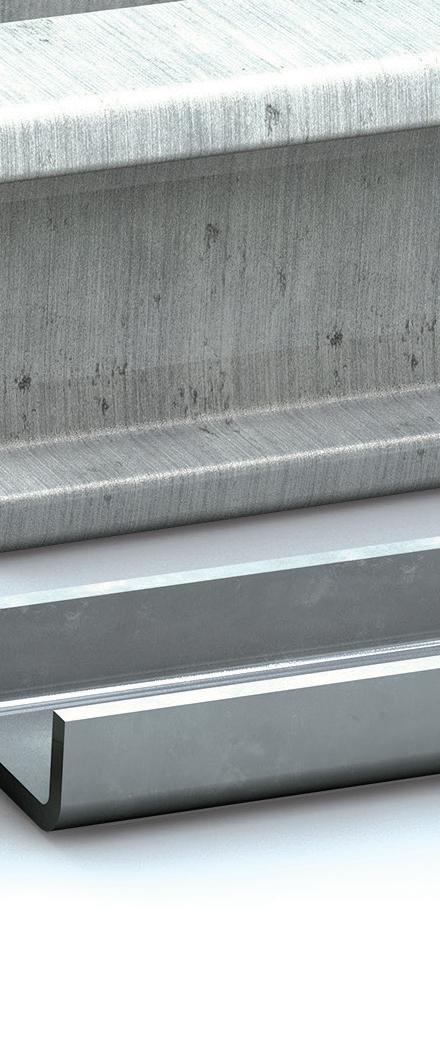


6402 E. Rockton Road, Roscoe Illinois 61073 USA • +1.800.962.8979 • pbclinear.com FREE Product Sample at: FREE Product Sample at: bit.ly/Redi-RailDW2023 bit.ly/Hevi-RailDW2023
Hevi-Rail ®
The Apex Weightlifter in Linear Motion














































































































































































































































































































































































































































































































































































































































































































































































































































































 By Brian Dahmer | Director of application engineering • SKF
By Brian Dahmer | Director of application engineering • SKF







































































































































































































































































































































